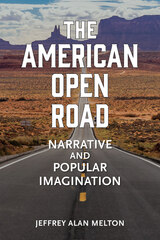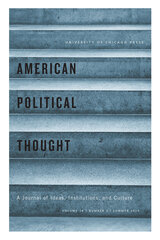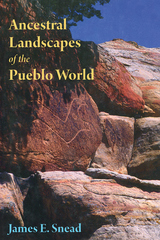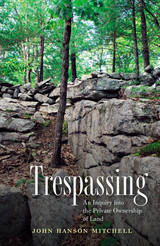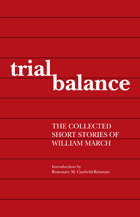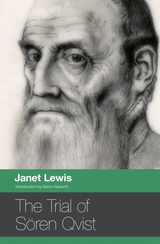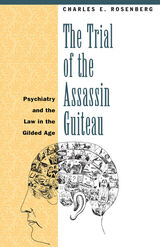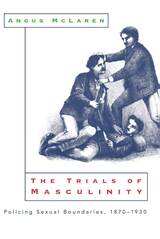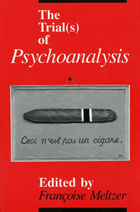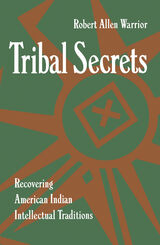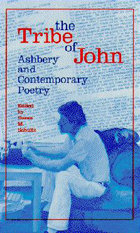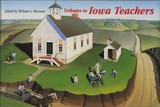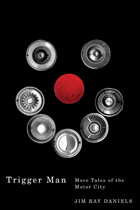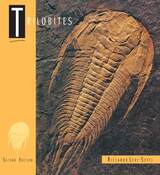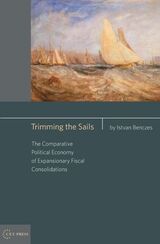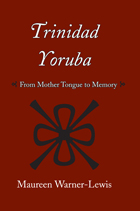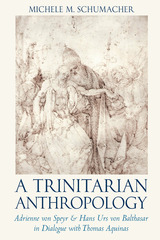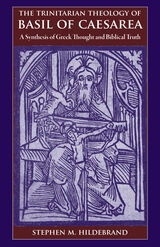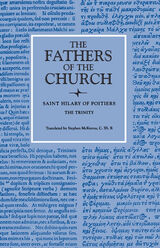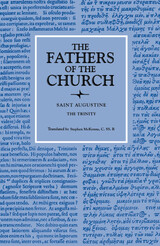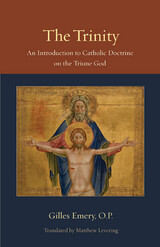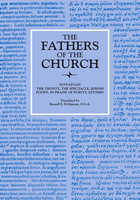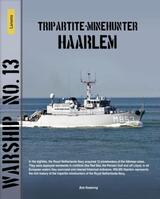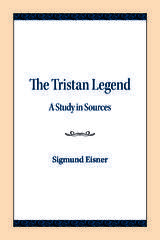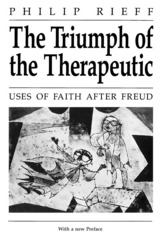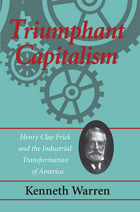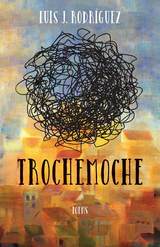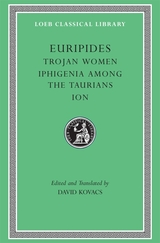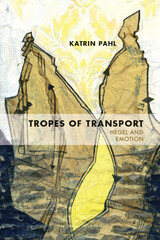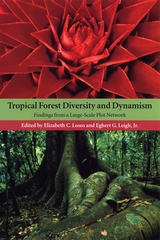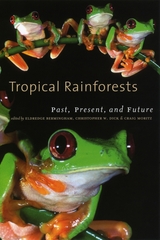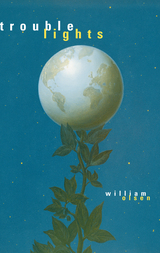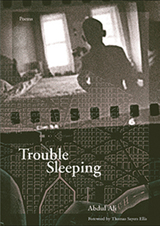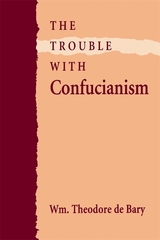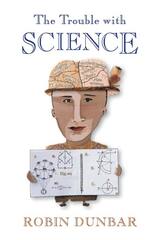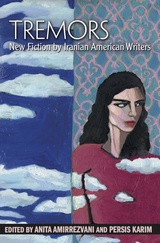 Tremors: New Fiction by Iranian American Writers
Anita Amirrezvani
University of Arkansas Press, 2013 This groundbreaking anthology brings together twenty-seven authors from a wide range of experiences that offer new perspectives on the Iranian American story. The authors in Tremors represent the maturing voice of Iranian American fiction from the vantage point of those who were born and raised in Iran, as well as those writers who reflect a more distant, but still important, connection to their Iranian heritage. Altogether, these narratives capture the diversity of the Iranian diaspora and complicate the often-narrow view of Iranian culture represented in the media. The stories and novel excerpts explore the deeply human experiences of one of the newest immigrant groups to the United States in its attempts to adjust and assimilate in the face of major historical upheavals such as the 1979 Iranian revolution, the hostage crisis, and the attacks of September 11, 2001. The stories set in Iran testify to the resilience, dignity, and humor of a people rich in history and culture.
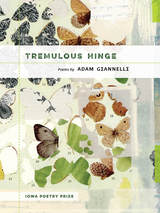 Tremulous Hinge
Adam Giannelli
University of Iowa Press, 2017 Rain intermits, bus windows steam up, loved ones suffer from dementia—in the constantly shifting, metaphoric world of Tremulous Hinge, figures struggle to remain standing and speaking against forces of gravity, time, and language. In these visually porous poems, boundaries waver and reconfigure along the rumbling shoreline of Rockaway or during the intermediary hours that an insomniac undergoes between darkness and dawn. Through a series of self-portraits, elegies, and Eros-tinged meditations, this hovering never subsides but offers, among the fragments, momentary constellations: “moths all swarming the / same light bulb.”
From the difficulties of stuttering to teetering attempts at love, from struggling to order a hamburger to tracing the deckled edge of a hydrangea, these poems tumble and hum, revealing a hinge between word and world. Ultimately, among lofting waves, collapsing hands, and darkening skies, words themselves—a stutterer's maneuvers through speech, a deceased grandfather’s use of punctuation—become forms of consolation. From its initial turbulence to its final surprising solace, this debut collection mesmerizes.
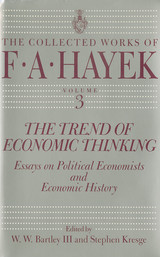 The Trend of Economic Thinking: Essays on Political Economists and Economic History
F. A. Hayek
University of Chicago Press, 1991 The Iron Curtain has been cast aside. The Berlin Wall has fallen. Germany has been reunited. And F. A. Hayek's forceful predictions of the inevitable failure of socialism and central economic planning are now rendered irrefutable. Yet Hayek still rightfully cautions us to heed his arguments, warning that "in economics you can never establish a truth once and for all but have always to convince every generation anew."
The Trend of Economic Thinking captures Hayek's views on political economists and economic history—on Mandeville, Hume, Cantillon, Adam Smith, and Henry Thornton. Framed by insightful editorial notes, fifteen newly collected essays—including five previously unpublished pieces and two others never before available in English—provide a fascinating introduction to the historical context of political economy and the evolution of monetary practices. In a highlight of the collection, "On Being an Economist," Hayek reflects on the influence of economists, the time required for new ideas to take hold, the best way to educate economic theorists, and the need to follow one's own interests, often in opposition to fashionable beliefs. As always, the words of this outspoken scholar are sure to provoke debate.
Trends and Variations in Fertility in the United States
Clyde V. Kiser, Wilson H. Grabill, and Arthur A. Campbell
Harvard University Press Basing their study on data from the 1960 U.S. Census and other surveys, the authors discuss the medical and biological aspects of fertility (defined as the actual number of children a woman has borne), the prevalence and effectiveness of family planning, and the relation between fertility and such socioeconomic factors as race, age, and education. They also include an analysis of the data concerning illegitimacy.
Trends in American Secondary Education
Leonard V. Koos
Harvard University Press Leonard Koos, in this first Inglis Lecture, passes in review certain present trends in secondary education—the popularization of the secondary school, expansion and functional differentiation of the training program, individualization of instruction, improvement of teaching method, development of allied activities, educational and vocational guidance, and the downward and upward extension of the period of secondary education—and, as each comes into the field of attention, inquires briefly into its significance and touches briefly upon it in its relationship to the others.
Trends in Communication Policy Research: New Theories, Methods and Subjects
Edited by Natascha Just and Manuel Puppis
Intellect Books, 2012 With contributions from leading international experts from within both the communications industry and academia, Trends in Communication Policy Research comprises the very latest developments in the theories, methods, and practical applications of this dynamic field. Topical and politically relevant, this authoritative and up-to-date volume will prove an invaluable reference for students and scholars seeking to understand communication policy issues.
Trends in Russia's Armed Forces: An Overview of Budgets and Capabilities
Keith Crane
RAND Corporation, 2019 The authors assess how Russian military forces are postured and resourced and how they are likely to operate. They also discuss the goals and effects of Russian military reform efforts, including initiatives that span all of the Russian armed forces’ services and independent branches. Touching on most of Russia’s armed forces’ major capabilities, the authors conclude with a look at how those capabilities are being integrated in practice.
Trends in the Draw of Americans to Foreign Terrorist Organizations from 9/11 to Today
Heather J. Williams
RAND Corporation, 2018 The Islamic State of Iraq and the Levant (ISIL) has recently been more successful than al Qaeda in gaining U.S. terrorist recruits. The authors undertake a demographic profile of individuals drawn to foreign terrorist organizations and find that the affiliates average terrorists recruited by ISIL is younger, less educated, and more likely to be African American/black or Caucasian/white and a U.S.-born citizen.
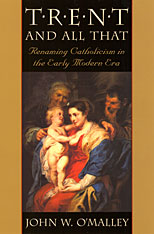 Trent and All That: Renaming Catholicism in the Early Modern Era
John W. O'Malley
Harvard University Press, 2002 Counter Reformation, Catholic Reformation, the Baroque Age, the Tridentine Age, the Confessional Age: why does Catholicism in the early modern era go by so many names? And what political situations, what religious and cultural prejudices in the nineteenth and twentieth centuries gave rise to this confusion? Taking up these questions, John W. O’Malley works out a remarkable guide to the intellectual and historical developments behind the concepts of Catholic reform, the Counter Reformation, and, in his felicitous term, Early Modern Catholicism. The result is the single best overview of scholarship on Catholicism in early modern Europe, delivered in a pithy, lucid, and entertaining style. Although its subject is fundamental to virtually all other issues relating to sixteenth- and seventeenth-century Europe, there is no other book like this in any language.
More than a historiographical review, Trent and All That makes a compelling case for subsuming the present confusion of terminology under the concept of Early Modern Catholicism. The term indicates clearly what this book so eloquently demonstrates: that Early Modern Catholicism was an aspect of early modern history, which it strongly influenced and by which it was itself in large measure determined. As a reviewer commented, O’Malley’s discussion of terminology ‘opens up a different way of conceiving of the whole history of Catholicism between the Reformation and the French Revolution.”
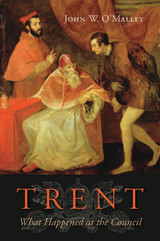 Trent: What Happened at the Council
John W. O'Malley
Harvard University Press, 2013 Winner of the John Gilmary Shea Prize
The Council of Trent (1545–1563), the Catholic Church’s attempt to put its house in order in response to the Protestant Reformation, has long been praised and blamed for things it never did. Now, in this first full one-volume history in modern times, John W. O’Malley brings to life the volatile issues that pushed several Holy Roman emperors, kings and queens of France, and five popes—and all of Europe with them—repeatedly to the brink of disaster.
During the council’s eighteen years, war and threat of war among the key players, as well as the Ottoman Turks’ onslaught against Christendom, turned the council into a perilous enterprise. Its leaders declined to make a pronouncement on war against infidels, but Trent’s most glaring and ironic silence was on the authority of the papacy itself. The popes, who reigned as Italian monarchs while serving as pastors, did everything in their power to keep papal reform out of the council’s hands—and their power was considerable. O’Malley shows how the council pursued its contentious parallel agenda of reforming the Church while simultaneously asserting Catholic doctrine.
Like What Happened at Vatican II, O’Malley’s Trent: What Happened at the Council strips mythology from historical truth while providing a clear, concise, and fascinating account of a pivotal episode in Church history. In celebration of the 450th anniversary of the council’s closing, it sets the record straight about the much misunderstood failures and achievements of this critical moment in European history.
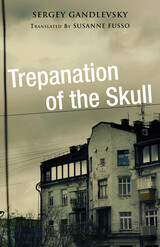 Trepanation of the Skull
Sergey Gandlevsky
Northern Illinois University Press, 2014 Sergey Gandlevsky is widely recognized as one of the leading living Russian poets and prose writers. His autobiographical novella Trepanation of the Skull is a portrait of the artist as a young late-Soviet man. At the center of the narrative are Gandlevsky’s brain tumor, surgery, and recovery in the early 1990s. The story radiates out, relaying the poet’s personal history through 1994, including his unique perspective on the 1991 coup by Communist hardliners resisted by Boris Yeltsin. Gandlevsky tells wonderfully strange but true episodes from the bohemian life he and his literary companions led. He also frankly describes his epic alcoholism and his ambivalent adjustment to marriage and fatherhood.
Aside from its documentary interest, the book’s appeal derives from its self-critical and shockingly honest narrator, who expresses himself in the densely stylized version of Moscow slang that was characteristic of the nonconformist intelligentsia of the 1970s and 1980s. Gandlevsky is a true artist of language who incorporates into his style the cadences of Pushkin and Tiutchev, the folk wisdom of proverbs, and slang in all its varieties. Susanne Fusso’s excellent translation marks the first volume in English of Sergey Gandlevsky’s prose, and it will interest scholars, students, and general readers of Russian literature and culture of the late Soviet and post-Soviet periods.
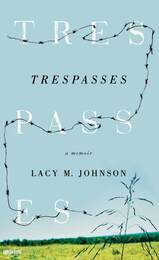 Trespasses: A Memoir
Lacy M. Johnson
University of Iowa Press, 2012 A series of vividly rendered personal narratives, Trespasses: A Memoir recounts the coming of age of three generations in the rural Great Plains. In examining how class, race, and gender play out in the lives of two farm families who simultaneously love and hate the place they can’t escape, Lacy Johnson presents rural whiteness as an ethnicity worthy of study. As she dismantles the complex history of a forgotten place while fighting to keep its people whole, Johnson reflects on a place that outsiders can cross into or pass through, but may never fully know. From formal and informal research methods, Johnson has produced an innovative collection of prose poems and essays that together create an exciting work of contemporary nonfiction. Examining region through the lenses of memory (experience), history (memory made public), and theory (experience abstracted), Trespasses is a deeply intelligent work, at the center of which is the author, always feeling as if she doesn’t belong but not sure where she else she should be. In this profound work, Johnson drifts gracefully back and forth between timelines and voices in a way that illustrates how her present is connected to the many pasts she chronicles.
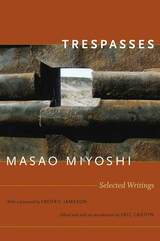 Trespasses: Selected Writings
Masao Miyoshi
Duke University Press, 2010 Trespasses presents key writings of the Tokyo-born literary scholar Masao Miyoshi, one of the most important postwar intellectuals to link culture with politics and a remarkable critical voice within the academy. For more than four decades, Miyoshi worked outside the mainstream, trespassing into new fields, making previously unseen connections, and upending naive assumptions. With an impeccable sense of when a topic or discussion had lost its critical momentum, he moved on to the next question, and then the next after that, taking on matters of literary form, cross-cultural relations, globalization, art and architecture, the corporatization of the university, and the threat of ecological disaster. Trespasses reveals the tremendous range of Miyoshi’s thought and interests, shows how his thinking transformed over time, and highlights his recurring concerns. This volume brings together eleven selections of Miyoshi’s previously published writing, a major new essay, a critical introduction to his life and work, and an interview in which Miyoshi reflects on the trajectory of his thought and the institutional history of modern Japan studies. In the new essay, “Literary Elaborations,” he provides a masterful overview of the nature of the contemporary university, closing with a call for a global environmental protection studies that would radically reconfigure academic disciplines and merge the hard sciences with the humanities and the social sciences. In the other, chronologically arranged selections, Miyoshi addresses cross-culture relations between Japan and the United States, English literary studies in Japan, and Japan studies in the U.S., as well as the organization of urban space and the integrity of art and architecture in aggressively marketed-oriented environments. Trespasses is an invaluable introduction to the work of a fearless cultural critic.
Trespassing: An Inquiry into the Private Ownership of Land
John Hanson Mitchell
University Press of New England, 2015 Trespassing, “a thoughtful, beautifully written addition to environmental and regional literature” (Kirkus Reviews), is a historical survey of the evolution of private ownership of land, concentrating on the various land uses of a 500-acre tract of land over a 350-year period. What began as wild land controlled periodically by various Native American tribes became British crown land after 1654, then private property under US law, and finally common land again in the late twentieth century. Mitchell considers every aspect of the important issue of land ownership and explores how our attitudes toward land have changed over the centuries.
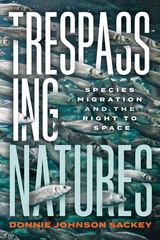 Trespassing Natures: Species Migration and the Right to Space
Donnie Johnson Sackey
Ohio State University Press, 2024 As old worlds become hostile and new spaces become hospitable, many species are shifting their ranges to live in locations where they have never previously existed. Biological and sociocultural realms collide and boundaries blur, making it increasingly difficult to mark definitively who belongs and who is a trespasser. In Trespassing Natures, Donnie Johnson Sackey troubles the idea of biological “invasion,” turning our attention away from scientific considerations and toward the discursive and rhetorical dimensions of this term—offering a new paradigm that recasts this issue as a question of what it means to live in multi-species communities. Presenting case studies on bed bugs, bighead carp, feral cats, and mackerel, Sackey argues that the identification of a species as an invader is not merely a scientific act, but a cultural and political one. By questioning issues around space, identity, and the institutions that make human participation apparent, Sackey redirects focus away from the belief that a single species threatens space. Ultimately, Trespassing Natures asks us to expand our idea of community and question who has the right to space.
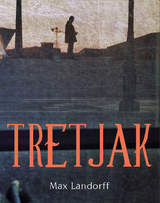 Tretjak
Max Landorff
Haus Publishing, 2014 A bestselling European psychological thriller set around the Italian lakes Gabriel Tretjak is a fixer, hired by rich clients to fix their lives, to change fate on their behalf. He does so without moral limitations or scruples. His methods draw on experimental psychology and the latest research into the human brain. His fees are high, but his clients are always willing to pay. No matter how desperate their situation, they want a happy ending. But happy for whom? Soon the body of a famous brain surgeon is discovered in a horsebox: a murder made all the more gruesome by the fact that the victim's eyes have been removed by something resembling an ice-cream scoop. The surgeon is the first victim of a murderer who leaves tantalising clues behind, all pointing to Tretjak. While Tretjak tries to stay in control, a feeling begins to take hold, a feeling that he normally uses to his advantage when working on behalf of a client. That feeling is fear. It slowly dawns on him - and soon the police - that these murders are all linked to his past. The one thing he cannot fix.
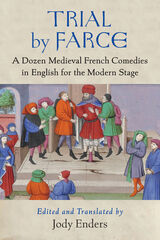 Trial by Farce: A Dozen Medieval French Comedies in English for the Modern Stage
Edited and Translated by Jody Enders
University of Michigan Press, 2023 Was there more to comedy than Chaucer, the Second Shepherds’ Play, or Shakespeare? Of course! But, for a real taste of medieval and Renaissance humor and in-your-face slapstick, one must cross the Channel to France, where over two hundred extant farces regularly dazzled crowds with blistering satires. Dwarfing all other contemporaneous theatrical repertoires, the boisterous French corpus is populated by lawyers, lawyers everywhere. No surprise there. The lion’s share of mostly anonymous farces was written by barristers, law students, and legal apprentices. Famous for skewering unjust judges and irreligious ecclesiastics, they belonged to a 10,000-member legal society known as the Basoche, which flourished between 1450 and 1550. What is more, their dramatic send-ups of real and fictional court cases were still going strong on the eve of Molière, resilient against those who sought to censor and repress them. The suspenseful wait to see justice done has always made for high drama or, in this case, low drama. But, for centuries, the scripts for these outrageous shows were available only in French editions gathered from scattered print and manuscript sources. In Trial by Farce, prize-winning theater historian Jody Enders brings twelve of the funniest legal farces to English-speaking audiences in a refreshingly uncensored but philologically faithful vernacular. Newly conceived as much for scholars as for students and theater practitioners, this repertoire and its familiar stock characters come vividly to life as they struggle to negotiate the limits of power, politics, class, gender, and, above all, justice. Through the distinctive blend of wit, social critique, and breathless boisterousness that is farce, we gain a new understanding of comedy itself as form of political correction. In ways presciently modern and even postmodern, farce paints a different cultural picture of the notoriously authoritarian Middle Ages with its own vision of liberty and justice for all. Theater eternally offers ways for new generations to raise their voices and act.
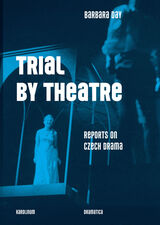 Trial by Theatre: Reports on Czech Drama
Barbara Day
Karolinum Press, 2019 The motto “Národ sobě”—“From the Nation to Itself”—inscribed over the proscenium arch of Prague’s National Theatre symbolizes the great importance theater holds for the Czechs. It also belies an extraordinary history of subversion, repression, and an enduring capacity for reinvention. In Trial by Theatre, Barbara Day sets that story in its political and sociological contexts, painting a vivid portrait of the evolving nature and importance of Czech theater that illuminates the nation’s history more broadly.
Drawing on a range of oral and written sources, as well as her unique personal experience of cultural and historical events in Czechoslovakia from the 1960s to the 1980s, Day offers a sweeping view of Czech theater, its colorful personalities, and international connections. Her story details: the days of the National Awakening in the nineteenth century, when theater took the place of politics, becoming an instrument of national identity in the hands of the revivalists; theater as a symbol of independence during the Nazi occupation; its survival of Socialist Realism and Stalinism and subsequent blossoming in the “Golden Sixties”; and theater’s essential role in Prague Spring and beyond, when for two decades theater operated in provisional spaces like gymnasiums, bars, trade union halls, art galleries, and living rooms. Trial by Theatre culminates in the Velvet Revolution of 1989, a year that saw the installation of Václav Havel—a playwright—as the first post-Communist president of Czechoslovakia.
 Trial By Trail: Backpacking in the Smoky Mountains
Johnny Molloy
University of Tennessee Press, 1996
Now updated with a new preface that examines dramatic changes in his favorite hiking and camping area, the Great Smoky Mountains National Park, this classic adventure chronicle, which first appeared in 1996, launched the outdoor writing career of Johnny Molloy. The author of over sixty invaluable hiking, camping, and paddling guides to natural destinations all over the country, Molloy has turned irresistible enthusiasm for the great outdoors, evident in this book, into a profound career, dedicated to honoring and celebrating our greatest wild places—and helping others enjoy them as much as he has.
In fourteen lively personal essays, Johnny Molloy describes the adventures by which he came of age as a backpacker. Born a “flatlander” in Memphis, he first visited the Smokies while attending the University of Tennessee-Knoxville in the 1980s. Initially, he treated the park as a personal playground—a place to cut loose, break rules, and act irresponsibly. After many hiking excursions, however, he gained a more profound appreciation of the mountains, becoming an avid park volunteer intent on the protection and improvement of the area. He grew, as he puts it, both as an outdoor adventurer and as a human being.
Interwoven throughout these pieces is a wealth of Smoky Mountains lore and history along with dozens of tips for novice backpackers. Molloy’s stories encompass backpacking during all four seasons as well as accounts of solo hiking, off-trail hiking, and whitewater canoeing. Whether describing the hazards of crossing a stream in winter or what to do—and not to do—when one encounters a bear or a rattlesnake, Molloy writes with an infectious enthusiasm that will delight any lover of the outdoors.
 Trial by Treatment: Punishing Illness in an Age of Criminal Legal Reform
Mary Ellen Stitt
University of Chicago Press, 2025 A troubling account of the unexpected impacts of treatment-based alternatives to criminal punishment. Every year, courts send hundreds of thousands of people to treatment-based programs as alternatives to traditional punishment. These alternatives—known as ‘diversion programs’—are widely celebrated as reforms that reduce the punishment of the mentally ill. But in Trial by Treatment, Mary Ellen Stitt shows that they have, in fact, expanded the reach of the criminal legal system and its power over the lives of the most vulnerable. The inner workings of diversion programs are obscure, partially by design, and data on outcomes is hard to come by. Stitt draws on two years of fieldwork in criminal courtrooms and court-mandated treatment sessions, as well as an original national dataset, in-depth interviews, and experimental survey data, to document the hidden impacts of diversion. She shows that placing mental healthcare under the control of the courts has helped to legitimize the criminalization of illness, warped treatment environments, and amplified inequalities in punishment. In vivid and humanizing detail, Trial by Treatment shows how reforms that keep power and discretion in the same hands can entrench the very problems they promised to solve.
 Trial by Treatment: Punishing Illness in an Age of Criminal Legal Reform
Mary Ellen Stitt
University of Chicago Press, 2025 This is an auto-narrated audiobook version of this book.
A troubling account of the unexpected impacts of treatment-based alternatives to criminal punishment. Every year, courts send hundreds of thousands of people to treatment-based programs as alternatives to traditional punishment. These alternatives—known as ‘diversion programs’—are widely celebrated as reforms that reduce the punishment of the mentally ill. But in Trial by Treatment, Mary Ellen Stitt shows that they have, in fact, expanded the reach of the criminal legal system and its power over the lives of the most vulnerable. The inner workings of diversion programs are obscure, partially by design, and data on outcomes is hard to come by. Stitt draws on two years of fieldwork in criminal courtrooms and court-mandated treatment sessions, as well as an original national dataset, in-depth interviews, and experimental survey data, to document the hidden impacts of diversion. She shows that placing mental healthcare under the control of the courts has helped to legitimize the criminalization of illness, warped treatment environments, and amplified inequalities in punishment. In vivid and humanizing detail, Trial by Treatment shows how reforms that keep power and discretion in the same hands can entrench the very problems they promised to solve.
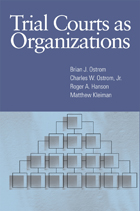 Trial Courts as Organizations
Brian J Ostrom, Charles W Ostrom, Jr., Roger A Hanson and Matthew Kleiman
Temple University Press, 2007 Court administrators and judges have long acknowledged that culture plays an important role in the function of trial courts. Trial Courts as Organizations provides a comprehensive framework for understanding this organizational culture, along with a set of steps and tools to assess and measure the current and preferred culture. The authors examine how courts operate, what characteristics they may display, and how they function as a unit to preserve judicial independence, strengthen organizational leadership, and influence court performance. They identify four different types of institutional cultures using a systematic analysis of alternative values on how work is done. Each culture is shown to have its own strengths and weaknesses in achieving values, such as timely case resolution, access to court services, and procedural justice. Accordingly, the authors find judges and administrators prefer a definite pattern of different cultures, called a "mosaic," to guide how their courts operate in the future.
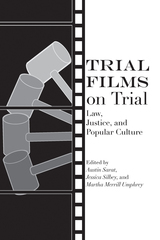 Trial Films on Trial: Law, Justice, and Popular Culture
Edited by Austin Sarat, Jessica Silbey, and Martha Merrill Umphrey
University of Alabama Press, 2019 A collection of wide-ranging critical essays that examine how the judicial system is represented on screen
Historically, the emergence of the trial film genre coincided with the development of motion pictures. In fact, one of the very first feature-length films, Falsely Accused!, released in 1908, was a courtroom drama. Since then, this niche genre has produced such critically acclaimed films as Twelve Angry Men, To Kill a Mockingbird, and Anatomy of a Murder. The popularity and success of these films can be attributed to the fundamental similarities of filmic narratives and trial proceedings. Both seek to construct a “reality” through storytelling and representation and in so doing persuade the audience or jury to believe what they see.
Trial Films on Trial: Law, Justice, and Popular Culture is the first book to focus exclusively on the special significance of trial films for both film and legal studies. The contributors to this volume offer a contemporary approach to the trial film genre. Despite the fact that the medium of film is one of the most pervasive means by which many citizens receive come to know the justice system, these trial films are rarely analyzed and critiqued. The chapters cover a variety of topics, such as how and why film audiences adopt the role of the jury, the narrative and visual conventions employed by directors, and the ways mid-to-late-twentieth-century trial films offered insights into the events of that period.
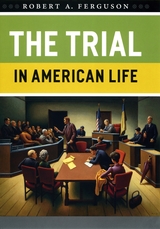 The Trial in American Life
Robert A. Ferguson
University of Chicago Press, 2006 In a bravura performance that ranges from Aaron Burr to O. J. Simpson, Robert A. Ferguson traces the legal meaning and cultural implications of prominent American trials across the history of the nation. His interdisciplinary investigation carries him from courtroom transcripts to newspaper accounts, and on to the work of such imaginative writers as Emerson, Thoreau, William Dean Howells, and E. L. Doctorow. Ferguson shows how courtrooms are forced to cope with unresolved communal anxieties and how they sometimes make legal decisions that change the way Americans think about themselves. Burning questions control the narrative. How do such trials mushroom into major public dramas with fundamental ideas at stake? Why did outcomes that we now see as unjust enjoy such strong communal support at the time? At what point does overexposure undermine a trial’s role as a legal proceeding?
Ultimately, such questions lead Ferguson to the issue of modern press coverage of courtrooms. While acknowledging that media accounts can skew perceptions, Ferguson argues forcefully in favor of full television coverage of them—and he takes the Supreme Court to task for its failure to grasp the importance of this issue. Trials must be seen to be understood, but Ferguson reminds us that we have a duty, currently ignored, to ensure that cameras serve the court rather than the media.
The Trial in American Life weaves Ferguson’s deep knowledge of American history, law, and culture into a fascinating book of tremendous contemporary relevance.
“A distinguished law professor, accomplished historian, and fine writer, Robert Ferguson is uniquely qualified to narrate and analyze high-profile trials in American history. This is a superb book and a tremendous achievement. The chapter on John Brown alone is worth the price of admission.”—Judge Richard Posner “A noted scholar of law and literature, [Ferguson] offers a work that is broad in scope yet focuses our attention on certain themes, notably the possibility of injustice, as illustrated by the Haymarket and Rosenberg prosecutions; the media’s obsession with pandering to baser instincts; and the future of televised trials. . . . One of the best books written on this subject in quite some time.”—Library Journal, starred review
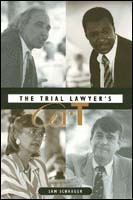 The Trial Lawyer's Art
Sam Schrager
Temple University Press, 2000 How do lawyers sway jurors in the heat of a trial? Why do the best trial lawyers seem uncannily able to get the verdict they want? In answering these questions, folklorist Sam Schrager vindicates -- but with a twist -- the widespread belief that lawyers are actors who manipulate the truth. He shows that attorneys have no choice but to treat the jury trial, from beginning to end, as an artful performance: as story-telling combat in which victory most often goes to the man or woman who has superior control of craft.
Drawn from fieldwork in the Philadelphia courts and at the Smithsonian Institution's American Trial Lawyers program, The Trial Lawyer's Art gives a remarkable, in-depth look at this craft of performance. It examines how lawyers exploit a case's dramatic potential, how they enact mythically potent themes, how they project personal authority, and how they use cultural identity -- their own and their opponents' racial, gender, class, and local affiliations -- all to make themselves and their stories persuasive to a jury. Schrager depicts the performance styles of some of the nation's most artful criminal and civil advocates: in Philadelphia, prosecutor Roger King, defender Robert Mozenter, and the legendary Cecil B. Moore; from around the country, such litigating stars as Roy Barrera, Penny Cooper, Jo Ann Harris, Tony Serra, and Michael Tigar. These lawyers reflect candidly on their courtroom calculations and share revealing "war stories" about their work.
Integrating performance insights with evocative portrayals of unfolding trials, The Trial Lawyer's Art offers a no-holds-barred analysis of the place of skill versus evidence in the American justice system. In doing so, it raises vital questions about the moral challenges that legal and other professions now face and sheds new light on the role of stories in American life.
 The Trial of Charles I: A Documentary History
Edited by David Lagomarsino and Charles T. Wood
Dartmouth College Press, 1989 On January 6, 1649, the House of Commons passed an act for “the Trying and Judging of Charles Stuart, King of England.” By month’s end, the King’s judges had found him “guilty of High Treason and of the murders, rapines, burnings, spoils, desolations, damage, and mischief to this nation” committed during the recently concluded Civil War. The sentence, ordering his execution “by severing of his head from his body,” was carried out in full public view on January 30. How and why a King--God’s annointed--could be executed for treason are questions that underscore the profound changes that politics and political thought were undergoing at this time. To provide a window into this pivotal period, accounts of the trial and execution taken from contemporary newspapers, pamphlets, and official records, are collected here and edited for modern readers. This compilation of eyewitness accounts has been arranged to sketch a dramatic day-by-day narrative of that fateful month, introducing the important issues in a way that brings readers close to the making of these great events. The speeches at the trial make especially vivid the clash between two contrasting theories of government--that of a divine monarchy in which a king is deemed essential to the true liberty of his people, and that of a commonwealth in which sovereignty rests with the people and is exercised by its representatives.
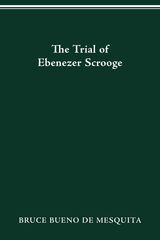 TRIAL OF EBENEZER SCROOGE
Bruce Bueno de Mesquita
Ohio State University Press, 2001 What happened to Ebenezer Scrooge after the night he was visited by the three spirits? When we left Ebenezer Scrooge at the end of A Christmas Carol, he appeared to be a man transformed. But did he sincerely repent and earn admission to heaven? The Trial of Ebenezer Scrooge, written in Dickensian style and with tongue firmly lodged in cheek, follows Scrooge through the Court of Heavenly Justice, where his soul’s fate is to be determined. In this courtroom drama, using frequent flashbacks, the author uncovers startling evidence, much of it directly from Dickens’s classic, that reveals Scrooge to have lived a saintly life before being confronted by three Christmas ghosts. Evidence mounts that Mr. Scrooge struck a Faustian bargain with the Ghost of Christmas Yet to Come, a deal to extend his own mortality in exchange for yielding his soul as a tool for the forces of darkness to infiltrate heaven. Readers will enjoy the remaking of some of Dickens’s best-known characters. Tiny Tim emerges as a villain, while little Eppie, borrowed from George Eliot’s Silas Marner, is Scrooge’s protector and source of salvation. This new novel provides the much-needed redemption of Ebenezer Scrooge’s reputation and offers a welcome departure from the standard saccharine fare at Christmastime. Dickens buffs will have a merry time trying to find where Dickens’s voice ends and the author’s begins. All readers will puzzle over how we could have so misjudged Ebenezer Scrooge, or whether we judged Scrooge aright from the start.
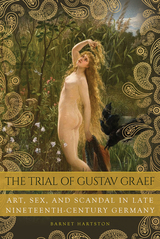 The Trial of Gustav Graef: Art, Sex, and Scandal in Late Nineteenth-Century Germany
Barnet Hartston
Northern Illinois University Press, 2017
Although largely forgotten now, the 1885 trial of German artist Gustav Graef was a seminal event for those who observed it. Graef, a celebrated sixty-four-year-old portraitist, was accused of perjury and sexual impropriety with underage models. On trial alongside him was one of his former models, the twenty-one-year-old Bertha Rother, who quickly became a central figure in the affair. As the case was being heard, images of Rother, including photographic reproductions of Graef’s nude paintings of her, began to flood the art shops and bookstores of Berlin and spread across Europe. Spurred by this trade in images and by sensational coverage in the press, this former prostitute was transformed into an international sex symbol and a target of both public lust and scorn. Passionate discussions of the case echoed in the press for months, and the episode lasted in public memory for far longer.
The Graef trial, however, was much more than a salacious story that served as public entertainment. The case inspired fierce political debates long after a verdict was delivered, including disputes about obscenity laws, the moral degeneracy of modern art and artists, the alleged pernicious effects of Jewish influence, legal restrictions on prostitution, the causes of urban criminality, the impact of sensationalized press coverage, and the requirements of bourgeois masculine honor. Above all, the case unleashed withering public criticism of a criminal justice system that many Germans agreed had become entirely dysfunctional. The story of the Graef trial offers a unique perspective on a German Empire that was at the height of its power, yet riven with deep political, social, and cultural divisions. This compelling study will appeal to historians and students of modern German and European history, as well as those interested in obscenity law and class and gender relations in nineteenth-century Europe.
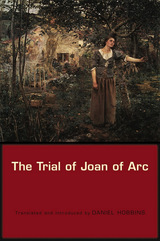 The Trial of Joan of Arc
Daniel Hobbins
Harvard University Press, 2005 No account is more critical to our understanding of Joan of Arc than the contemporary record of her trial in 1431. Convened at Rouen and directed by bishop Pierre Cauchon, the trial culminated in Joan's public execution for heresy. The trial record, which sometimes preserves Joan's very words, unveils her life, character, visions, and motives in fascinating detail. Here is one of our richest sources for the life of a medieval woman.
This new translation, the first in fifty years, is based on the full record of the trial proceedings in Latin. Recent scholarship dates this text to the year of the trial itself, thereby lending it a greater claim to authority than had traditionally been assumed. Contemporary documents copied into the trial furnish a guide to political developments in Joan's career—from her capture to the attempts to control public opinion following her execution.
Daniel Hobbins sets the trial in its legal and historical context. In exploring Joan's place in fifteenth-century society, he suggests that her claims to divine revelation conformed to a recognizable profile of holy women in her culture, yet Joan broke this mold by embracing a military lifestyle. By combining the roles of visionary and of military leader, Joan astonished contemporaries and still fascinates us today.
Obscured by the passing of centuries and distorted by the lens of modern cinema, the story of the historical Joan of Arc comes vividly to life once again.
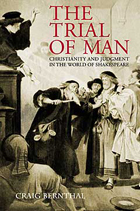 The Trial of Man: Christianity and Judgment in the World of Shakespeare
Craig A. Bernthal
Intercollegiate Studies Institute, 2007 The peculiar dilemma of the self in our era has been noted by a wide range of writers, even as they have emphasized different aspects of that dilemma, such as the self’s alienation, disorientation, inflation, or fragmentation. In The Self: Beyond the Postmodern Crisis, Paul C. Vitz and Susan M. Felch bring together scholars from the disciplines of psychology, philosophy, theology, literature, biology, and physics to address the inadequacies of modern and postmodern selves and, ultimately, to suggest what an alternative, “transmodern” account of the self might look like. The transmodern self, the editors argue, acknowledges meaning and purpose transcending the individual. In other words, it reflects an understanding of the human person that is not only intimately connected with the Judeo-Christian tradition but also rejects the twin delusions of absolute autonomy and cosmic meaninglessness that mark the present age.
The Trial of Sören Qvist
Janet Lewis
Ohio University Press, 2013 Originally published in 1947, The Trial of Sören Qvist has been praised by a number of critics for its intriguing plot and Janet Lewis’s powerful writing. And in the introduction to this new edition, Swallow Press executive editor and author Kevin Haworth calls attention to the contemporary feeling of the story—despite its having been written more than fifty years ago and set several hundred years in the past. As in Lewis’s best-known novel, The Wife of Martin Guerre, the plot derives from Samuel March Phillips’s nineteenth-century study, Famous Cases of Circumstantial Evidence, in which this British legal historian considered the trial of Pastor Sören Qvist to be the most striking case.
The Trial of the Assassin Guiteau: Psychiatry and the Law in the Gilded Age
Charles E. Rosenberg
University of Chicago Press, 1968 In this brilliant study, Charles Rosenberg uses the celebrated trial of Charles Guiteau, who assassinated President Garfield in 1881, to explore insanity and criminal responsibility in the Gilded Age. Rosenberg masterfully reconstructs the courtroom battle waged by twenty-four expert witnesses who represented the two major schools of psychiatric thought of the generation immediately preceding Freud.
Although the role of genetics in behavior was widely accepted, these psychiatrists fiercely debated whether heredity had predisposed Guiteau to assassinate Garfield. Rosenberg's account allows us to consider one of the opening rounds in the controversy over the criminal responsibility of the insane, a debate that still rages today.
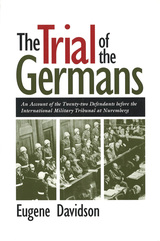 The Trial of the Germans: An Account of the Twenty-two Defendants before the International Military Tribunal at Nuremberg
Eugene Davidson
University of Missouri Press, 1997 The "definitive one-volume study of Nuremberg," The Trial of the Germans is now available in paperback. An astute observer of the Nuremberg trial, Eugene Davidson has struggled with the issues it raised: Was it a necessary response to the heinous crimes of the Third Reich? How were Germany and the Germans capable of such extraordinary evil? Was the trial just, given the claims that the defendants were simply serving their country, doing as they had been told to do? And if not just, was it nonetheless necessary as a warning to prevent future crimes against humanity? Davidson's approach to these and other large questions of justice is made through examination of each of the defendants in the trial. His reluctant, but firm, conclusion is: "In a world of mixed human affairs where a rough justice is done that is better than lynching or being shot out of hand, Nuremberg may be defended as a political event if not as a court." Some sentences may have seemed too severe, but none was harsher than the punishments meted out to innocent people by the regime these men served. "In a certain sense," says Davidson, "the trial succeeded in doing what judicial proceedings are supposed to do: it convinced even the guilty that the verdict against them was just." Faulty as the trial was from the legal point of view, a catharsis of the pent-up emotions of millions of people had to be provided and a record of what had taken place duly preserved for whatever use later generations would make of it.
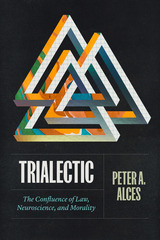 Trialectic: The Confluence of Law, Neuroscience, and Morality
Peter A. Alces
University of Chicago Press, 2023 A thought-provoking examination of how insights from neuroscience challenge deeply held assumptions about morality and law. As emerging neuroscientific insights change our understanding of what it means to be human, the law must grapple with monumental questions, both metaphysical and practical. Recent advances pose significant philosophical challenges: how do neuroscientific revelations redefine our conception of morality, and how should the law adjust accordingly? Trialectic takes account of those advances, arguing that they will challenge normative theory most profoundly. If all sentient beings are the coincidence of mechanical forces, as science suggests, then it follows that the time has come to reevaluate laws grounded in theories dependent on the immaterial that distinguish the mental and emotional from the physical. Legal expert Peter A. Alces contends that such theories are misguided—so misguided that they undermine law and, ultimately, human thriving. Building on the foundation outlined in his previous work, The Moral Conflict of Law and Neuroscience, Alces further investigates the implications for legal doctrine and practice.
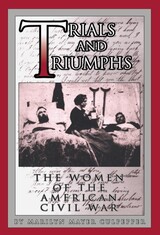 Trials and Triumphs: The Women of the American Civil War
Marilyn Mayer Culpepper
Michigan State University Press, 1991 In Trials and Triumphs, Marilyn Mayer Culpepper provides incomparable insights into women's lives during America's Civil War era. Her respect for these nineteenth-century women and their experiences, as well as her engaging and intimate style, enable Culpepper to transport readers into a tumultuous time of death, destruction, and privation—into a world turned upside down, an environment that seemed as strange to contemporaries as it does in our own time. Culpepper has uncovered forgotten images of America's bloodiest conflict contained in the diaries and correspondence of more than 500 women. Trials and Triumphs reveals the anxiety, hardship, turmoil and tragedy that women endured during the war years. It reveals the fierce loyalty and enmity that nearly severed the Union, the horror of enemy occupation, and even the desperate austerity of an itinerate refugee life.
Just as the Civil War influenced culture and government, it shaped the attitudes of a new breed of pioneering woman. As the war progressed, either by choice or by default, men turned over more and more responsibility to women on the home front. As a result, women began to break free from the "cult of domesticity" to expand career opportunities. By war's end, women on both sides of the conflict proved to themselves and to a nearly shattered nation that the appellation "weaker sex" was a misnomer.
Originally published in 1992, this revised paperback edition includes a new index.
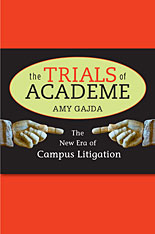 The Trials of Academe: The New Era of Campus Litigation
Amy Gajda
Harvard University Press, 2009 Once upon a time, virtually no one in the academy thought to sue over campus disputes, and, if they dared, judges bounced the case on grounds that it was no business of the courts. Tenure decisions, grading curves, course content, and committee assignments were the stuff of faculty meetings, not lawsuits.
Not so today. As Amy Gajda shows in this witty yet troubling book, litigation is now common on campus, and perhaps even more commonly feared. Professors sue each other for defamation based on assertions in research articles or tenure review letters; students sue professors for breach of contract when an F prevents them from graduating; professors threaten to sue students for unfairly criticizing their teaching.
Gajda’s lively account introduces the new duo driving the changes: the litigious academic who sees academic prerogative as a matter of legal entitlement and the skeptical judge who is increasingly willing to set aside decades of academic deference to pronounce campus rights and responsibilities.
This turn to the courts is changing campus life, eroding traditional notions of academic autonomy and confidentiality, and encouraging courts to micromanage course content, admissions standards, exam policies, graduation requirements, and peer review.
This book explores the origins and causes of the litigation trend, its implications for academic freedom, and what lawyers, judges, and academics themselves can do to limit the potential damage.
 The Trials of Anthony Burns: Freedom and Slavery in Emerson’s Boston
Albert J. von Frank
Harvard University Press, 1998 Before 1854, most Northerners managed to ignore the distant unpleasantness of slavery. But that year an escaped Virginia slave, Anthony Burns, was captured and brought to trial in Boston--and never again could Northerners look the other way. This is the story of Burns's trial and of how, arising in abolitionist Boston just as the incendiary Kansas-Nebraska Act took effect, it revolutionized the moral and political climate in Massachusetts and sent shock waves through the nation.
In a searching cultural analysis, Albert J. von Frank draws us into the drama and the consequences of the case. He introduces the individuals who contended over the fate of the barely literate twenty-year-old runaway slave--figures as famous as Richard Henry Dana Jr., the defense attorney, as colorful as Thomas Wentworth Higginson and Bronson Alcott, who led a mob against the courthouse where Burns was held, and as intriguing as Moncure Conway, the Virginia-born abolitionist who spied on Burns's master.
The story is one of desperate acts, even murder--a special deputy slain at the courthouse door--but it is also steeped in ideas. Von Frank links the deeds and rhetoric surrounding the Burns case to New England Transcendentalism, principally that of Ralph Waldo Emerson. His book is thus also a study of how ideas relate to social change, exemplified in the art and expression of Emerson, Henry Thoreau, Theodore Parker, Bronson Alcott, Walt Whitman, and others.
Situated at a politically critical moment--with the Whig party collapsing and the Republican arising, with provocations and ever hotter rhetoric intensifying regional tensions--the case of Anthony Burns appears here as the most important fugitive slave case in American history. A stirring work of intellectual and cultural history, this book shows how the Burns affair brought slavery home to the people of Boston and brought the nation that much closer to the Civil War.
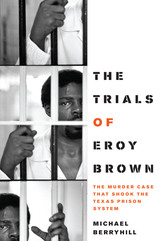 The Trials of Eroy Brown: The Murder Case That Shook the Texas Prison System
By Michael Berryhill
University of Texas Press, 2011 In April 1981, two white Texas prison officials died at the hands of a black inmate at the Ellis prison farm near Huntsville. Warden Wallace Pack and farm manager Billy Moore were the highest-ranking Texas prison officials ever to die in the line of duty. The warden was drowned face down in a ditch. The farm manager was shot once in the head with the warden's gun. The man who admitted to killing them, a burglar and robber named Eroy Brown, surrendered meekly, claiming self-defense. In any other era of Texas prison history, Brown's fate would have seemed certain: execution. But in 1980, federal judge William Wayne Justice had issued a sweeping civil rights ruling in which he found that prison officials had systematically and often brutally violated the rights of Texas inmates. In the light of that landmark prison civil rights case, Ruiz v. Estelle, Brown had a chance of being believed. The Trials of Eroy Brown, the first book devoted to Brown's astonishing defense, is based on trial documents, exhibits, and journalistic accounts of Brown's three trials, which ended in his acquittal. Michael Berryhill presents Brown's story in his own words, set against the backdrop of the chilling plantation mentality of Texas prisons. Brown's attorneys—Craig Washington, Bill Habern, and Tim Sloan—undertook heroic strategies to defend him, even when the state refused to pay their fees. The Trials of Eroy Brown tells a landmark story of prison civil rights and the collapse of Jim Crow justice in Texas.
 Trials of Intimacy: Love and Loss in the Beecher-Tilton Scandal
Richard Wightman Fox
University of Chicago Press, 1999 The nation's leading minister stands accused of adultery. He vehemently denies the charge but confesses to being on "the ragged edge of despair." His alleged lover is a woman of mystical faith, nearly "Catholic" in her piety. Her husband, a famous writer, sues the minister for damages. A six-month trial ends inconclusively, but it holds the nation in thrall. It produces gripping drama, scathing cartoons, and soul-searching editorials. Trials of Intimacy is the story of a scandal that shook American culture to the core in the 1870s because the key players were such vaunted moral leaders. In that respect there has never been another case like it—except The Scarlet Letter, to which it was constantly compared.
Henry Ward Beecher was pastor of Brooklyn's Plymouth Church and for many the "representative man" of mid-nineteenth century America. Elizabeth Tilton was the wife of Beecher's longtime intimate friend Theodore. His accusation of "criminal conversation" between Henry and Elizabeth confronted the American public with entirely new dilemmas about religion and intimacy, privacy and publicity, reputation and celebrity. The scandal spotlighted a series of comic and tragic loves and betrayals among these three figures, with a supporting cast that included Victoria Woodhull, Susan B. Anthony, and Elizabeth Cady Stanton.
To readers at the time, the Beecher-Tilton Scandal was an irresistible mystery. Richard Fox puts his readers into that same reverberating story, while offering it as a timeless tale of love, deception, faith, and the confounding indeterminacy of truth. Trials of Intimacy revises our conception of nineteenth-century morals and passions. And it is an American history richly resonant with present-day dramas.
The Trials of Masculinity: Policing Sexual Boundaries, 1870-1930
Angus McLaren
University of Chicago Press, 1997 In this path-breaking history of manhood and masculinity, Angus McLaren examines how nineteenth- and twentieth-century western society created what we now take to be the traditional model of the heterosexual male.
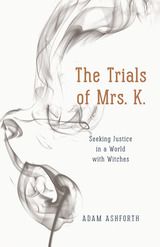 The Trials of Mrs. K.: Seeking Justice in a World with Witches
Adam Ashforth
University of Chicago Press, 2018 In March 2009, in a small town in Malawi, a nurse at the local hospital was accused of teaching witchcraft to children. Amid swirling rumors, “Mrs. K.” tried to defend her reputation, but the community nevertheless grew increasingly hostile. The legal, social, and psychological trials that she endured in the struggle to clear her name left her life in shambles, and she died a few years later.
In The Trials of Mrs. K., Adam Ashforth studies this and similar stories of witchcraft that continue to circulate in Malawi. At the heart of the book is Ashforth’s desire to understand how claims to truth, the pursuit of justice, and demands for security work in contemporary Africa, where stories of witchcraft can be terrifying. Guiding us through the history of legal customs and their interactions with the court of public opinion, Ashforth asks challenging questions about responsibility, occult forces, and the imperfect but vital mechanisms of law. A beautifully written and provocative book, The Trials of Mrs. K. will be an essential text for understanding what justice means in a fragile and dangerous world.
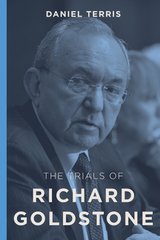 The Trials of Richard Goldstone
Terris, Daniel
Rutgers University Press, 2019 In June 2009, Richard Goldstone was a global hero, honored by the MacArthur Foundation for its prize in international justice. Four months later, he was called a “quisling” and compared to some of the worst traitors in human history. Why? Because this champion of human rights and international law chose to apply his commitments to fairness and truth to his own community.
The Trials of Richard Goldstone tells the story of this extraordinary individual and the price he paid for his convictions. It describes how Goldstone, working as a judge in apartheid South Africa, helped to undermine this unjust system and later, at Nelson Mandela’s request, led a commission that investigated cases of racial violence and intimidation. It also considers the international renown he received as the chief United Nations prosecutor for war crimes committed in Rwanda and the former Yugoslavia, the first tribunals to try political and military leaders on charges of genocide. Finally, it explores how Goldstone became a controversial figure in the wake of the Jewish jurist’s powerful, but flawed, investigation of Israel for alleged war crimes in Gaza.
Richard Goldstone’s dramatic life story reveals that even in a world rife with prejudice, nationalism, and contempt for human rights, one courageous man can advance the cause of justice.
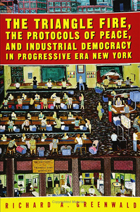 The Triangle Fire, Protocols Of Peace: And Industrial Democracy In Progressive
Richard A. Greenwald
Temple University Press, 2005 America searched for an answer to "The Labor Question" during the Progressive Era in an effort to avoid the unrest and violence that flared so often in the late nineteenth and early twentieth century. In the ladies' garment industry, a unique experiment in industrial democracy brought together labor, management, and the public. As Richard Greenwald explains, it was an attempt to "square free market capitalism with ideals of democracy to provide a fair and just workplace." Led by Louis Brandeis, this group negotiated the "Protocols of Peace." But in the midst of this experiment, 146 mostly young, immigrant women died in the Triangle Factory Fire of 1911. As a result of the fire, a second, interrelated experiment, New York's Factory Investigating Commission (FIC)—led by Robert Wagner and Al Smith—created one of the largest reform successes of the period. The Triangle Fire, the Protocols of Peace, and Industrial Democracy in Progressive Era New York uses these linked episodes to show the increasing interdependence of labor, industry, and the state. Greenwald explains how the Protocols and the FIC best illustrate the transformation of industrial democracy and the struggle for political and economic justice.
 Triangulations: Narrative Strategies for Navigating Latino Identity
David J. Vázquez
University of Minnesota Press, 2011 Just as mariners use triangulation, mapping an imaginary triangle between two known positions and an unknown location, so, David J. Vázquez contends, Latino authors in late twentieth-century America employ the coordinates of familiar ideas of self to find their way to new, complex identities. Through this metaphor, Vázquez reveals how Latino autobiographical texts, written after the rise of cultural nationalism in the 1960s, challenge mainstream notions of individual identity and national belonging in the United States. In a traditional autobiographical work, the protagonist frequently opts out of his or her community. In the works that Vázquez analyzes in Triangulations, protagonists instead opt in to collective groups—often for the express political purpose of redefining that collective. Reading texts by authors such as Ernesto Galarza, Jesús Colón, Piri Thomas, Oscar “Zeta” Acosta, Judith Ortiz Cofer, John Rechy, Julia Alvarez, and Sandra Cisneros, Vázquez engages debates about the relationship between literature and social movements, the role of cultural nationalism in projects for social justice, the gender and sexual problematics of 1960s cultural nationalist groups, the possibilities for interethnic coalitions, and the interpretation of autobiography. In the process, Triangulations considers the potential for cultural nationalism as a productive force for aggrieved communities of color in their struggles for equality.
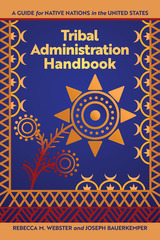 Tribal Administration Handbook: A Guide for Native Nations in the United States
Rebecca M. Webster
Michigan State University Press, 2022 A direct response to the needs and ambitions articulated by tribal administrators and leaders, this handbook seeks to serve practitioners, students, researchers, and community members alike. It grew out of an ongoing collaboration among scholars and practitioners from tribal nations, universities, tribal colleges, and nonprofit organizations who are developing practical and teaching resources in the field of tribal administration and governance. Designed as a readable, accessible volume, it focuses on three key areas: tribal management, funding and delivering core services, and sovereign tribes engaging settler governments. While the chapters complement one another by presenting a coherent and unified constellation of voices that illuminates a shared terrain of practical Indigenous governance, each chapter ultimately stands alone to accommodate a variety of needs and interests with specific best practices, quick-reference executive summaries, and practitioner notes to aid lesson applications. This humble collection of remarkable voices initiates a conversation about tribal administration that will hopefully continue to grow in service to Native nations.
Tribal and Chiefly Warfare in South America
Elsa M. Redmond
University of Michigan Press, 1994 This book presents new data on warfare from both ethnohistoric and ethnographic sources. The author documents principal differences between tribal and chiefly warfare; outlines the evidence archaeologists can expect to recover from warfare; and formulates testable hypotheses on the role of warfare in social and political evolution. This monograph is part of a series on Latin American Ethnohistory and Archaeology.
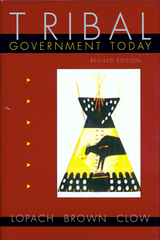 Tribal Government Today, Revised Edition
James J. Lopach
University Press of Colorado, 1998 An account of Fourth World peoples within a First World nation, Tribal Government Today, Revised Edition is a critical analysis of the contemporary progress of Indian tribes toward self-government and economic sufficiency. Focusing on seven reservations in Montana representing the diverse opportunities and problems facing Indian tribes in the West, this book approaches tribal government from the twin perspectives of reservation politics and the legal context within which reservation conflicts must be solved. Unlike previous studies of Indian politics, Tribal Government Today is neither a critique of American Indian policy over the years nor an analysis of federal, state, and tribal jurisdictional ambiguities. The authors—a political scientist, a lawyer, and a historian—focus instead on the distinctive political culture that has evolved on each reservation in terms of the reservation settings, governmental structures and procedures, and a particular brand of politics. The critical inquiry is how far the reservations are from genuine self-determination and whether that goal is impossibility for some. The authors conclude with suggestions for reforming tribal government within three main areas: the separation of powers, the role of the Bureau of Indian Affairs, and tribal acceptance of the concept of fundamental law. The contents include: The Contours of Reservations Politics, Indian Law and Tribal Government; The Blackfeet: Their Own Government to Help Them; The Crow: A Politics of Rick; The Northern Cheyenne: A Politics of Values; The Fort Peck Reservation: The Factor of Leadership; The Fort Belknap Reservation: The Reality of Poverty; The Rocky Boy's Reservation: A Struggle for Government; The Flathead Reservation: A Struggle for Government; The Flathead Reservation: From Enclave to Self-Government; and Reflection on Tribal Government. There has been surprisingly little writing about the condition of contemporary tribal government. Library shelves are filled with works on other American and foreign governments, but an inquirer must learn about tribal government incidentally and in piecemeal fashion. This state of scholarship is regrettable because of the importance of the modern Indian self-determination movement. Reservation politics certainly affect the quality of life in Indian communities, and the outlook for Indian self-determination cannot be assessed without an understanding of tribal government.
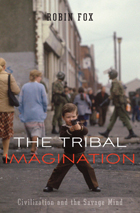 The Tribal Imagination: Civilization and the Savage Mind
Robin Fox
Harvard University Press, 2011 We began as savages, and savagery has served us well—it got us where we are. But how do our tribal impulses, still in place and in play, fit in the highly complex, civilized world we inhabit today? This question, raised by thinkers from Freud to Lévi-Strauss, is fully explored in this book by the acclaimed anthropologist Robin Fox. It takes up what he sees as the main—and urgent—task of evolutionary science: not so much to explain what we do, as to explain what we do at our peril.
Ranging from incest and arranged marriage to poetry and myth to human rights and pop icons, Fox sets out to show how a variety of human behaviors reveal traces of their tribal roots, and how this evolutionary past limits our capacity for action. Among the questions he raises: How real is our notion of time? Is there a human “right” to vengeance? Are we democratic by nature? Are cultural studies and fascism cousins under the skin? Is evolutionary history coming to an end—or just getting more interesting? In his famously informative and entertaining fashion, drawing links from Volkswagens to Bartók to Woody Guthrie, from Swinburne to Seinfeld, Fox traces our ongoing struggle to maintain open societies in the face of profoundly tribal human needs—needs which, paradoxically, hold the key to our survival.
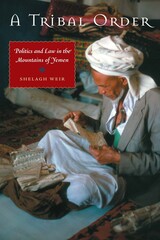 A Tribal Order: Politics and Law in the Mountains of Yemen
By Shelagh Weir
University of Texas Press, 2006 2008 — British-Kuwait Friendship Prize in Middle Eastern Studies – British Society for Middle Eastern Studies A Tribal Order describes the politico-legal system of Jabal Razih, a remote massif in northern Yemen inhabited by farmers and traders. Contrary to the popular image of Middle Eastern tribes as warlike, lawless, and invariably opposed to states, the tribes of Razih have stable structures of governance and elaborate laws and procedures for maintaining order and resolving conflicts with a minimum of physical violence. Razihi leaders also historically cooperated with states, provided the latter respected their customs, ideals, and interests. Weir considers this system in the context of the rugged environment and productive agricultural economy of Razih, and of centuries of continuous rule by Zaydi Muslim regimes and (latterly) the republican governments of Yemen. The book is based on Weir's extended anthropological fieldwork on Jabal Razih, and on her detailed study of hundreds of handwritten contracts and treaties among and between the tribes and rulers of Razih. These documents provide a fascinating insight into tribal politics and law, as well as state-tribe relations, from the early seventeenth to the late twentieth century. A Tribal Order is also enriched by case histories that vividly illuminate tribal practices. Overall, this unusually wide-ranging work provides an accessible account of a remarkable Arabian society through time.
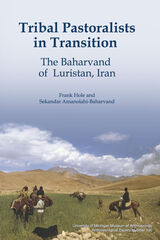 Tribal Pastoralists in Transition: The Baharvand of Luristan, Iran
Frank Hole and Sekandar Amanolahi-Baharvand
University of Michigan Press, 2021 In the spring of 1973, the Baharvand tribe from the Luristan province of central western Iran prepared to migrate from their winter pastures to their summer camp in the mountains. Seasonal migration in spring and fall had been their way of life for as long as anyone in the camp could remember. They moved their camp and their animals—sheep, goats, horses, donkeys, and chickens—in order to find green pastures and suitable temperatures. That year, one migrating family in the tribe allowed an outsider to make the trip with them. Anthropology professor Frank Hole, accompanied by his graduate student, Sekandar Amanolahi-Baharvand, traveled with the family of Morad Khan as they migrated into the mountains. In this volume, Hole describes the journey, the modern and prehistoric sites along the way, and the people he traveled with. It is a portrait of people in transition—even as the family follows the ancient migration path, there are signs of economic and social change everywhere. Illustrated. Supplementary videos (on the migration, weaving, harvesting, and the bazaars) can be found on Fulcrum ( fulcrum.org/UMMAA).
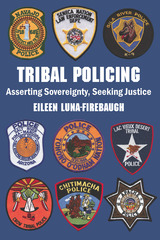 Tribal Policing: Asserting Sovereignty, Seeking Justice
Eileen Luna-Firebaugh
University of Arizona Press, 2007 What does it mean to be a tribal police officer? What are the complexities of that role? And how do tribal communities, tribal police departments, and other law enforcement agencies collaborate to address the alarmingly high rate of violent crime in Indian country?
Author Eileen Luna-Firebaugh answers these and other questions in this well-documented text about tribal government and law enforcement in America. Based on extensive research with tribal police departments conducted over a period of eight years, Tribal Policing reveals the complicated role of police officials in Indian country and the innovative methods they are developing to address crime within their borders and to advance tribal sovereignty in the United States.
Tribal police departments face many challenges, such as heightened crime rates, a lack of resources (working patrol vehicles, 911 systems, access to police radios), and vast patrol areas. Luna-Firebaugh demonstrates that tribal officers see themselves as members of the tribal community and that tribal law enforcement is a complex balance of tribal position and authority within the community. Among other topics, Luna-Firebaugh analyzes the structure of tribal law enforcement and the ways it differs from mainstream policing; the role of women, tribal members, and others who comprise tribal law enforcement personnel; tribal jails and corrections; police training; and the legal, political, cultural, and historical issues that affect American Indian tribal policing.
This informative text addresses the scarcity of published material regarding tribal law enforcement and will be a welcome addition to courses in criminal justice, the administration of justice, law enforcement, and Native American studies.
 Tribal Strengths and Native Education: Voices from the Reservation Classroom
Terry Huffman
University of Massachusetts Press, 2018 In 1889, Sitting Bull addressed the formal, Western-style education of his people. “When you find something good in the white man's road, pick it up,” he intoned. “When you find something that is bad . . . leave it alone. We shall master his machinery, and his inventions, his skills, his medicine, his planning, but we will retain our beauty and still be Indians.”
Sitting Bull's vision—that cultural survival and personal perseverance derive from tribal resilience—lies at the heart of Tribal Strengths and Native Education. Basing his account on the insights of six veteran American Indian educators who serve in three reservation schools on the Northern Plains, Terry Huffman explores how Native educators perceive pedagogical strengths rooted in their tribal heritage and personal ethnicity. He recounts their views on the issues facing students and shows how tribal identity can be a source of resilience in academic and personal success. Throughout, Huffman and the educators emphasize the importance of anchoring the formal education of Indian children in Native values and worldviews—in “tribal strengths.”
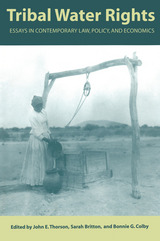 Tribal Water Rights: Essays in Contemporary Law, Policy, and Economics
Edited by John E. Thorson, Sarah Britton, and Bonnie G. Colby
University of Arizona Press, 2006 The settlement of Indian water rights cases remains one of the thorniest legal issues in this country, particularly in the West. In a previous book, Negotiating Tribal Water Rights, Colby, Thorson, and Britton presented a general overview of the processes involved in settling such cases; this volume provides more in-depth treatment of the many complex issues that arise in negotiating and implementing Indian water rights settlements. Tribal Water Rights brings together practicing attorneys and leading scholars in the fields of law, economics, public policy, and conflict resolution to examine issues that continue to confront the settlement of tribal claims. With coverage ranging from the differences between surface water and groundwater disputes to the distinctive nature of Pueblo claims, and from allotment-related problems to the effects of the Endangered Species Act on water conflicts, the book presents the legal aspects of tribal water rights and negotiations along with historical perspectives on their evolution.
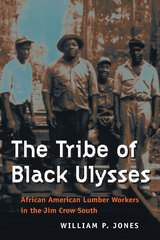 The Tribe of Black Ulysses: African American Lumber Workers in the Jim Crow South
William P. Jones
University of Illinois Press, 2005 The lumber industry employed more African American men than any southern economic sector outside agriculture. Yet little scholarship exists on these workers and their times. William P. Jones merges interviews with archival sources to explore black men and women's changing relationship to industrial work in the southern sawmill communities of Elizabethtown, North Carolina; Chapman, Alabama; and Bogalusa, Louisiana. By placing black lumber workers within the history of southern industrialization, Jones reveals that industrial employment was another facet of the racial segregation and political disfranchisement that defined black life in the Jim Crow South. He also examines an older tradition of southern sociology that viewed industrialization as socially disruptive and morally corrupting to African American social and cultural traditions rooted in agriculture.
The Tribe of John: Ashbery and Contemporary Poetry
Susan M. Schultz
University of Alabama Press, 1995 Fourteen essayists break new ground by focusing on a new generation of postmodern poets who are clearly indebted to John Ashbery's work
This concentration on Ashbery's influence on contemporary American poetry provides new methods for interpreting and understanding his poetic achievement.
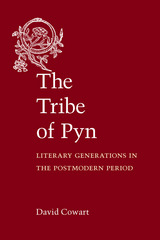 The Tribe of Pyn: Literary Generations in the Postmodern Period
David Cowart
University of Michigan Press, 2015 In The Tribe of Pyn, Cowart offers illuminating readings of several important novelists now at the height of their powers, whose work has received fairly limited scholarly attention thus far. Jonathan Franzen, Alice Walker, David Foster Wallace, Gloria Naylor, Richard Powers, and a raft of others are examined with lapidary care. Wrestling with the challenges inherent to distinguishing generational character (especially in the postmodern context, which is often marked by its disavowal of ideas of origin, etc.), Cowart teases out interactions and entanglements that help illuminate the work of the younger writers at the center of this study and also that of the trailblazers on its ragged frontiers. By comparing literary figures born in the 1940s, 1950s, 1960s, and later with those born in the 1920s and 1930s, Cowart seeks to map the changing terrain of contemporary letters. Hardly epigones, he argues, the younger writers add fresh inflections to the grammar of literary postmodernism. Younger writers can continue to “make it new,” Cowart establishes, without needing to dismantle the aesthetic they have inherited from a parental generation.
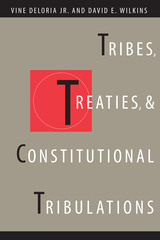 Tribes, Treaties, and Constitutional Tribulations
By Vine Deloria, Jr., and David E. Wilkins
University of Texas Press, 2000 "Federal Indian law . . . is a loosely related collection of past and present acts of Congress, treaties and agreements, executive orders, administrative rulings, and judicial opinions, connected only by the fact that law in some form has been applied haphazardly to American Indians over the course of several centuries. . . . Indians in their tribal relation and Indian tribes in their relation to the federal government hang suspended in a legal wonderland." In this book, two prominent scholars of American Indian law and politics undertake a full historical examination of the relationship between Indians and the United States Constitution that explains the present state of confusion and inconsistent application in U.S. Indian law. The authors examine all sections of the Constitution that explicitly and implicitly apply to Indians and discuss how they have been interpreted and applied from the early republic up to the present. They convincingly argue that the Constitution does not provide any legal rights for American Indians and that the treaty-making process should govern relations between Indian nations and the federal government.
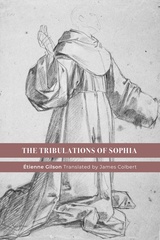 The Tribulations of Sophia
Etienne Gilson
St. Augustine's Press, 2021 The Tribulations of Sophia was the last of Étienne Gilson's books to appear during his lifetime (1967). French readers would have recognized the title's echo of a nineteenth century children's book by the Countess of Ségur, the Misfortunes of Sophia. Its disobedient protagonist, young Sophia (of whom the American Dennis the Menace was to be a very pale imitation) is the cause of a sequence of minor domestic catastrophes. One wonders if Gilson is proposing that the Catholic intellectual world of his day is fraught with her descendants.
The heart of the book is entitled, “Three Lectures on Thomism and its Current Situation.” During the Second Vatican Council and its immediate aftermath, the status of Thomism in Catholic intellectual circles and institutions was vigorously challenged. Once again, the problem of Thomism emerges: What is Thomism and where does it belong? Gilson’s devotion to elaborating the nature of Christian philosophy compels him to confront this question head-on. Indeed, because Gilson approaches Thomism as the veritable model for Christian philosophy he cannot ignore the attempts to suppress or supplant it.
And yet this section also contains a fourth lecture on Teilhard de Chardin, whom Gilson knew and held in high esteem. Was Teilhard's thought to become the new Christian philosophy and theology? Was it even appropriate to label his thought as proper philosophy and theology?
The second, somewhat shorter, portion of the book wrestles with the theme of dialogue that was very much in vogue in the 1960s. The central figure here is the French Marxist Roger Garaudy, internationally known for his call to dialogue with Christians. Gilson denies any possibility of such a dialogue, and certainly any usefulness in it. “I regret to say—not having myself any of the virtues of a skilled dialoguer, which are not to listen to what is being said and to take it in a sense that makes it easy to refute. It is a chimerical hope that there should be two people who proceed otherwise.” But specifically on the point of Christian and Marxist dialogue, from the massive ideological, bestial corpus of Marxism Gilson carves out its fundamental need for the world and serves it back to Garaudy, but without garnish, for among Marxists each has his own particular manner of impoverishing the concept of man.
What might be called the postscript of the book, “Wandering Amid the Ruins,” shares some of Gilson's own experiences and unease in the unsettled situation of the Catholic Church at that time. “The Council was the work of truly supernatural courage. For more than three centuries the Church was harshly blamed for not having taken the initiative to make necessary reforms in the sixteenth century.” Yet Gilson laments that perhaps the manner of enacting reform is confused and not in all cases simply intent on reversing the trends of empty churches and the vocations drought. Perhaps we have not understood the Council at all. Gilson’s kind but clear description of the turmoil in Catholic teaching and thought is for the reader essential to any understanding of the tension and transitions of this period of history.
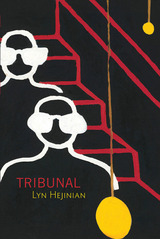 Tribunal
Lyn Hejinian
Omnidawn, 2019 The three works of poetry that constitute Tribunal were written in the current context of seemingly ubiquitous warfare and the specter of unabashed neo-fascism, ethno-nationalism, and—especially in the United States—reassertions of white supremacy. As renowned poet Lyn Hejinian recounts, the inspiration for Tribunal gradually took shape over the course of almost a decade in the collaborative work she has done to fight neoliberal policies that dismantle the public sphere through actions that include privatizing the commons, busting unions, and imposing a corporate, profiteering model on a range of institutions including public higher education. Hejinian explores a broad range of responses to our deeply troubling historical period in Tribunal’s three collections. These poems express an emotional scope that includes fury, sadness, and even, at times, something very close to pity for our humanity, perpetually unable to avoid its own penchant for cruelty. Hejinian is the rare poet who can bring to the page a rich, complex rendering of how mutually exclusive emotions can exist simultaneously. We lose safety and surety, but we gain a wider lens on contemporary crises from her sometimes lacerating, sometimes intensely beautiful lyric verse. It’s only in such an artistic and emotional landscape that readers, thinkers, artists, workers, and all comrades against injustice can manage to keep inventing, imagining, and hoping. Throughout these crises, the poet returns to language as a meaningful space in which to grapple with a seemingly endless cycle of conflict. While the works can be read as expressions of protest or dissent, they powerfully convey an argument for artmaking itself—and a turn to its affirmation of life.
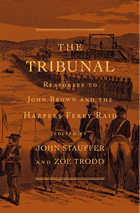 The Tribunal: Responses to John Brown and the Harpers Ferry Raid
John Stauffer
Harvard University Press, 2012 When John Brown led twenty-one men in an attack on the federal arsenal at Harpers Ferry on October 16, 1859, he envisioned a biblical uprising of millions of armed bondsmen, thus ridding the nation of the scourge of slavery. The insurrection did not happen, and Brown and the other surviving raiders were quickly captured and executed. This landmark anthology, which collects contemporary speeches, letters, newspaper articles, journals, poems, and songs, demonstrates that Brown’s actions nonetheless altered the course of American history.
John Stauffer and Zoe Trodd have assembled an impressive and wide-ranging collection of responses to Brown’s raid: Brown’s own words, northern and southern reactions, international commentary, and reflections from the Civil War and Reconstruction era. Represented here are all the figures one would expect to see (Lincoln, Thoreau, Frederick Douglass), many surprises (John Wilkes Booth, Karl Marx, Giuseppe Garibaldi), as well as free and enslaved blacks and white citizens. The result is a book that views Brown from multiple vantage points.
The Introduction describes the panic that Harpers Ferry created in the South, splitting the Democratic Party along sectional lines and altering the outcome of the 1860 presidential election. Without Brown, it speculates, the Civil War and emancipation would have been delayed by another four years—probably more—which in turn might have disrupted emancipation movements in Brazil, Cuba, and even Russia. The Tribunal is essential reading for anyone interested in the Civil War era and the history of social protest movements.
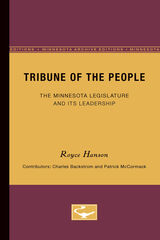 Tribune of the People: The Minnesota Legislature and Its Leadership
Royce Hanson
University of Minnesota Press, 1990
Tribune of the People was first published in 1990.The Minnesota legislature enjoys a national reputation for confronting difficult state problems and devising innovative ways of dealing with them. In recent years, however, as issues have become increasingly complex and controversial, public respect for the legislature has declined. In 1985 the legislature commissioned a study to analyze this troubling situation. Tribune of the People is the result of that study.Working under the auspices of the Hubert H. Humphery Institute of Public Affairs and the political science department of the University of Minnesota, the authors conducted in-depth interviews supplemented with independent research to evaluate the legislature in the quarter century since reapportionment was mandated by the U.S. Supreme Court. Moving from a historical view to a series of close-up shots, the study considered the decision-making process during the 1985-86 session: how the legislators confronted divisive issues such as the Environmental Superfund, taxes, and health policy. Finally, the study suggests a number of procedural and staffing reforms aimed at restoring public confidence in the institution. Most notable among them are proposals for reducing the size of the legislature and making it a unicameral body.
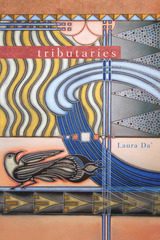 Tributaries
Laura Da'
University of Arizona Press, 2015 In Tributaries, poet Laura Da’ lyrically surveys Shawnee history alongside personal identity and memory. With the eye of a storyteller, Da’ creates an arc that flows from the personal to the historical and back again. In her first book-length collection, Da’ employs interwoven narratives and perspectives, examines cultural archetypes and historical documents, and weaves rich images to create a shifting vision of the past and present.
Precise images open to piercing meditations of Shawnee history. In the present, a woman watches the approximation of a scalping at a theatrical presentation. Da’ writes, “Soak a toupee with cherry Kool-Aid and mineral oil. / Crack the egg onto the actor’s head. / Red matter will slide down the crown / and egg shell will mimic shards of skull.” This vivid image is paired with a description of the traditional removal path of her own Shawnee ancestors through small towns in Ohio.
These poems range from the Midwestern landscapes of Ohio and Oklahoma to the Pacific Northwest, and the importance of place is apparent. Tributaries simultaneously offers us an extended narrative rumination on the impact of Indian policy and speaks to the contemporary experiences of parenthood and the role of education in passing knowledge from one generation to the next. This collection is composed of four sections that come together to create an important new telling of Shawnee past and present.
 Tributary Voices: Literary and Rhetorical Exploration of the Colorado River
Paul A. Formisano
University of Nevada Press, 2022 The Colorado River is in crisis. Persistent drought, climate change, and growing demands from ongoing urbanization threaten this life-source that provides water to more than forty million people in the U.S. and Mexico. Coupled with these challenges are our nation’s deeply rooted beliefs about the region as a frontier, garden, and wilderness that have created competing agendas about the river as something to both exploit and preserve. Over the last century and a half, citizens and experts looked to law, public policy, and science to solve worsening water problems. Yet today’s circumstances demand additional perspectives to foster a more sustainable relationship with the river.
Through literary, rhetorical, and historical analysis of some of the Colorado River’s lesser-known stakeholders, Tributary Voices considers a more comprehensive approach to river management on the eve of the one-hundredth anniversary of the signing of the Colorado River Compact, which governs the allocation of water rights to the seven states in the region. Ranging from the early twentieth century to the present, Tributary Voices examines nature writing, women’s narratives, critiques of dam development, the Latina/o communities’ appeals for river restoration, American Indian authors’ and tribal nations’ claims of water sovereignty, and teachings about environmental stewardship and provident living. This innovative study models an interdisciplinary approach to water governance and reinvigorates our imagination in achieving a more sustainable water ethic.
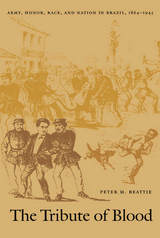 The Tribute of Blood: Army, Honor, Race, and Nation in Brazil, 1864–1945
Peter M. Beattie
Duke University Press, 2001 In The Tribute of Blood Peter M. Beattie analyzes the transformation of army recruitment and service in Brazil between 1864 and 1945, using this history of common soldiers to examine nation building and the social history of Latin America’s largest nation. Tracing the army’s reliance on coercive recruitment to fill its lower ranks, Beattie shows how enlisted service became associated with criminality, perversion, and dishonor, as nineteenth- and early-twentieth-century Brazilian officials rounded up the “dishonorable” poor—including petty criminals, vagrants, and “sodomites”—and forced them to serve as soldiers.
Beattie looks through sociological, anthropological, and historical lenses to analyze archival sources such as court-martial cases, parliamentary debates, published reports, and the memoirs and correspondence of soldiers and officers. Combining these materials with a colorful array of less traditional sources—such as song lyrics, slang, grammatical evidence, and tattoo analysis—he reveals how the need to reform military recruitment with a conscription lottery became increasingly apparent in the wake of the Paraguayan War of 1865–1870 and again during World War I. Because this crucial reform required more than changing the army’s institutional roles and the conditions of service, The Tribute of Blood is ultimately the story of how entrenched conceptions of manhood, honor, race, citizenship, and nation were transformed throughout Brazil.
Those interested in social, military, and South American history, state building and national identity, and the sociology of the poor will be enriched by this pathbreaking study.
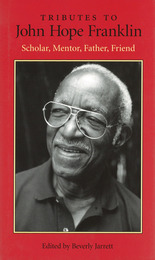 Tributes to John Hope Franklin: Scholar, Mentor, Father, Friend
Edited by Beverly Jarrett
University of Missouri Press, 2003
In 1947 John Hope Franklin, then a professor of history at North Carolina College for Negroes, wrote From Slavery to Freedom. Now in its eighth edition, that book, which redefined our understanding of American history, remains the preeminent record of the African American experience. With it and a dozen other books, Franklin has been established as the intellectual father of black studies.
Tributes to John Hope Franklin focuses on this esteemed scholar’s academic achievements, his humanitarian contributions, and his extraordinary legacy. This collection of comments by Franklin’s students, colleagues, family, and friends captures the man and his work for future generations. Tributes offered by Franklin’s admirers, Walter B. Hill Jr., David Levering Lewis, Alfred A. Moss Jr., Darlene Clark Hine, Loren Schweninger, Daryl Michael Scott, George M. Fredrickson, Mary Frances Berry, and many others, attest to Franklin’s commitment to his intellectual pursuits, to public service, and, most important, to his students.
Franklin’s dedication to mentoring those who sought his help, as well as providing for his family, is beyond compare. In one essay, John W. Franklin offers an inside view of growing up with John Hope and Aurelia Franklin, detailing the travels and associations that were a part of his experience as their son. Alfred Moss, coauthor of the last three editions of From Slavery to Freedom, shares special images of Franklin as mentor to a young Anglican priest.
Genna Rae McNeil shows us the quintessential teacher through the eyes of a passionate young scholar beginning her own voyage into the study of American history. George Fredrickson takes on the challenge of explaining the complexity of the work of this man who has been both a fervent proponent of racial equality and a practitioner of “detached, objective, dispassionate historical scholarship.”
Each of the pieces—by men and by women, by blacks and by whites, by several generations of participants in the twentieth century’s journey toward a better America—recalls for us what a vital role John Hope Franklin has played in that voyage. Tributes to John Hope Franklin is a joy to read and an incredible opportunity to celebrate a life and a body of historical work dedicated to achieving and sharing the wisdom that scholarly excellence provides.
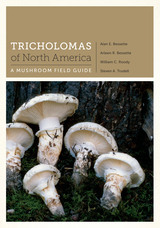 Tricholomas of North America: A Mushroom Field Guide
By Alan E. Bessette, Arleen R. Bessette, William C. Roody, Steven A. Trudell
University of Texas Press, 2013 More than 100 mushrooms in the genus Tricholoma have been reported in North America. Most are relatively large, showy mushrooms that grow on the ground near many species of temperate forest trees, both hardwoods and conifers. They typically fruit from late summer through early winter or even into spring in warmer areas. Some are fine edibles, including the matsutake. Others are inedible or even poisonous. Filling the gap between technical publications and the limited representation of Tricholomas in general mushroom field guides, this book is the first comprehensive guide to North American Tricholomas. It contains more than 170 of the best documentary photographs available, often with more than one image of a species to illustrate the dramatic variation exhibited by many Tricholomas. The species descriptions provide extensive identification information including scientific and common names, macroscopic and microscopic features, occurrence/habit, edibility, and a comment section that addresses such things as synonomy, comparisons with similar species, varietial differences, explanations of species’ epithets, and other useful or interesting information. In addition, the authors provide a general introduction to Tricholomas that discusses identification features, ecology, simple chemical tests (for identification), and how to use the keys provided in this book.
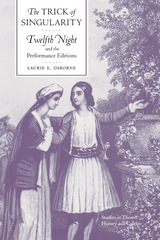 The Trick of Singularity: "Twelfth Night" and the Performance Editions
Laurie E. Osborne
University of Iowa Press, 1996 In this innovative union of textual studies and performance criticism, Laurie Osborne explores the important ways in which an apparently single, unproblematic text is in fact multiple and various. Through a close analysis of the performance editions of Twelfth Night, she argues that the complex interaction between text and performance establishes a comedy as a work realized within changing social and erotic constructions. Because it appears in a relatively clean and dated version in the Folio, Twelfth Night seems to be exempt from arguments for variant texts—but there are significant and persistent variations represented in the performance editions. Osborne's careful reading of these provides a crucial bridge linking theatre history and textual criticism. She employs a wide variety of approaches and disciplines—Shakespearean and Renaissance studies, theatre history, gender studies, contemporary literary criticism, and cultural history—to provide a fresh and engaging yet rigorous view. Although she focuses on Twelfth Night, Osborne's argument applies more broadly to the history of performance and criticism, including a chapter on video versions of the play. Widely read in Shakespearean and Renaissance scholarship, she employs her archival research in promptbooks, the publishing history of the plays, and the history of Shakespearean production to accomplish a major job of scholarly integration and analysis of Shakespearean drama in performance.
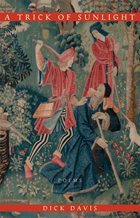 A Trick of Sunlight: Poems
Dick Davis
Ohio University Press, 2006 In his new collection of poems, Dick Davis, the acclaimed author of Belonging, addresses themes that he has long worked with—travel, the experience of being a stranger, the clash of cultures, the vagaries of love, the pleasures and epiphanies of meaning that art allows us. But A Trick of Sunlight introduces a new theme that revolves around the idea of happiness—is it possible, must it be illusory, is its fleetingness an essential part of its nature so that disillusion is inevitable? Many of the poems are shaded by the poet’s awareness of growing older, and by the ways that this both shuts down many of life’s possibilities and frees us from their demands. The levity of some verses here is something of a departure for Davis, but his insights can be mordant too, revealing darknesses as often as they invoke frivolity. As Davis’s readers have come to expect, the poems in A Trick of Sunlight. aim at the aesthetic satisfactions that accompany accurate observations expressed with wit, intelligence, and grace. But they achieve as well an immediacy and rawness of vision that seem to belie his careful craft.
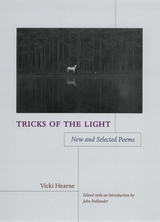 Tricks of the Light: New and Selected Poems
Vicki Hearne
University of Chicago Press, 2007 From The Horse That, Trotting
The horse that, trotting with open heart
Against the wind, achieves bend and flow
Will live forever. So far, so good,
But they never do, until too late,
Bend properly and time spreads from
The momentary hesitations
Of their spines, circles their tossing necks,
Falls from their teeth like rejected oats,
Litters the ground like penitence.
This is where we come in, where the drop
Of time congeals the air and someone
Speaks to the discouraged grass . . .
Tricks of the Light explores the often fraught relationships between domestic animals and humans through mythological figurations, vibrant thought, and late-modern lyrics that seem to test their own boundaries. Vicki Hearne (1946–2001), best known and celebrated today as a writer of strikingly original poetry and prose, was a capable dog and horse trainer, and sometimes controversial animal advocate.
This definitive collection of Hearne’s poetry spans the entirety of her illustrious career, from her first book, Nervous Horses (1980), to never-before-published poems composed on her deathbed. But no matter the source, each of her meditative, metaphysical lyrics possesses that rare combination of philosophical speculation, practical knowledge of animals, and an unusually elegant style unlike that of any other poet writing today. Before her untimely death, Hearne entrusted the manuscript to distinguished poet, scholar, and long-time friend John Hollander, whose introduction provides both critical and personal insight into the poet’s magnum opus. Tricks of the Light—acute, vibrant, and deeply informed—is a sensuous reckoning of the connection between humans and the natural world.
Praise for The Parts of Light
“Hearne . . . strives to capture exactly what she knows she can't—the intense immediacy of animal consciousness, a consciousness free of the moral vagaries and intellectual preoccupations that pockmark human experience. Her style, smooth in some places, choppy in others, reflects both the wholeness of animal presence and the jarring, fragmentary nature of human reason and reflection. Hearne's poems demand participation, refuse passive enjoyment; she dares the reader to stay in the saddle.”—Publishers Weekly
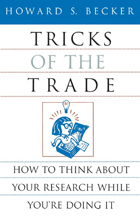 Tricks of the Trade: How to Think about Your Research While You're Doing It
Howard S. Becker
University of Chicago Press, 1998 A classic guidebook from a master teacher and landmark researcher
Drawing on decades of experience as a researcher and teacher, Howard Becker brings to students and researchers the many valuable techniques for conducting research that he learned and taught. Tricks of the Trade will help students learn how to think about research projects. Assisted by Becker's sage advice, students can make better sense of their research and simultaneously generate fresh ideas on where to look next for new data. The tricks cover four broad areas of social science: the creation of the "imagery" to guide research; methods of "sampling" to generate maximum variety in the data; the development of "concepts" to organize findings; and the use of "logical" methods to explore systematically the implications of what is found. Becker's advice ranges from simple tricks such as changing an interview question from "Why?" to "How?" (as a way of getting people to talk without asking for a justification) to more technical tricks such as how to manipulate truth tables.
Becker has extracted these tricks from a variety of fields such as art history, anthropology, sociology, literature, and philosophy; and his dazzling variety of references ranges from James Agee to Ludwig Wittgenstein. Becker finds the common principles that lie behind good social science work, principles that apply to both quantitative and qualitative research. He offers practical advice, ideas students can apply to their data with the confidence that they will return with something they hadn't thought of before.
 Trickster
Randall Potts
University of Iowa Press, 2014 Trickster opens with a crank call to the reader: “How was I to know / You were thin, your garden / Was covered in smoke / That you sat in your house / Coughing?” Over the course of these beautiful and eerily accomplished poems, Potts's reader is taken on a journey that is at once time-scarred and resolutely contemporary, earthy and haunted, moving from estrangement to reconciliation. Amidst a deepening sense of crisis, the Trickster of Potts’s imagination emerges as aggressor, prankster, victim, and healer, forging resilient music from the afflictions of the mind's “infested nest.”
Trickster veers quickly from meditation and narrative to song, plunging the reader into a liminal world of dreams, archaic lyrics, and fables, populated with figures ranging from the Hawk and Worm, the Cat and Dove, to Cold and Death. It is a wilderness in which all things are alive: “a blade of grass / equal to the suffering / of a lifetime.” Yet it is also a place of menace, “where a fly with one wing, keeps / tipping over in the grass, where / the ants will have him.” Whether or not the Trickster reaches utopia, he reckons with the world that is achievable on earth and in words, “those dreams of woods / relayed to you.”
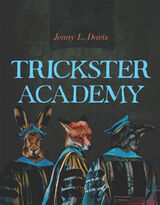 Trickster Academy
Jenny L. Davis
University of Arizona Press, 2022 Trickster Academy is a collection of poems that explore being Native in Academia—from land acknowledgement statements, to mascots, to the histories of using Native American remains in anthropology. Jenny L. Davis’ collection brings humor and uncomfortable realities together in order to challenge the academy and discuss the experience of being Indigenous in university classrooms and campuses. Organized around the premise of the Trickster Academy— a university space run by, and meant for training, Tricksters— this collection moves between the personal dynamics of a Two-Spirit/queer Indigenous woman in spaces where there are few, if any, others and a Trickster’s critique of those same spaces. Trickster Academy is playful at times, yet more complicated and salient issues are at the heart of these poems. Davis’ Trickster Academy deeply challenges the institutions that still hold Indigenous remains in their archives and storage rooms, and the insincerities of the academy when it comes to acknowledging Indigenous peoples. The realities that the poems in Trickster Academy address are not only relevant to people in academic positions. From leaving home, to being the only Indian in the room, to having to deal with the constant pressures to being a ‘real Indian’, these poems illuminate the shared experiences of Indians across many regions, and all of us who live amongst Tricksters.
 Trickster and Hero: Two Characters in the Oral and Written Traditions of the World
Harold Scheub
University of Wisconsin Press, 2012 The trickster and the hero, found in so many of the world’s oral traditions, are seemingly opposed but often united in one character. Trickster and Hero provides a comparative look at a rich array of world oral traditions, folktales, mythologies, and literatures—from The Odyssey, The Epic of Gilgamesh, and Beowulf to Native American and African tales. Award-winning folklorist Harold Scheub explores the “Trickster moment,” the moment in the story when the tale, the teller, and the listener are transformed: we are both man and woman, god and human, hero and villain.
Scheub delves into the importance of trickster mythologies and the shifting relationships between tricksters and heroes. He examines protagonists that figure centrally in a wide range of oral narrative traditions, showing that the true hero is always to some extent a trickster as well. The trickster and hero, Scheub contends, are at the core of storytelling, and all the possibilities of life are there: we are taken apart and rebuilt, dismembered and reborn, defeated and renewed.
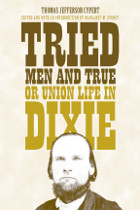 Tried Men and True, or Union Life in Dixie
Thomas J. Cypert, edited and with an introduction by Margaret M. Storey
University of Alabama Press, 2011 A gripping firsthand account of loyalty, resistance, and survival in Confederate Tennessee, this memoir reveals the untold story of Unionist courage behind enemy lines. Tried Men and True, or Union Life in Dixie is the memoir of a Union supporter in south-central Tennessee. In it, he chronicles in vivid and emotional detail the local tensions between Unionists and Confederates during the Civil War South and offers a rare first-person account of the guerrilla war that devastated Western Tennessee. Thomas Jefferson Cypert (1827-1918) was a staunch Union man of Wayne County, Tennessee. In 1863, he helped organize the Second Tennessee Mounted Infantry, a regiment of loyalist Southerners enlisted to combat Confederate cavalry in West Tennessee and Northern Alabama. Tried Men and True is Cypert’s memoir of his time as Captain of Company A, including his capture by Confederate cavalry and subsequent daring escape, in which he was aided by local Union sympathizers and slaves. After the Civil War, Cypert served two terms in the Tennessee State Senate, one of them during the heated first years of Reconstruction, when Tennessee disenfranchised former rebels and attempted to establish Unionist Republican rule in the state. Cypert clearly wrote his memoir to defend Unionism, condemn secession and rebellion, and support loyalists’ claims for post-war power through an account of their wartime sacrifices. Never before published, the manuscript has been preserved in nearly perfect condition by Cypert’s descendants over the generations. This book is a remarkable and engagingly written account of resistance to the Confederacy by a group of southwestern Tennessee loyalists.
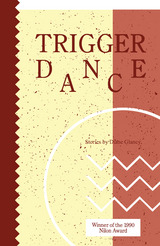 Trigger Dance
Diane Glancy
University of Alabama Press, 1991 1990 Winner of the Mildren P. Nilon Award for Minority Fiction
In Trigger Dance, her first collection of stories, Diane Glancy takes us to uneasy places where both the environment and the characters are at risk, where even the animals grieve. Sometimes the author's voice, sometimes the voices of the characters, tell us about their migrations, symbolic or literal. Diane Glancy's characters walk in two worlds and try to build a middle ground between white and native cultures. They are the offspring of those who survived the Trail of Tears. Some of the young men dance at powwows in tune with the dead. Filo and Parnetta buy a fridge at the Hardware Store on Muskogee Street, in Tahleqah, Oklahoma. Farther west, near Chickasha, Keyo can't read, while Joseph Sink, an Indian hermit, learns a word a day. Anna America remembers her shortcomings as a mother and her hard life as she waits in the Northeastern Cherokee County Shelter for her wings to unfold so she can leave this earth. In the title story, Roan mourns the fact that human beings have the power to destroy the earth. He's astonished that creation and cremation could be so closely linked. Even his father, when he feels death approach, demands to be cremated because "it's autumn in outer space." Roan's final vision in the sweat lodge is of the air red as leaves. He admonishes his people to be strong and responsible, to acknowledge that life is a sizeable endeavor. it.
Trigger Man: More Tales of the Motor City
Jim Ray Daniels
Michigan State University Press, 2011 Trigger Man is a superb collection of stories capturing the gritty spirit of Detroit and the sometimes grim circumstances of the characters shaped by its industry and economics. Grounded on the bleak streets of the Motor City, these stories also explore the mythical “Up North,” the idealized country of many Detroit workers’ fantasy—an escape from the concrete and metal reality of their daily lives. Daniels’ characters are resilient and defiant, inhabiting a world that has often placed them on the margins of society, scouring a declining region for spiritual providence. Building on Daniels’ earlier collections of stories, Trigger Man brings vivid life to individuals struggling both to remain in and to flee the city that once sustained them.
 Trigger Warnings: Teaching Through Trauma
Edited by Ian Barnard, Ryan Ashley Caldwell, Jada Patchigondla, Aneil Rallin, Morgan Read-Davidson, Ethan Trejo, and Kristi Wilson
Lever Press, 2026 How do instructors navigate the tension between facilitating safe spaces for students while also challenging students intellectually in increasingly politicized classroom settings? How can trigger warnings be used to empower and/or support students and facilitate antiracist, queer, anticolonial, and other social justice-oriented pedagogies?
Trigger Warnings: Teaching Through Trauma brings theory and praxis to examine the ideological underpinnings and pedagogy around trigger warnings and trauma, offering multiple heuristics for classroom implementation. The ongoing interest in trigger warnings is partly a result of trigger warnings and trauma becoming more inextricably interwoven in the past few years in the wake of COVID-19, mental health crises, right-wing attacks on educational institutions, climate change, and attempts at political redress and educational equity. Critiques of trigger warnings come from all sides of the political and pedagogical spectra, and even scholars and practitioners who offer a trauma-informed approach to the topic are not unified in their view of the benefits or drawbacks of trigger warnings.
Trigger Warnings: Teaching Through Trauma provides insights through a range of forms: research articles, personal essays, long and short teaching narratives, student perspectives, memoirs, vignettes, autoethnographies, reflections, case studies, manifesto, theory, and history. Not only does this collection create a more varied engagement experience for readers, but, in line with recent scholarship in “counterstory,” it also allows for a wider variety of voices to be heard and for the articulation of experiences that might not be well accommodated by traditional scholarly essays.
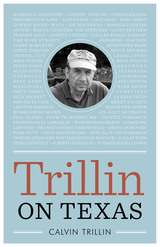 Trillin on Texas
By Calvin Trillin
University of Texas Press, 2011 A remarkably perceptive portrait of the Lone Star State, this collection of pieces from the New Yorker, the Nation, and other publications presents highlights of bestselling author Calvin Trillin’s classic writing on Texas subjects.
"Yes, I do have a Texas connection, but, as we say in the Midwest, where I grew up, not so's you'd know it." So Calvin Trillin introduces this collection of articles and poems about a place that turns up surprisingly often when he's ostensibly writing about something else. Whether reporting on the American scene for the New Yorker, penning comic verse and political commentary for the Nation, or writing his memoirs, Trillin has bumped into Texas again and again. He insists that "this has not been by design . . . there has simply been a lot going on in Texas." Astute readers will note, however, that Trillin's family immigrated to the United States through the port of Galveston, and, after reading this book, many will believe that the Lone Star State has somehow imprinted itself in the family's imagination. Trillin on Texas gathers some of Trillin's best writing on subjects near to his heart—politics, true crime, food, and rare books, among them—which also have a Texas connection. Indulging his penchant for making "snide and underhanded jokes about respectable public officials," he offers his signature sardonic take on the Bush dynasty and their tendency toward fractured syntax; a faux, but quite believable, LBJ speech; and wry portraits of assorted Texas county judges, small town sheriffs, and Houston immigration lawyers. Trillin takes us on a mouthwatering pilgrimage to the barbecue joint that Texas Monthly proclaimed the best in Texas and describes scouting for books with Larry McMurtry—who rejects all of his "sleepers." He tells the stories of two teenagers who dug up half a million dollars in an ice chest on a South Texas ranch and of rare book dealer Johnny Jenkins, who was found floating in the Colorado River with a bullet wound in the back of his head. And he recounts how redneck movie reviewer "Joe Bob Briggs" fueled a war between Dallas's daily newspapers and pays tribute to two courageous Texas women who spoke truth to power—Molly Ivins and Sissy Farenthold. Sure to entertain Texans and other folks alike, Trillin on Texas proves once again that Calvin Trillin is one of America's shrewdest observers and wittiest writers.
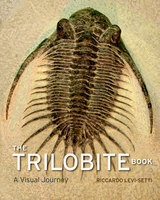 The Trilobite Book: A Visual Journey
Riccardo Levi-Setti
University of Chicago Press, 2014 Distant relatives of modern lobsters, horseshoe crabs, and spiders, trilobites swam the planet’s prehistoric seas for 300 million years, from the Lower Cambrian to the end of the Permian eras—and they did so very capably. Trilobite fossils have been unearthed on every continent, with more than 20,000 species identified by science. One of the most arresting animals of our pre-dinosaur world, trilobites are also favorites among the fossil collectors of today, their crystalline eyes often the catalyst for a lifetime of paleontological devotion. And there is no collector more devoted—or more venerated—than Riccardo Levi-Setti. With The Trilobite Book, a much anticipated follow-up to his classic Trilobites, Levi-Setti brings us a glorious and revealing guide to these surreal arthropods of ancient Earth.
Featuring specimens from Bohemia to Newfoundland, California to the Tucson Gem and Mineral Show, and Wales to the Anti-Atlas Mountains of Morocco, Levi-Setti’s magnificent book reanimates these “butterflies of the seas” in 235 astonishing full-color photographs. All original, Levi-Setti’s images serve as the jumping-off point for tales of his global quests in search of these highly sought-after fossils; for discussions of their mineralogical origins, as revealed by their color; and for unraveling the role of the now-extinct trilobites in our planetary history.
Sure to enthrall paleontologists with its scientific insights and amateur enthusiasts with its beautiful and informative images, The Trilobite Book combines the best of science, technology, aesthetics, and personal adventure. It will inspire new collectors for eras to come.
Trilobites
Riccardo Levi-Setti
University of Chicago Press, 1995 Long before dinosaurs roamed the earth, there were trilobites—one of the most striking animals to populate prehistoric seas and whose fossils are favorites among collectors today. From the giant trilobites of Newfoundland to fascinating new specimens from Morocco, Levi-Setti's magnificent book brings these "butterflies of the sea" to life for everyone curious about our remote past
This second edition features coverage of a greater variety of trilobites, an improved photographic atlas reorganized to present their evolutionary progression, and over 200 photographs.
Trimming the Sails: The Comparative Political Economy of Expansionary Fiscal Consolidations
Istvan Benczes
Central European University Press, 2008 The book provides a clear, multidisciplinary and systematic analysis of the relatively new concept of the so-called expansionary fiscal consolidations. This concept suggests that fiscal adjustment should not be in trade-off with economic growth if certain conditions are met. But why do only a few countries and only at certain times experience the expansionary effects, while others not at all? The necessary institutional conditions and circumstances have been totally neglected in the literature, or analyzed only partially at best.
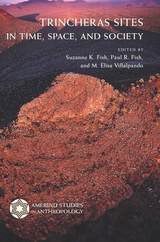 Trincheras Sites in Time, Space, and Society
Edited by Suzanne K. Fish, Paul R. Fish, and M. Elisa Villalpando
University of Arizona Press, 2008 The intriguing hilltop archaeological sites known as cerros de trincheras span almost three millennia, from 1250 BC to AD 1450. Archaeologists have long viewed them as a unitary phenomenon because they all have masonry architecture and occur mostly on low volcanic peaks. Scattered across the southwestern United States and northwestern Mexico, these sites received little comprehensive research until the 1980s. This first volume in the Amerind Studies in Archaeology series from the Amerind Foundation documents considerable variability among trincheras sites with respect to age, geographic location, and cultural affiliation.
This multi-author volume integrates a remarkable body of new data representing a textbook-like array of current research issues and methodologies in the archaeology of the region. Scholars from the United States and Mexico offer original research on trincheras sites in Chihuahua, Sonora, Arizona, and New Mexico. Scales of focus range from intensive intrasite sampling to the largest contiguous survey in the region. Authors incorporate spatial analyses, artifact studies, environmental and subsistence data, ethnographic analogs, ethnohistorical records, cross-cultural comparisons, archaeology, and archival resources.
The volume’s discussions contribute innovative approaches to worldwide interpretations of landscapes marked by hilltop sites. Contributors present meticulous research arguing that many trincheras sites were primarily used for habitation and ceremonial rites, in addition to previously predominant views of them as defensive refuges. Because trincheras occupations date from the late preceramic era to shortly before Spanish contact, authors relate them to early forms of agriculture, the emergence of village life, the appearance of differentiated settlement systems, and tendencies toward political and ritual centralization.
Detailed maps and figures illustrate the text, and close-up aerial photographs capture the visual essence of the sites, highlighted by a section that includes color photographs and an essay by renowned photographer Adriel Heisey.
Contributors:
Christian E. Downum
Paul R. Fish
Suzanne K. Fish
Robert J. Hard
Adriel Heisey
Stephen A. Kowalewski
Randall H. McGuire
Ben A. Nelson
John R. Roney
Judith Taylor
M. Elisa Villalpando
Joseph Vogel
Henry Wallace
David R. Wilcox
J. Scott Wood
Trinidad Yoruba: From Mother-Tongue to Memory
Maureen Warner-Lewis
University of Alabama Press, 2009 A deeply informed Afrocentric view of language and cultural retention under slavery.
Maureen Warner-Lewis offers a comprehensive description of the West African language of Yoruba as it has been used on the island of Trinidad in the southern Caribbean. The study breaks new ground in addressing the experience of Africans in one locale of the Africa Diaspora and examines the nature of their social and linguistic heritage as it was successively retained, modified, and discarded in a European-dominated island community.
A Trinitarian Anthropology: Adrienne von Speyr & Hans Urs von Balthasar in Dialogue with Thomas Aquinas
Michele M. Schumacher
Catholic University of America Press, 2014 In this magisterial work, Michele M. Schumacher seeks to promote dialogue between disciples of the Swiss theologian Hans Urs von Balthasar (d. 1988) and those of the church's common doctor, St. Thomas Aquinas (d. 1274) on a critical theological question. How are analogies and metaphors from the philosophy and theology of the person (anthropology) rightly used to address the mystery of the Trinity? She does so by considering the specific setting of Balthasar's theology: the inseparability of his work from that of the Swiss physician and mystic Adrienne von Speyr (d. 1967).
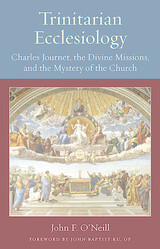 Trinitarian Ecclesiology: Charles Journet, the Divine Missions, and the Mystery of the Church
John F. O'Neill
Catholic University of America Press, 2023 Venerable Fulton Sheen once famously said that “There are not one hundred people in the United States who hate the Catholic Church, but there are millions who hate what they wrongly perceive the Catholic Church to be – which is, of course, quite a different thing.” What is the true understanding of the mystery of the Church? In Lumen Gentium, the Church famously identifies herself as the sacrament of salvation, and various attempts have been made at developing an ecclesiology rooted in this idea. Another approach, nevertheless, prominent in the opening chapter of Lumen Gentium, is the relation of the Church to the Trinity in light of the divine missions, especially those of the Incarnation and Pentecost.
Trinitarian Ecclesiology is an example of this approach to the mystery of the Church that places the divine missions at the head and the heart of the work. The order of Journet's work is based on the four causes of the Church. Journet situates the treatise on the hierarchy in its proper place as belonging to the efficient cause of the Church in order to treat the more central mystery of the Church in her formal and material causes, namely the sanctifying gift of fully Christic charity and its visible manifestation.
While Journet’s magisterial work may already be identified as a Trinitarian Ecclesiology, recent research into the Trinitarian theology of St. Thomas Aquinas has deepened our understanding of his teaching, particularly in the way that creatures can relate to the divine persons in the divine missions. With a clearer understanding of the relation of creatures to the divine persons rooted in grace and its effects, a deeper vision of the mystery of the Church emerges, one that sees the Church as the visible mission of the Holy Spirit, inseparably joined with the visible mission of the Son in the Incarnation. The Great Mystery of Christ and the Church is the unity of the visible missions of the Son and the Spirit who have been sent into the world for our salvation.
The Trinity
Saint Hilary of Poitiers
Catholic University of America Press, 1954 No description available
The Trinity
Saint Augustine
Catholic University of America Press, 1963 No description available
 Trinity: An Illustrated History of the World's First Atomic Test
Emily Seyl
University of Chicago Press, 2026 Explore the scientific crescendo of the Manhattan Project through newly contextualized and never-before-seen photographs from Los Alamos National Laboratory’s legacy collections—some just declassified.
Twenty-one days before the world learned of the atomic bomb upon its wartime use against Japan, a team of scientists led by J. Robert Oppenheimer detonated the first nuclear device on a remote stretch of New Mexico desert, in an operation codenamed Trinity. Both a military proof test and an elaborate, well-documented scientific experiment, the trial shot on July 16, 1945, brought under the control of humankind a new fire: the energy of the atom.
In this expertly curated journey through the beginning of the atomic age, hundreds of carefully restored photographs, still frames, and once-secret documents bring new and vivid focus to a watershed moment in science and history. Written for all to understand, Trinity weaves steadily through subplots and surprises as it traces the evolving, looming backdrop of a world at war. It shadows the humans and gadgets cast into the ruggedness of the test operation; dissects a fiery mushroom cloud unfurling frame by frame, frozen in time; and follows soldiers, scientists, and two atomic bombs across the Pacific Ocean to Tinian Island, onto the strike planes Enola Gay and Bockscar, and to Hiroshima and Nagasaki, the two Japanese cities devastated on August 6 and 9, 1945.
Inviting readers into the clandestine spaces where a new era began—behind the cameras, the bunker doors, the gates and guard posts—Trinity strives, grieves, celebrates, and ponders. It artfully captures that irreplicable summer when scientists invented urgently in the waning months of the “before”—and the tension between violence and progress, hope and fear, that persists into the after.
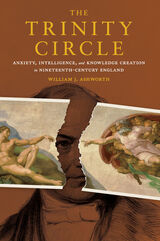 The Trinity Circle: Anxiety, Intelligence, and Knowledge Creation in Nineteenth-Century England
William J. Ashworth
University of Pittsburgh Press, 2021 The Trinity Circle explores the creation of knowledge in nineteenth-century England, when any notion of a recognizably modern science was still nearly a century off, religion still infused all ways of elite knowing, and even those who denied its relevance had to work extremely hard to do so. The rise of capitalism during this period—embodied by secular faith, political radicalism, science, commerce, and industry—was, according to Anglican critics, undermining this spiritual world and challenging it with a superficial material one: a human-centric rationalist society hell-bent on measurable betterment via profit, consumption, and a prevalent notion of progress. Here, William J. Ashworth places the politics of science within a far more contested context. By focusing on the Trinity College circle, spearheaded from Cambridge by the polymath William Whewell, he details an ongoing struggle between the Established Church and a quest for change to the prevailing social hierarchy. His study presents a far from unified view of science and religion at a time when new ways of thinking threatened to divide England and even the Trinity College itself.
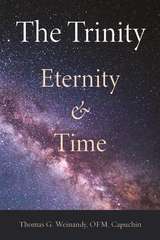 The Trinity: Eternity and Time
Thomas G. Weinandy
Sapientia Press of Ave Maria University, 2022 In this book, Thomas G. Weinandy, OFM, Cap., examines the Trinity's eternity in relationship to creation's time, particularly in relation to human persons. Because the persons of the Trinity are subsistent-relations-fully-in-act as the one God, they are immutable as to who they are in relationship to one another. Thus they exist in a timeless manner. Moreover, this volume assesses how the eternal Trinity is personally related to human persons over the course of time, and how human persons are personally related to the persons of the eternal Trinity.
In the first part of the book Weinandy treats, in an original and innovative manner, an issue that has been addressed throughout the history of theology, while the second part addresses a related topic that rarely, if ever, has been considered: How does the relationship between the persons of the Trinity and humans change through the saving works of the Trinity - the Incarnation, cross, and Resurrection - and the outpouring of the Holy Spirit? Through faith in the incarnated Son of God, and by participating in the sacraments of baptism and the Eucharist, human persons abide in the risen Jesus. The relationship between eternity and time, in the light of salvation, now takes on a whole new perspective, both epistemologically and ontologically. What will be the relationship between the eternal persons of the Trinity and glorified human beings at the end of time? Time will assume a new heavenly and everlasting dimension. But what will this heavenly novelty be like? The Trinity: Eternity and Time answers these questions and more in a thoroughly philosophical, biblical, and theological manner.
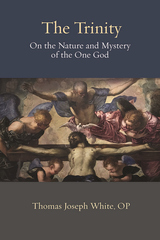 The Trinity: On the Nature and Mystery of the One God
Thomas Joseph White, OP
Catholic University of America Press, 2021 The Trinity is the central mystery of the Christian faith. What can we say about the divine nature, and what does it mean to say that God is Father, Son, Holy Spirit, three persons who are one in being? In this book, best selling author Thomas Joseph White, OP, examines the development of early Christian reflection on the Trinity, arguing that essential contributions of Patristic theology are preserved and expanded in the thought of Thomas Aquinas.
By focusing on Aquinas’ theology of the divine nature as well as his treatment of divine personhood, White explores in depth the mystery of Trinitarian monotheism. The Trinity: On the Nature and Mystery of the One God also engages with influential proposals of modern theologians on major topics such as Trinitarian creation, Incarnation and crucifixion, and presents creative engagements with these topics. Ultimately any theology of the cross is also a theology of the Trinity, and this book seeks to illustrate how the human life, death, and resurrection of Jesus reveal the inner life of God as Trinity.
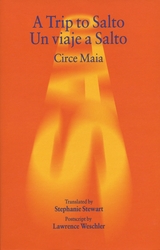 A Trip to Salto / Un viaje a Salto
Circe Maia
Swan Isle Press, 2004 “One day you’re going to ask me, ‘Mama, do you remember that trip to Salto?’ and I don’t want such questions to go unanswered.”
What happens on that trip to Salto opens this moving narrative by Uruguayan writer and poet Circe Maia. It begins with a mother and her young daughter desperately trying to catch an overnight train to Salto that they hope carries their husband and father, a physician and political prisoner who is traveling to the Salto prison accompanied by military guards after being interrogated in Montevideo. Their ensuing trip reveals the effects of a totalitarian regime on families and social relationships.
The tale of their journey is followed by a series of diary entries written by the mother between 1972 and 1974. The diary complements the opening account as each entry sensitively chronicles the family’s struggle to cope with daily life under prolonged separation, fear, and uncertainty. The diarist questions how one’s sense of community and love for country change when basic human rights can no longer be taken for granted.
Presented here in a bilingual edition, A Trip to Salto ultimately provides an intimate glimpse into Uruguayan history while it explores the deeper truths about an individual’s capacity to resist, adapt, and hope.
Tripartite minehunter Haarlem
Bob Roetering
Amsterdam University Press, 2023 In the eighties, the Royal Netherlands Navy acquired 15 minehunters of the Alkmaar-class. They were deployed worldwide in conflicts (the Red Sea, the Persian Gulf and the Libyan Sea). In all European waters they exercised and cleared historical ordnance. HNLMS Haarlem represents the rich history of the tripartite minehunters of the Royal Netherlands Navy.
 Triple Entendre: Furniture Music, Muzak, Muzak-Plus
Herve Vanel
University of Illinois Press, 2013 Triple Entendre discusses the rise and spread of background music in contexts as diverse as office workplaces, shopping malls, and musical performance. Hervé Vanel examines background music in several guises, beginning with Erik Satie's "Furniture Music" of the late 1910s and early 1920s, which first demonstrated the idea of a music not meant to be listened to and was later considered a precedent to modern, functional background music. Vanel argues that when the Muzak Corporation's commercialized ambient music became a predominant feature of modern life in the 1940s--both as a brand and a genre of background music--it also became a powerful instrument of social engineering in an advanced capitalist society. Different kinds of music were developed to encourage or incite greater productivity in the workplace, more energetic shopping, or more animated socializing. Vanel's discussion culminates in the creative response of the composer John Cage to the pervasiveness and power of background music in contemporary society. Cage neither opposed nor rejected Muzak, but literally answered its challenge by formulating a parallel concept that he called "Muzak-Plus." Forty years after Satie presented his work to general critical puzzlement, Cage saw how background music could be combined with mid-century technology and theories of art and performance to create a participatory soundscape on a scale that Satie could not have envisioned, again reconfiguring the listener's stance to music. By examining the subterranean connections existing between these three formulations of a singular idea, Triple Entendre analyzes and challenges the crucial boundary that separates an artistic concept from its actual implementation in life.
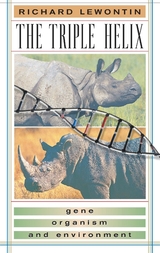 The Triple Helix: Gene, Organism, and Environment
Richard Lewontin
Harvard University Press, 2000 One of our most brilliant evolutionary biologists, Richard Lewontin has also been a leading critic of those—scientists and non-scientists alike—who would misuse the science to which he has contributed so much. In The Triple Helix, Lewontin the scientist and Lewontin the critic come together to provide a concise, accessible account of what his work has taught him about biology and about its relevance to human affairs. In the process, he exposes some of the common and troubling misconceptions that misdirect and stall our understanding of biology and evolution.
The central message of this book is that we will never fully understand living things if we continue to think of genes, organisms, and environments as separate entities, each with its distinct role to play in the history and operation of organic processes. Here Lewontin shows that an organism is a unique consequence of both genes and environment, of both internal and external features. Rejecting the notion that genes determine the organism, which then adapts to the environment, he explains that organisms, influenced in their development by their circumstances, in turn create, modify, and choose the environment in which they live.
The Triple Helix is vintage Lewontin: brilliant, eloquent, passionate, and deeply critical. But it is neither a manifesto for a radical new methodology nor a brief for a new theory. It is instead a primer on the complexity of biological processes, a reminder to all of us that living things are never as simple as they may seem.
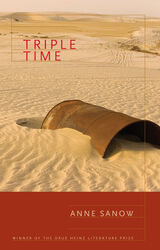 Triple Time
Anne Sanow
University of Pittsburgh Press, 2014 For Jill, a young American living in Saudi Arabia in the 1980s, life is in “a holding pattern” of long days in a restrictive place-“sandlocked nowhere,” as another expat calls it. Others don't know how to leave, and try to adopt the country as their own. And to those who were born there, the changes seem to come at warp speed: Thurayya, the daughter of a Bedouin chief, later finds herself living in a Riyadh high-rise where, she says, there are “worlds wound together with years.”
The characters in the linked stories in Triple Time are living an uneasy mesh of two divergent cultures, in a place where tradition and progress are continually in flux. These are tales of confliction-of old and new, rich and poor, sexual repression and personal freedom. We experience a barren yet strangely beautiful landscape jolted by sleek glass apartment towers and opulent fountains. On the fringes of urbanity, Bedouins traverse the desert in search of the next watering hole.
Beneath a surface of cultural upheaval, the stories hold deeper, more personal meanings. They tell of yearnings-for a time lost, for a homeland, for belonging, and for love. Anne Sanow reveals much about the culture, psyche, and essence of life in modern Saudi Arabia, where Saudis struggle to keep their traditions and foreigners muddle through in search of a quick buck or a last chance at making a life for themselves in a world that is quickly running out of hiding places.
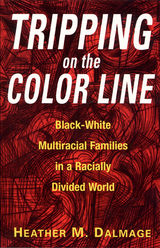 Tripping on the Color Line: Black-White Multiracial Families in a Racially Divided World
Dalmage, Heather M
Rutgers University Press, 2000 At the turn of the twentieth century W.E.B. DuBois predicted that the central problem facing the United States in the new century would be that of the “color line.” Now, at the beginning of a new century, we find many people straddling the color line. These people come from the growing number of multiracial families in America, families who search for places of comfort and familiarity in a racially polarized society whose educational system, places of worship, and neighborhoods continue to suffer a de facto segregation. This group has provoked an ever-widening debate and an upheaval in traditional racial thinking in the United States. Through in-depth interviews with individuals from black–white multiracial families, and insightful sociological analysis, Heather M. Dalmage examines the challenges faced by people living in such families and explores how their experiences demonstrate the need for rethinking race in America. She examines the lived reality of race in the ways multiracial family members construct and describe their own identities and sense of community and politics. She shows how people whose own very lives complicate the idea of the color line must continually negotiate and contest it in order not to reproduce it. Their lack of language to describe their multiracial existence, along with their experience of coping with racial ambiguity and with institutional demands to conform to a racially divided, racist system is the central theme of Tripping on the Color Line. By connecting the stories to specific issues, such as census categories, transracial adoption, intermarriage, as well as the many social responses to violations of the color line, Dalmage raises the debate to a broad discussion on racial essentialism and social justice. Exploring the dynamic of race as it pervades the lives of those close to the color line, Dalmage argues that the struggle for racial justice must include an understanding that race is a complex construct that is constantly shifting, and is something we do rather than something we simply are.
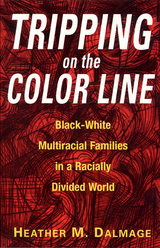 Tripping on the Color Line: Black-White Multiracial Families in a Racially Divided World
Dalmage, Heather M
Rutgers University Press, 2000 At the turn of the twentieth century W.E.B. DuBois predicted that the central problem facing the United States in the new century would be that of the “color line.” Now, at the beginning of a new century, we find many people straddling the color line. These people come from the growing number of multiracial families in America, families who search for places of comfort and familiarity in a racially polarized society whose educational system, places of worship, and neighborhoods continue to suffer a de facto segregation. This group has provoked an ever-widening debate and an upheaval in traditional racial thinking in the United States. Through in-depth interviews with individuals from black–white multiracial families, and insightful sociological analysis, Heather M. Dalmage examines the challenges faced by people living in such families and explores how their experiences demonstrate the need for rethinking race in America. She examines the lived reality of race in the ways multiracial family members construct and describe their own identities and sense of community and politics. She shows how people whose own very lives complicate the idea of the color line must continually negotiate and contest it in order not to reproduce it. Their lack of language to describe their multiracial existence, along with their experience of coping with racial ambiguity and with institutional demands to conform to a racially divided, racist system is the central theme of Tripping on the Color Line. By connecting the stories to specific issues, such as census categories, transracial adoption, intermarriage, as well as the many social responses to violations of the color line, Dalmage raises the debate to a broad discussion on racial essentialism and social justice. Exploring the dynamic of race as it pervades the lives of those close to the color line, Dalmage argues that the struggle for racial justice must include an understanding that race is a complex construct that is constantly shifting, and is something we do rather than something we simply are.
TriQuarterly 130
Susan Hahn
Northwestern University Press David Kirby
Charles Baxter
David H. Lynn
Marie Myung-Ok Lee
Barbara Hamby
Mary Morris
Debora Greger
Reginald Shepherd
Amit Majmudar
Page Hill Starzinger
Ricardo Pau-Llosa
Julianna Baggott
G.E. Murray
Patrice de La Tour du Pin--translated from the French by Jennifer Grotz
R.T. Smith
Rebecca Rasmussen
Steven A. Dabrowski
Celeste Ng
Nancy Eimers
Chard deNiord
Laura Kasischke
Derek Mong
Judith Valente
Debra Nystrom
John J. Clayton
Erika Dreifus
David Wagoner
Charlie Smith
Pimone Triplett
Megan Harlan
Jonathan Fink
Corey Marks
Anne Harding Woodwortth
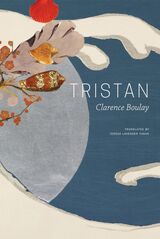 Tristan
Clarence Boulay
Seagull Books, 2021 Introducing a refreshing young French voice to English readers, this slim novel is both a riveting love story and an examination of humanity’s assault on the natural world.
After a seven-day journey on the South Atlantic Ocean aboard a lobster boat servicing Cape Town, Ida arrives on the island of Tristan. In the little island community, a village nestled on the slopes of a volcano whose only limits are the immense sky and the ocean, her bearings are gradually shifted as time slowly begins to expand.
When a cargo ship runs aground near a neighboring island, spilling massive amounts of oil, there is suddenly frantic activity in the town. Ida eagerly joins a team of three men who go to the small island to rescue oil-drenched penguins. One night, one of the men walks her back to the cabin where she is staying. They experience a night of love that continues to grow on the secluded island. For two weeks away from the world—the sea is rough, no boat can come to pick them up—the dance of their bodies and their all-consuming love is their only horizon.
Following the rhythm of the ocean and the untamed wind, Clarence Boulay brilliantly gives flesh to a dizzying sensation of sensual abandonment. Tristan raises emotional sails and upends all certainty.
The Tristan Legend: A Study in Sources
Sigmund Eisner
Northwestern University Press, 1969 Tristan und Isolde (Tristan and Iseult) remains one of the most popular romances ever written. Although the tale was believed to have originated in Germany, bards in France and Britain composed their own versions of the story, a tale of adultery, betrayal, mistaken identity, and thwarted love. In The Tristan Legend, Sigmund Eisner offers a study of the sources of the Tristan romance, tracing them through the various versions of the legend. He makes the original claim that the story was first written in North Britain during the seventh century, that it involves people who actually lived in the area, and that its writer wove in motifs from various classical legends to the tale of the two lovers.
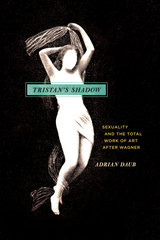 Tristan's Shadow: Sexuality and the Total Work of Art after Wagner
Adrian Daub
University of Chicago Press, 2013 Das Rheingold, Die Walküre, and Siegfried. Parsifal. Tristan und Isolde. Both revered and reviled, Richard Wagner conceived some of the nineteenth century’s most influential operas—and created some of the most indelible characters ever to grace the stage. But over the course of his polarizing career, Wagner also composed volumes of essays and pamphlets, some on topics seemingly quite distant from the opera house. His influential concept of Gesamtkunstwerk—the “total work of art”—famously and controversially offered a way to unify the different media of an opera into a coherent whole. Less well known, however, are Wagner’s strange theories on sexuality—like his ideas about erotic acoustics and the metaphysics of sexual difference. Drawing on the discourses of psychoanalysis, evolutionary biology, and other emerging fields of study that informed Wagner’s thinking, Adrian Daub traces the dual influence of Gesamtkunstwerk and eroticism from their classic expressions in Tristan und Isolde into the work of the generation of composers that followed, including Zemlinsky, d’Albert, Schreker, and Strauss. For decades after Wagner’s death, Daub writes, these composers continued to grapple with his ideas and with his overwhelming legacy, trying in vain to write their way out from Tristan’s shadow.
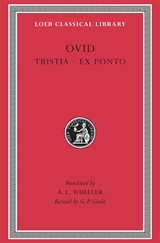 Tristia. Ex Ponto
Ovid
Harvard University Press The poet in exile.
Ovid (Publius Ovidius Naso, 43 BC–AD 17), born at Sulmo, studied rhetoric and law at Rome. Later he did considerable public service there, and otherwise devoted himself to poetry and to society. Famous at first, he offended the emperor Augustus by his Ars amatoria, and was banished because of this work and some other reason unknown to us, and dwelt in the cold and primitive town of Tomis on the Black Sea. He continued writing poetry, a kindly man, leading a temperate life. He died in exile.
Ovid’s main surviving works are the Metamorphoses, a source of inspiration to artists and poets including Chaucer and Shakespeare; the Fasti, a poetic treatment of the Roman year of which Ovid finished only half; the Amores, love poems; the Ars amatoria, not moral but clever and in parts beautiful; Heroides, fictitious love letters by legendary women to absent husbands; and the dismal works written in exile: the Tristia, appeals to persons including his wife and also the emperor; and similar Epistulae ex Ponto. Poetry came naturally to Ovid, who at his best is lively, graphic and lucid.
The Loeb Classical Library edition of Ovid is in six volumes.
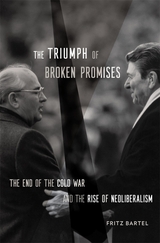 The Triumph of Broken Promises: The End of the Cold War and the Rise of Neoliberalism
Fritz Bartel
Harvard University Press, 2022 A powerful case that the economic shocks of the 1970s hastened both the end of the Cold War and the rise of neoliberalism by forcing governments to impose austerity on their own people.
Why did the Cold War come to a peaceful end? And why did neoliberal economics sweep across the world in the late twentieth century? In this pathbreaking study, Fritz Bartel argues that the answer to these questions is one and the same. The Cold War began as a competition between capitalist and communist governments to expand their social contracts as they raced to deliver their people a better life. But the economic shocks of the 1970s made promises of better living untenable on both sides of the Iron Curtain. Energy and financial markets placed immense pressure on governments to discipline their social contracts. Rather than make promises, political leaders were forced to break them.
In a sweeping narrative, The Triumph of Broken Promises tells the story of how the pressure to break promises spurred the end of the Cold War. In the West, neoliberalism provided Western leaders like Ronald Reagan and Margaret Thatcher with the political and ideological tools to shut down industries, impose austerity, and favor the interests of capital over labor. But in Eastern Europe, revolutionaries like Lech Walesa in Poland resisted any attempt at imposing market discipline. Mikhail Gorbachev tried in vain to reform the Soviet system, but the necessary changes ultimately presented too great a challenge.
Faced with imposing economic discipline antithetical to communist ideals, Soviet-style governments found their legitimacy irreparably damaged. But in the West, politicians could promote austerity as an antidote to the excesses of ideological opponents, setting the stage for the rise of the neoliberal global economy.
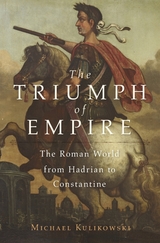 The Triumph of Empire: The Roman World from Hadrian to Constantine
Michael Kulikowski
Harvard University Press, 2016 “A genuinely bracing and innovative history of Rome.”
—Times Literary Supplement
The Triumph of Empire takes us into the political heart of imperial Rome and recounts the extraordinary challenges overcome by a flourishing empire. Roman politics could resemble a blood sport: rivals resorted to assassination as emperors rose and fell with bewildering speed, their reigns sometimes measured in weeks. Factionalism and intrigue sapped the empire from within, and imperial succession was never entirely assured.
Michael Kulikowski begins with the reign of Hadrian, who visited the farthest reaches of his domain and created a stable frontier, and takes us through the rules of Marcus Aurelius and Diocletian to Constantine, who overhauled the government, introduced a new state religion, and founded a second Rome. Despite Rome’s political volatility, imperial forces managed to defeat successive attacks from Goths, Germans, Persians, and Parthians.
“This is a wonderfully broad sweep of Roman history. It tells the fascinating story of imperial rule from the enigmatic Hadrian through the dozens of warlords and usurpers who fought for the throne in the third century AD to the Christian emperors of the fourth—after the biggest religious and cultural revolution the world has ever seen.”
—Mary Beard, author of SPQR
“This was an era of great change, and Kulikowski is an excellent and insightful guide.”
—Adrian Goldsworthy, Wall Street Journal
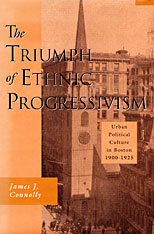 The Triumph of Ethnic Progressivism: Urban Political Culture in Boston, 1900–1925
James J. Connolly
Harvard University Press, 1998 Progressivism, James Connolly shows us, was a language and style of political action available to a wide range of individuals and groups. A diverse array of political and civic figures used it to present themselves as leaders of a communal response to the growing power of illicit interests and to the problems of urban-industrial life. As structural reforms weakened a ward-based party system that helped mute ethnic conflict, this new formula for political mobilization grew more powerful. Its most effective variation in Boston was an “ethnic progressivism” that depicted the city’s public life as a clash between its immigrant majority—“the people”—and a wealthy Brahmin elite—“the interests.” As this portrayal took hold, Bostonians came to view their city as a community permanently beset by ethnic strife.
In showing that the several reform visions that arose in Boston included not only the progressivism of the city’s business leaders but also a series of ethnic progressivisms, Connolly offers a new approach to urban public life in the early twentieth century. He rejects the assumption that ethnic politics was machine politics and employs both institutional and rhetorical analysis to reconstruct the inner workings of neighborhood public life and the social narratives that bound the city together. The result is a deeply textured picture that differs sharply from the traditional view of machine–reform conflict.
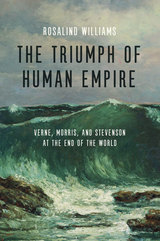 The Triumph of Human Empire: Verne, Morris, and Stevenson at the End of the World
Rosalind Williams
University of Chicago Press, 2013 In the early 1600s, in a haunting tale titled New Atlantis, Sir Francis Bacon imagined the discovery of an uncharted island. This island was home to the descendants of the lost realm of Atlantis, who had organized themselves to seek “the knowledge of Causes, and secret motions of things; and the enlarging of the bounds of Human Empire, to the effecting of all things possible.” Bacon’s make-believe island was not an empire in the usual sense, marked by territorial control; instead, it was the center of a vast general expansion of human knowledge and power. Rosalind Williams uses Bacon’s island as a jumping-off point to explore the overarching historical event of our time: the rise and triumph of human empire, the apotheosis of the modern ambition to increase knowledge and power in order to achieve world domination. Confronting an intensely humanized world was a singular event of consciousness, which Williams explores through the lives and works of three writers of the late nineteenth century: Jules Verne, William Morris, and Robert Louis Stevenson. As the century drew to a close, these writers were unhappy with the direction in which their world seemed to be headed and worried that organized humanity would use knowledge and power for unworthy ends. In response, Williams shows, each engaged in a lifelong quest to make a home in the midst of human empire, to transcend it, and most of all to understand it. They accomplished this first by taking to the water: in life and in art, the transition from land to water offered them release from the condition of human domination. At the same time, each writer transformed his world by exploring the literary boundary between realism and romance. Williams shows how Verne, Morris, and Stevenson experimented with romance and fantasy and how these traditions allowed them to express their growing awareness of the need for a new relationship between humans and Earth. The Triumph of Human Empire shows that for these writers and their readers romance was an exceptionally powerful way of grappling with the political, technical, and environmental situations of modernity. As environmental consciousness rises in our time, along with evidence that our seeming control over nature is pathological and unpredictable, Williams’s history is one that speaks very much to the present.
 The Triumph of Music: The Rise of Composers, Musicians and Their Art
Tim Blanning
Harvard University Press, 2010 A distinguished historian chronicles the rise of music and musicians in the West from lowly balladeers to masters employed by fickle patrons, to the great composers of genius, to today’s rock stars. How, he asks, did music progress from subordinate status to its present position of supremacy among the creative arts? Mozart was literally booted out of the service of the Archbishop of Salzburg “with a kick to my arse,” as he expressed it. Yet, less than a hundred years later, Europe’s most powerful ruler—Emperor William I of Germany—paid homage to Wagner by traveling to Bayreuth to attend the debut of The Ring. Today Bono, who was touted as the next president of the World Bank in 2006, travels the world, advising politicians—and they seem to listen.
The path to fame and independence began when new instruments allowed musicians to showcase their creativity, and music publishing allowed masterworks to be performed widely in concert halls erected to accommodate growing public interest. No longer merely an instrument to celebrate the greater glory of a reigning sovereign or Supreme Being, music was, by the nineteenth century, to be worshipped in its own right. In the twentieth century, new technological, social, and spatial forces combined to make music ever more popular and ubiquitous.
In a concluding chapter, Tim Blanning considers music in conjunction with nationalism, race, and sex. Although not always in step, music, society, and politics, he shows, march in the same direction.
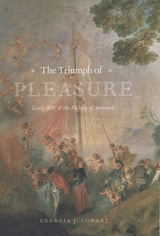 The Triumph of Pleasure: Louis XIV and the Politics of Spectacle
Georgia J. Cowart
University of Chicago Press, 2008 Prominent components of Louis XIV’s propaganda, the arts of spectacle also became sources of a potent resistance to the monarchy in late seventeenth-century France. With a particular focus on the court ballet, comedy-ballet, opera, and opera-ballet, Georgia J. Cowart tells the long-neglected story of how the festive arts deployed an intricate network of subversive satire to undermine the rhetoric of sovereign authority.
With bold revisionist strokes, Cowart traces this strain of artistic dissent through the comedy-ballets of Jean-Baptiste Lully and Molière, the late operatic works of Lully and the operas of his sons, the opera-ballets of André Campra and his contemporaries, and the related imagery of Antoine Watteau’s well-known painting The Pilgrimage to Cythera. She contends that through a variety of means, including the parody of old-fashioned court entertainments, these works reclaimed traditional allegories for new ideological aims, setting the tone for the Enlightenment. Exploring these arts from the perspective of spectacle as it emerged from the court into the Parisian public sphere, Cowart ultimately situates the ballet and related genres as the missing link between an imagery of propaganda and an imagery of political protest.
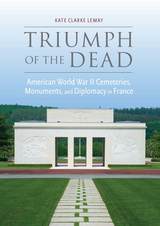 Triumph of the Dead: American World War II Cemeteries, Monuments, and Diplomacy in France
Kate Clarke Lemay
University of Alabama Press, 2018 An investigation into the relationship between history, art, architecture, memory, and diplomacy.
Between 1948 and 1956, the United States government planned an enormous project to build fourteen permanent overseas military cemeteries in Europe. These park-like burial grounds eventually would hold the graves of approximately 80,000 American soldiers and nurses who died during or immediately after World War II. Five of these cemeteries are located in France, more than any other nation: two in Normandy; one in Provence; and two in Lorraine.
In Triumph of the Dead: American World War II Cemeteries, Monuments, and Diplomacy in France, Kate Clarke Lemay explores the relationship between art, architecture, war memory, and Franco-American relations. She addresses the many functions, both original and more recent, that the American war cemeteries have performed, such as: war memorials, diplomatic gestures, Cold War political statements, prompts for debate about Franco-American relations, and the nature of French identity itself. Located on or near former battlefields, the American war cemeteries are at once history lessons, sites of memory, and commemorative monuments. As places of mourning, war cemeteries are considerably different than civic cemeteries in their rituals, designs, and influences on collective memory. As transatlantic sites, the cemeteries both construct and sustain an American memory of World War II for a Francophile and European audience.
The book features ten color photographs, fifty black and white photographs, and four maps. Scholars as well as enthusiasts of World War II history, mid-century art and architecture, and cultural diplomacy will be interested in reading this richly researched book, the first in-depth history of some of the most important sites of American World War II remembrance.
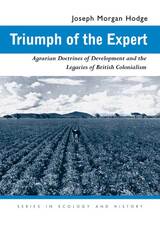 Triumph of the Expert: Agrarian Doctrines of Development and the Legacies of British Colonialism
Joseph Morgan Hodge
Ohio University Press, 2007 The most striking feature of British colonialism in the twentieth century was the confidence it expressed in the use of science and expertise, especially when joined with the new bureaucratic capacities of the state, to develop natural and human resources of the empire. Triumph of the Expert is a history of British colonial doctrine and its contribution to the emergence of rural development and environmental policies in the late colonial and postcolonial period. Joseph Morgan Hodge examines the way that development as a framework of ideas and institutional practices emerged out of the strategic engagement between science and the state at the climax of the British Empire. Hodge looks intently at the structural constraints, bureaucratic fissures, and contradictory imperatives that beset and ultimately overwhelmed the late colonial development mission in sub-Saharan Africa, south and southeast Asia, and the Caribbean. Triumph of the Expert seeks to understand the quandaries that led up to the important transformation in British imperial thought and practice and the intellectual and administrative legacies it left behind.
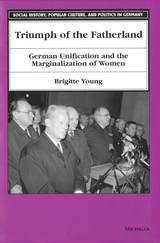 Triumph of the Fatherland: German Unification and the Marginalization of Women
Brigitte Young
University of Michigan Press, 1999 The East German uprising of 1989 was not a male revolution. Indeed, one of the most significant aspects of the fall of East Germany, compared to that of other East European nations, was the presence of women demanding a political role in the newly emerging social order. As one slogan proclaimed, "Without Women There Is No State."
Yet despite the determination of these women--and of West German feminist groups--to help shape the future of the German state, their influence remained, in the end, very limited. In Triumph of the Fatherland, political scientist Brigitte Young draws on in-depth interviews, archival sources, newspapers, and her own observations from 1989 to 1991 to study the goals, strategies, and eventual fate of the German women's movements during this tumultuous period.
Young focuses on the relationship between the state and its citizenry, outlining the mobilization of women in four states: the East German and West German states before unification; the "stateless state" in East Germany after the collapse of the Wall, and the West German state during unification. Ultimately she finds that the political opportunity structures opened during the "stateless state" closed again with unification, resulting in what Young calls "double gender marginalization."
Brigitte Young is Associate Professor, Department of Political Science, Otto-Suhr-Institute, Free University Berlin, Germany.
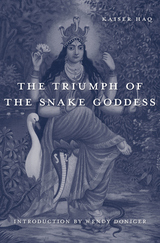 The Triumph of the Snake Goddess
Kaiser Haq
Harvard University Press, 2015 Snakes exist in the myths of most societies, often embodying magical, mysterious forces. Snake cults were especially important in eastern India and Bangladesh, where for centuries worshippers of the indigenous snake goddess Manasa resisted the competing religious influences of Indo-Europeans and Muslims. The result was a corpus of verse texts narrating Manasa’s struggle to win universal adoration.
The Triumph of the Snake Goddess is the first comprehensive retelling of this epic tale in modern English. Scholar and poet Kaiser Haq offers a composite prose translation of Manasa’s story, based on five extant versions. Following the tradition of mangalkavyas—Bengali verse narratives celebrating the deeds of deities in order to win their blessings—the tale opens with a creation myth and a synopsis of Indian mythology, zooming in on Manasa, the miraculous child of the god Shiva. Manasa easily wins the allegiance of everyone except the wealthy merchant Chand, who holds fast in his devotion to Shiva despite seeing his sons massacred. A celestial couple is incarnated on earth to fulfill Manasa’s design: Behula, wife to one of Chand’s slain sons, undertakes a harrowing odyssey to restore him to life with Manasa’s help, ultimately persuading Chand to bow to the snake goddess.
A prologue by Haq explores the Bengali oral, poetic, and manuscript traditions behind this Hindu folk epic—a vibrant part of popular Bengali culture, Hindu and Muslim, to this day—and an introduction by Wendy Doniger examines the history and significance of snake worship in classical Sanskrit texts.
The Triumph of the Therapeutic: Uses of Faith after Freud
Philip Rieff
University of Chicago Press, 1987 "Philip Rieff has become out most learned and provocative critic of psychoanalytic thinking and of the compelling mind and character of its first proponent. Rieff's Freud: The Mind of the Moralist remains the sharpest exegesis yet to be done on the moral and intellectual implications of Freud's work. It was a critical masterpiece, worthy of the man who inspired it; and it is now followed by a work that suffers not at all in comparison. No review can do justice to the richness of The Triumph of the Therapeutic."—Robert Coles, New York Times Book Review
"A triumphantly successful exploration of certain key themes in cultural life. Rieff's incidental remarks are not only illuminating in themselves; they suggest whole new areas of inquiry."—Alasdair MacIntyre, Guardian
The Triumph of the Therapeutic: Uses of Faith after Freud
Philip Rieff
Intercollegiate Studies Institute, 2006 Since its publication in 1966, The Triumph of the Therapeutic has been hailed as a work of genuine brilliance, one of those books whose insights uncannily anticipate cultural developments and whose richness of argumentation reorients entire fields of inquiry. This special fortieth-anniversary edition of Philip Rieff’s masterpiece, the first volume in ISI Books’ new Background series, includes an introduction by Elisabeth Lasch-Quinn and essays on the text by historians Eugene McCarraher and Wilfred McClay and philosopher Stephen Gardner.
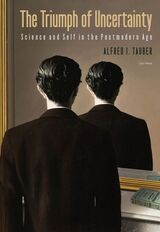 The Triumph of Uncertainty: Science and Self in the Postmodern Age
Alfred I. Tauber
Central European University Press, 2022 Tauber, a leading figure in history and philosophy of science, offers a unique autobiographical overview of how science as a discipline of thought has been characterized by philosophers and historians over the past century. He frames his account through science’s – and his own personal – quest for explanatory certainty. During the 20th century, that goal was displaced by the probabilistic epistemologies required to characterize complex systems, whether in physics, biology, economics, or the social sciences. This “triumph of uncertainty” is the inevitable outcome of irreducible chance and indeterminate causality. And beyond these epistemological limits, the interpretative faculties of the individual scientist (what Michael Polanyi called the “personal” and the “tacit”) invariably affects how data are understood. Whereas positivism had claimed radical objectivity, post-positivists have identified how a web of non-epistemic values and social forces profoundly influence the production of knowledge. Tauber presents a case study of these claims by showing how immunology has incorporated extra-curricular social elements in its theoretical development and how these in turn have influenced interpretive problems swirling around biological identity, individuality, and cognition. The correspondence between contemporary immunology and cultural notions of selfhood are strong and striking. Just as uncertainty haunts science, so too does it hover over current constructions of personal identity, self knowledge, and moral agency. Across the chasm of uncertainty, science and selfhood speak.
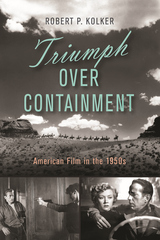 Triumph over Containment: American Film in the 1950s
Robert P. Kolker
Rutgers University Press, 2022 The long 1950s, which extend back to the early postwar period and forward into the early 1960s, were a period of “containment culture” in America, as the media worked to reinforce traditional family values and suspected communist sympathizers were blacklisted from the entertainment industry. Yet some brave filmmakers and actors still challenged the status quo to produce indelible and imaginative work that delivered uncomfortable truths to Cold War audiences.
Triumph Over Containment offers an uncompromising look at some of the era’s greatest films and directors, from household names like Alfred Hitchcock and Stanley Kubrick to lesser-known iconoclasts like Samuel Fuller and Ida Lupino. Taking in everything from The Thing from Another World (1951) to Dr. Strangelove or: How I Learned to Stop Worrying and Love the Bomb (1964), acclaimed film scholar Robert P. Kolker scours a variety of different genres to find pockets of resistance to the repressive and oppressive norms of Cold War culture. He devotes special attention to two quintessential 1950s genres—the melodrama and the science fiction film—that might seem like polar opposites, but each offered pointed responses to containment culture.
This book takes a fresh look at such directors as Nicholas Ray, John Ford, and Orson Welles, while giving readers a new appreciation for the depth and artistry of 1950s Hollywood films.
Triumphant Capitalism: Henry Clay Frick and the Industrial Transformation of America
Kenneth Warren
University of Pittsburgh Press, 2000 A detailed, carefully wrought business biography of Henry Clay Frick, one of the leading entrepreneurs in American heavy industry during the late nineteenth and early twentieth centuries. Kenneth Warren has provided not only insight into the life of Henry Clay Frick, but a major contribution to our understanding of the history of the basic industries, the shaping of society, locality, and region - and thereby of laying the foundations for the value systems and landscapes of present-day America.
 Triumphs of Experience: The Men of the Harvard Grant Study
George E. Vaillant
Harvard University Press, 2012 At a time when many people around the world are living into their tenth decade, the longest longitudinal study of human development ever undertaken offers some welcome news for the new old age: our lives continue to evolve in our later years, and often become more fulfilling than before.
Begun in 1938, the Grant Study of Adult Development charted the physical and emotional health of over 200 men, starting with their undergraduate days. The now-classic Adaptation to Life reported on the men’s lives up to age 55 and helped us understand adult maturation. Now George Vaillant follows the men into their nineties, documenting for the first time what it is like to flourish far beyond conventional retirement.
Reporting on all aspects of male life, including relationships, politics and religion, coping strategies, and alcohol use (its abuse being by far the greatest disruptor of health and happiness for the study’s subjects), Triumphs of Experience shares a number of surprising findings. For example, the people who do well in old age did not necessarily do so well in midlife, and vice versa. While the study confirms that recovery from a lousy childhood is possible, memories of a happy childhood are a lifelong source of strength. Marriages bring much more contentment after age 70, and physical aging after 80 is determined less by heredity than by habits formed prior to age 50. The credit for growing old with grace and vitality, it seems, goes more to ourselves than to our stellar genetic makeup.
 Trixy: A Novel
Elizabeth Stuart Phelps, Edited and with an introduction by Emily E. VanDette
Northwestern University Press, 2019 Trixy is a 1904 novel by the best-selling but largely forgotten American author and women’s rights activist Elizabeth Stuart Phelps. The book decries the then common practice of vivisection, or scientific experiments on live animals. In Trixy, contemporary readers can trace the roots of the early animal rights movement in Phelps’s influential campaign to introduce legislation to regulate or end this practice. Phelps not only presents a narrative polemic against the cruelty of vivisection but argues that training young doctors in it makes them bad physicians. Emily E. VanDette’s introduction demonstrates that Phelps’s protest writing, which included fiction, pamphlets, essays, and speeches, was well ahead of its time.
Though not well known today, Phelps’s 1868 spiritualist novel, The Gates Ajar, which offered a comforting view of the afterlife to readers traumatized by the Civil War, was the century’s second best-selling American novel, surpassed only by Uncle Tom’s Cabin. Recently scholars and readers have begun to reexamine Phelps’s significance. As contemporary authors, including Peter Singer, Jonathan Safran Foer, Donna J. Haraway, Gary L. Francione, and Carol J. Adams, have extended her vision, they have also created new audiences for her work.
Trochemoche: Poems
Luis J. Rodriguez
Northwestern University Press, 1998 TROCHEMOCHE means helter-skelter in Spanish, and this book expresses the turmoil of the barrio and the various themes that drive Luis J. Rodríguez's poetry. Drawing on more than ten years of poems, Rodríguez writes powerfully and passionately about urban youth, family, and the plight of neglected communities, while exploring the rich cultural roots of his Chicano ancestry.
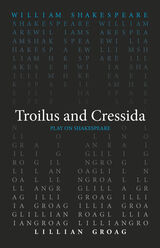 Troilus and Cressida
William Shakespeare
Arizona Center for Medieval and Renaissance Studies, 2022 Lillian Groag presents a new version of Troilus and Cressida that will resonate with contemporary audiences.
One of the most obscure plays in Shakespeare’s canon, Troilus and Cressida may also be the Bard’s darkest comedy. Exploring some of the events of Homer’s Iliad, the play juxtaposes the carnage of the Trojan War with a love story between its two titular characters. Lillian Groag’s translation brings this ancient world to modern audiences. Replacing the archaisms with new and accessible phrasing, Shakespeare’s lines regain their meaning and humor in the twenty-first century. This translation illuminates Troilus and Cressida as one of Shakespeare’s funniest, saddest, and most bitterly modern plays.
This translation of Troilus and Cressida was written as part of the Oregon Shakespeare Festival’s Play On! project, which commissioned new translations of thirty-nine Shakespeare plays. These translations present work from “The Bard” in language accessible to modern audiences while never losing the beauty of Shakespeare’s verse. Enlisting the talents of a diverse group of contemporary playwrights, screenwriters, and dramaturges from diverse backgrounds, this project reenvisions Shakespeare for the twenty-first century. These volumes make these works available for the first time in print—a new First Folio for a new era.
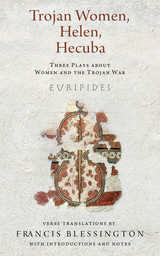 Trojan Women, Helen, Hecuba: Three Plays about Women and the Trojan War
Euripides, Verse translations by Francis Blessington, with introductions and notes
University of Wisconsin Press, 2015 These three ancient tragedies—Trojan Women, Helen, and Hecuba—dramatize the tragic fates of women in the wake of war. Euripides (480–406 BC) innovatively brought to Greek tragedy the inner lives of his characters. In these plays he delivers powerful portrayals of the suffering of both Greek and Trojan women as they become pawns and prizes of warring men.
Francis Blessington combines his work as a poet, translator, and teacher of literature and Greek with his theatrical experience to create fresh and faithful verse translations suitable for the stage, the classroom, or the general reader. The three plays are augmented by introductions, notes, and an appendix on elements of Greek tragedy. Blessington glosses historical and mythological terms, identifies Greek themes in the texts, offers literary interpretations, and suggests topics for discussion.
Trojan Women. Iphigenia among the Taurians. Ion
Euripides
Harvard University Press, 1999 Three plays by ancient Greece’s third great tragedian.
One of antiquity's greatest poets, Euripides has been prized in every age for the pathos, terror, and intellectual probing of his dramatic creations. The new Loeb Classical Library edition of his plays is in six volumes.
Three plays are in Volume IV. Trojan Women concerns the tragic unpredictability of life; Iphigenia among the Taurians and Ion exhibit tragic themes and situations but end happily with joyful reunions.
 Trollope and Comic Pleasure
Christopher Herbert
University of Chicago Press, 1987 Challenging the sentimentalized and moralized view of comedy that prevails in modern criticism, Christopher Herbert outlines a theory of comedy as a mode whose dominant motive and function is the glorification of pleasure. Using this model, he presents a detailed study of Anthony Trollope that sharply contradicts the persistent image of this novelist as a conventional writer and complacent spokesman for middle-class pieties.
The comic mode as Herbert describes it was antagonistic to the repressive moral ethos widely prevalent in Victorian England. Herbert shows how Trollope, under a mask of self-proclaimed conventionality, employed this mode in a steady, sometimes scandalous critique of the Victorian subversion of pleasure. Drawing on Trollope's unpublished notes on seventeenth-century drama and bringing to light many instances in the novels of direct borrowings from old plays, Herbert demonstrates the inventiveness and subtlety of Trollope's deployment of comic materials. Thematically organized around such subjects as Trollope's investigations of sex, his formal structures, and his principles of "realism," Herbert's study includes detailed readings of two of the nineteenth century's most ambitious exercises in comedy: The Way We Live Now and Trollope's neglected masterpiece, Ayala's Angel.
Of primary importance for readers of Trollope and students of comedy, Herbert's study will also prove valuable to those interested more generally in Victorian and modern fiction and the cultural history of the Victorian age.
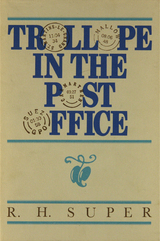 Trollope in the Post Office
R. H. Super
University of Michigan Press, 1981 The works of Anthony Trollope are currently enjoying a popularity not seen since the success they met during his lifetime, a success that obscured until long after his death the true nature and extent of his literary merit. With this new found popularity has come a flurry of publishing about Trollope, primarily criticisms of the novels. Professor Super provides for the first time a scholarly examination of Trollope’s life — not his life as a writer who wrote 2,500 words every morning and published about four dozen novels — but his other life, his professional life with the British Post Office. Trollope was a civil servant before he was a novelist. For thirty-four years, from age nineteen to age fifty-two, he served the Post Office in assignments that gave him a detailed famillarity with Ireland, England, and Wales, and a personal acquaintance with the postal patrons. As a roving ambassador for the Post Office, he went to the West Indies, the Near East, and the United States. The book draws for the first time on the extensive records of Trollope’s career preserved in the Post Office archives in London. Interweaving these materials with other sources ofinformation, Professor Super presents, with meticulous scholarship and lucid style, the interrelation between Trollope’s Post Office work and his books.
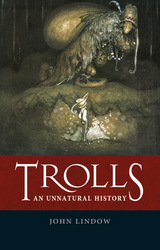 Trolls: An Unnatural History
John Lindow
Reaktion Books, 2014 Trolls lurk under bridges waiting to eat children, threaten hobbits in Middle-Earth, and invade the dungeons of Hogwarts. Often they are depicted as stupid, slow, and ugly creatures, but they also appear as comforting characters in some children’s stories or as plastic dolls with bright, fuzzy hair. Today, the name of this fantastic being from Scandinavia has found a wider reach: it is the word for the homeless in California and slang for the antagonizing and sometimes cruel people on the Internet. But how did trolls go from folktales to the World Wide Web?
To explain why trolls still hold our interest, John Lindow goes back to their first appearances in Scandinavian folklore, where they were beings in nature living beside a preindustrial society of small-scale farming and fishing. He explores reports of actual encounters with trolls—meetings others found plausible in spite of their better judgment—and follows trolls’ natural transition from folktales to other domains in popular culture. Trolls, Lindow argues, would not continue to appeal to our imaginations today if they had not made the jump to illustrations in Nordic books and Scandinavian literature and drama. From the Moomins to Brothers Grimm and Three Billy Goats Gruff to cartoons, fantasy novels, and social media, Lindow considers the panoply of trolls that surround us and their sometimes troubling connotations in the contemporary world.
Taking readers into Norwegian music and film and even Yahoo Finance chat rooms, Trolls is a fun and fascinating book about these strange creatures.
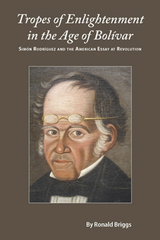 Tropes of Enlightenment in the Age of Bolivar: Simon Rodriguez and the American Essay at Revolution
Ronald Briggs
Vanderbilt University Press, 2010 In Tropes of Enlightenment in the Age of Bolivar, Ronald Briggs shines a much-needed light on the writings and life of Simon Rodriguez, early tutor to the hero of Latin American independence Simon Bolivar and an accomplished essayist in his own right. Bolivar and Rodriguez's lives intersected often after those early years. When Bolivar swore his life to Spanish American independence on a hill outside Rome in 1805, Rodriguez was there to witness the historic moment. And when Bolivar needed to shape the new government of Bolivia, he enlisted Rodriguez to serve roles in developing both its educational system and its infrastructure.
The book, released during the bicentennial of the early wars for Latin American independence, boldly places Rodriguez in the pantheon of important writers who influenced philosophical thought during the upheavals of the eighteenth and nineteenth centuries, including Ralph Waldo Emerson, Noah Webster, and Tom Paine. Beyond merely providing the first in-depth analysis of Rodriguez's writings and life work, Briggs also reveals an innovator of style as Rodriguez shaped the utility and vitality of the essay as an emerging form of argument.
Tropes of Enlightenment in the Age of Bolivar is an essential study of a unique and playful writer who is finally revealed as a foundational figure in Spanish American independence and an influential thinker in the larger field of hemispheric studies.
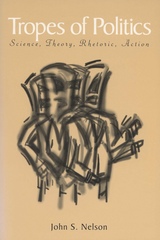 Tropes of Politics: Science, Theory, Rhetoric, Action
John S. Nelson
University of Wisconsin Press, 1998 Talk is of central importance to politics of almost every kind—it’s no accident that when the ancient Greeks first attempted to examine politics systematically, they developed the study of rhetoric. In Tropes of Politics, John Nelson applies rhetorical analysis first to political theory, and then to politics in practice. He offers a full and deep critical examination of political science and political theory as fields of study, and then undertakes a series of creative examinations of political rhetoric, including a deconstruction of deliberation and debate by the U.S. Senate prior to the Gulf War.
Using the neglected arts of argument refined by the rhetoric of inquiry, Nelson traces how everyday words like consent and debate construct politics in much the same way that poets such as Mamet and Shakespeare construct plays, and he shows how we are remaking our politics even as we speak. Tropes of Politics explores how politicians take stands and political scientists probe representation, how experts become informed even as citizens become authorities, how students actually reinvent government while professors merely model politics, how senators wage war yet keep comity among themselves.
The action, Nelson shows, is in the tropes: these figures of speech and images of deed can persuade us to turn from ideologies like liberalism toward spectacles about democracy or movements into environmentalism and feminism. His argument is that inventive attention to tropes can mean better participation in politics. And the argument is in the tropes—evidence itself as sights or citations, governments as machines or men, politics as hardball or softball, deliberations as freedoms or constraints, borders as fringes or friends.
Tropes of Transport: Hegel and Emotion
Katrin Pahl
Northwestern University Press, 2012 Intervening in the multidisciplinary debate on emotion, Tropes of Transport offers a fresh analysis of Hegel’s work that becomes an important resource for Pahl’s cutting-edge theory of emotionality. If it is usually assumed that the sincerity of emotions and the force of affects depend on their immediacy, Pahl explores to what extent mediation—and therefore a certain degree of manipulation but also of sympathy—is constitutive of emotionality. Hegel serves as a particularly helpful interlocutor not only because he offers a sophisticated analysis of mediation, but also because, rather than locating emotion in the heart, he introduces impersonal tropes of transport, such as trembling, release, and shattering.
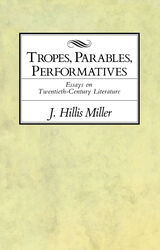 Tropes, Parables, and Performatives
J. Hillis Miller
Duke University Press, 1991 Tropes, Parables, Performatives collects J. Hillis Miller’s essays on seven major twentieth-century authors: Lawrence, Kafka, Stevens, Williams, Woolf, Hardy, and Conrad. For all their evident differences, these essays from early to late explore a single intuition about literature, which may be framed by three words: “trope,” “parable,” and “performative.”
Throughout these essays Miller is fascinated with the tropological dimension of literary language, with the way figures of speech turn aside the telling of a story or the presentation of a literary theme. The exploration of this turning leads to the recognition that all works of literature are parabolic, “thrown beside” their real meaning. They tell one story but call forth something else.
Miller further agrees that all parables are fundamentally performative. They do not merely name something or give knowledge, but rather use words to make something happen, to get the reader from here to there. Each essay here attempts to formulate what, in a given case, the reader perfomatively enters by way of parabolic trope.
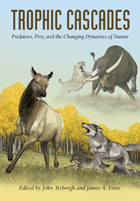 Trophic Cascades: Predators, Prey, and the Changing Dynamics of Nature
Edited by John Terborgh and James A. Estes
Island Press, 2010 Trophic cascades—the top-down regulation of ecosystems by predators—are an essential aspect of ecosystem function and well-being. Trophic cascades are often drastically disrupted by human interventions—for example, when wolves and cougars are removed, allowing deer and beaver to become destructive—yet have only recently begun to be considered in the development of conservation and management strategies.
Trophic Cascades is the first comprehensive presentation of the science on this subject. It brings together some of the world’s leading scientists and researchers to explain the importance of large animals in regulating ecosystems, and to relate that scientific knowledge to practical conservation.
Chapters examine trophic cascades across the world’s major biomes, including intertidal habitats, coastal oceans, lakes, nearshore ecosystems, open oceans, tropical forests, boreal and temperate ecosystems, low arctic scrubland, savannas, and islands. Additional chapters consider aboveground/belowground linkages, predation and ecosystem processes, consumer control by megafauna and fire, and alternative states in ecosystems. An introductory chapter offers a concise overview of trophic cascades, while concluding chapters consider theoretical perspectives and comparative issues.
Trophic Cascades provides a scientific basis and justification for the idea that large predators and top-down forcing must be considered in conservation strategies, alongside factors such as habitat preservation and invasive species. It is a groundbreaking work for scientists and managers involved with biodiversity conservation and protection.
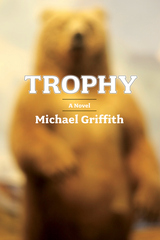 Trophy: A Novel
Michael Griffith
Northwestern University Press, 2011 Vada Prickett is a 29-year-old Hose Associate at a car wash in South Carolina, and Darla, the woman he loves, is about to marry his friend, rival, and life-long neighbor, Wyatt Yancey. Vada has “spent his life waiting for the thing to get a proper start.” But it will never get that start, for Vada, as this wildly original novel opens, is being crushed to death by Wyatt’s latest animal trophy, a stuffed grizzly bear Vada has been helping him to smuggle—against Darla’s wishes—into Wyatt’s house. It turns out that the cliché is true—at the moment of death, your life does flash before your eyes. Trophy, the account of a man’s final, fleeting instant on earth, joins Vada as he attempts to make that flash last as long as possible. As he lies dying, too soon and too absurdly, Vada tries to unravel the mysteries of his life. He first bargains with God, then rages against the dying of the light. Exhausted, Vada proceeds to prolong, in every way available to a man in his dire circumstances, the time he has remaining. Just beneath Griffith’s dark humor and witty take on our present-day culture lies a meditation on memory and identity and the power of language over both.
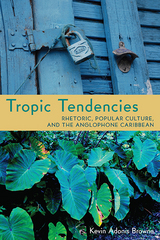 Tropic Tendencies: Rhetoric, Popular Culture, and the Anglophone Caribbean
Kevin Adonis Browne
University of Pittsburgh Press, 2013 A legacy of slavery, abolition, colonialism, and class struggle has profoundly impacted the people and culture of the Caribbean. In Tropic Tendencies, Kevin Adonis Browne examines the development of an Anglophone Caribbean rhetorical tradition in response to the struggle to make meaning, maintain identity, negotiate across differences, and thrive in light of historical constraints and the need to participate in contemporary global culture.
Browne bases his study on the concept of the “Caribbean carnivalesque” as the formative ethos driving cultural and rhetorical production in the region and beyond it. He finds that carnivalesque discourse operates as a “continuum of discursive substantiation” that increases the probability of achieving desired outcomes for both the rhetor and the audience. Browne also views the symbolic and material interplay of the masque and its widespread use to amplify efforts of resistance, assertion, and liberation.
Browne analyzes rhetorical modes and strategies in a variety of forms, including music, dance, folklore, performance, sermons, fiction, poetry, photography, and digital media. He introduces chantwells, calypsonians, old talkers, jamettes, stickfighters, badjohns, and others as exemplary purveyors of Caribbean rhetoric and deconstructs their rhetorical displays. From novels by Earl Lovelace, he also extracts thematic references to kalinda, limbo, and dragon dances that demonstrate the author’s claim of an active vernacular sensibility. He then investigates the re-creation and reinvention of the carnivalesque in cyber culture, demonstrating the ways participants both flaunt and defy normative ideas of “Caribbeanness” in online and macro environments.
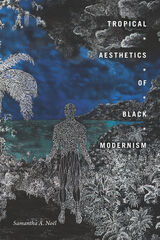 Tropical Aesthetics of Black Modernism
Samantha A. Noël
Duke University Press, 2021 In Tropical Aesthetics of Black Modernism, Samantha A. Noël investigates how Black Caribbean and American artists of the early twentieth century responded to and challenged colonial and other white-dominant regimes through tropicalist representation. With depictions of tropical scenery and landscapes situated throughout the African diaspora, performances staged in tropical settings, and bodily expressions of tropicality during Carnival, artists such as Aaron Douglas, Wifredo Lam, Josephine Baker, and Maya Angelou developed what Noël calls “tropical aesthetics”—using art to name and reclaim spaces of Black sovereignty. As a unifying element in the Caribbean modern art movement and the Harlem Renaissance, tropical aesthetics became a way for visual artists and performers to express their sense of belonging to and rootedness in a place. Tropical aesthetics, Noël contends, became central to these artists’ identities and creative processes while enabling them to craft alternative Black diasporic histories. In outlining the centrality of tropical aesthetics in the artistic and cultural practices of Black modernist art, Noël recasts understandings of African diasporic art.
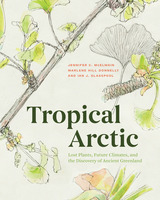 Tropical Arctic: Lost Plants, Future Climates, and the Discovery of Ancient Greenland
Jennifer McElwain, Marlene Hill Donnelly, and Ian Glasspool
University of Chicago Press, 2021 An illustrated visit to the tropical arctic of 205 million years ago when Greenland was green.
While today’s Greenland is largely covered in ice, in the time of the dinosaurs the area was a lushly forested, tropical zone. Tropical Arctic tracks a ten-million-year window of Earth’s history when global temperatures soared and the vegetation of the world responded.
A project over eighteen years in the making, Tropical Arctic is the result of a unique collaboration between two paleobotanists, Jennifer C. McElwain and Ian J. Glasspool, and award-winning scientific illustrator Marlene Hill Donnelly. They began with a simple question: “What was the color of a fossilized leaf?” Tropical Arctic answers that question and more, allowing readers to experience Triassic Greenland through three reconstructed landscapes and an expertly researched catalog of extinct plants. A stunning compilation of paint and pencil art, photos, maps, and engineered fossil models, Tropical Arctic blends art and science to bring a lost world to life. Readers will also enjoy a front-row seat to the scientific adventures of life in the field, with engaging anecdotes about analyzing fossils and learning to ward off polar bear attacks.
Tropical Arctic explains our planet’s story of environmental upheaval, mass extinction, and resilience. By looking at Earth’s past, we see a glimpse of the future of our warming planet—and learn an important lesson for our time of climate change.
 The Tropical Deciduous Forest of Alamos: Biodiversity of a Threatened Ecosystem in Mexico
Edited by Robert H. Robichaux and David A. Yetman
University of Arizona Press, 2000 Only a day's drive south of the U.S.-Mexico border, a tropical deciduous forest opens up a world of exotic trees and birds that most people associate with tropical forests of more southerly latitudes. Like many such forests around the world, this diverse ecosystem is highly threatened, especially by large-scale agricultural interests that are razing it in order to plant grass for cattle. This book introduces the tropical deciduous forest of the Alamos region of Sonora, describing its biodiversity and the current threats to its existence. The book's contributors present the most up-to-date scientific knowledge of this threatened ecosystem. They review the natural history and ecology of its flora and fauna and explore how native peoples use the forest's many resources. Included in the book's coverage is a comprehensive plant list for the Río Cuchujaqui area that well illustrates the diversity of the forest. Other contributions examine tree species used by Mayo Indians and the numerous varieties of domesticated plants that have been developed over the centuries by the Mayos and other indigenous peoples. Also examined are the diversity and distribution of reptiles, amphibians, mammals, and birds in the region. The Tropical Deciduous Forest of Alamos provides critical information about a globally important biome. It complements other studies of similar forests and allows a better understanding of a diverse but vanishing ecosystem.
Tropical Deforestation and Land Use: Special Issue of Land Economics 77:2 (May 2001)
Edward B. Barbier
University of Wisconsin Press, 2001 Country case studies investigate key factors that influence the economics of tropical deforestation and land use. Articles illustrate how innovative economic models can be used effectively to investigate a range of important influences on tropical land use changes in a variety of representative developing countries. The countries covered are: Brazil, India, Malaysia, Panama, the Philippines, Thailand, and Uganda.
Tropical Depressions
Elton Glaser
University of Iowa Press, 1988
Robert Frost's ovenbird question was, "What to make of a diminished thing?" This new volume of poetry by Elton Glaser answers that question on a personal level, by broadening the sense of loss and exile until it envelops our common concerns of the twentieth century: the loss of love, faith, civility—all the old verities diminished and distorted.
While the first two sections of the book raise exuberant laments for the domestic, artistic, amatory, and religious life, the third section of poems moves beyond complaint to celebration. The complainer, purged of his grievances, leaves behind a northern exile and moves somewhere closer to home. In these final poems, Glaser returns to the South and his native city of New Orleans. Without nostalgia for the romance of moonlit magnolias, without denial of the region's dark past, he voices a more measured, more settled view of the world, one of balance and hard-won acceptance.
Tropical Forest Diversity and Dynamism: Findings from a Large-Scale Plot Network
Edited by Elizabeth Losos and Egbert Giles Leigh Jr.
University of Chicago Press, 2004 Long-term Forest Dynamics Plots (FDPs) allow ecologists to explain patterns in diversity and dynamics in tropical forests around the world. In this collection, Elizabeth Losos and Egbert Giles Leigh Jr. assemble extensive standardized data—collected here in one location for the first time—from sixteen tropical FDPs and synthesize the findings, putting these unique and valuable plots in a global context by highlighting the utility of the collected data for conservation and forest management.
Written by experts in the field of tropical ecology, Tropical Forest Diversity and Dynamism will appeal to students and professionals with an interest in community ecology and patterns of diversity.
 Tropical Forest Remnants: Ecology, Management, and Conservation of Fragmented Communities
Edited by William F. Laurance and Richard O. Bierregaard Jr.
University of Chicago Press, 1997 We live in an increasingly fragmented world, with islands of natural habitat cast adrift in a sea of cleared, burned, logged, polluted, and otherwise altered lands. Nowhere are fragmentation and its devastating effects more evident than in the tropical forests. By the year 2000, more than half of these forests will have been cut, causing increased soil erosion, watershed destabilization, climate degradation, and extinction of as many as 600,000 species.
Tropical Forest Remnants provides the best information available to help us
understand, manage, and conserve the remaining fragments. Covering geographic areas from Southeast Asia and Australia to Madagascar and the New World, this volume summarizes what is known about the ecology, management, restoration, socioeconomics, and conservation of fragmented forests. Thirty-three papers present results of recent research as
well as updates from decades-long projects in progress. Two final chapters synthesize the state of research on tropical forest fragmentation and identify key priorities for future work.
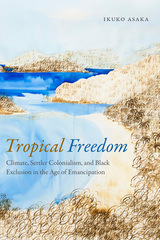 Tropical Freedom: Climate, Settler Colonialism, and Black Exclusion in the Age of Emancipation
Ikuko Asaka
Duke University Press, 2017 In Tropical Freedom Ikuko Asaka engages in a hemispheric examination of the intersection of emancipation and settler colonialism in North America. Asaka shows how from the late eighteenth century through Reconstruction, emancipation efforts in the United States and present-day Canada were accompanied by attempts to relocate freed blacks to tropical regions, as black bodies were deemed to be more physiologically compatible with tropical climates. This logic conceived of freedom as a racially segregated condition based upon geography and climate. Regardless of whether freed people became tenant farmers in Sierra Leone or plantation laborers throughout the Caribbean, their relocation would provide whites with a monopoly over the benefits of settling indigenous land in temperate zones throughout North America. At the same time, black activists and intellectuals contested these geographic-based controls by developing alternative discourses on race and the environment. By tracing these negotiations of the transnational racialization of freedom, Asaka demonstrates the importance of considering settler colonialism and black freedom together while complicating the prevailing frames through which the intertwined histories of British and U.S. emancipation and colonialism have been understood.
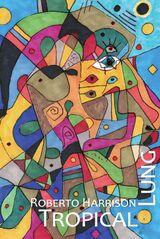 Tropical Lung: exi(s)t(s)
Roberto Harrison
Omnidawn, 2021 Tropical Lung is a collection of writings and drawings from and to a new homeland, a vision of Panamá and the Tecumseh Republic where technology is necessary for understanding the ancient, then is erased and transcended by an ever-present electronic circle. Roberto Harrison combines poetry and visual art in this surrealist vision of a world both historical and reborn, where the futuristic links to the ancient. Harrison looks to symbolic beginnings, spaces of light and mystery that counter disassociation with explorations of the foundational structures of personhood.
Tropical Lung shows how apocalypses can give us the keys to new futures and how aloneness and silence can lead us to live multidimensionally, beyond the boundaries of time and space. The screen makes itself known and offers a means of kinship, but it is also removed by song and born in the red of encounter and the dark of seven pupils. These wild visions coalesce into a fantastic vision of a future both technological and communal.
 Tropical Multiculturalism: A Comparative History of Race in Brazilian Cinema and Culture
Robert Stam
Duke University Press, 1997 Tropical Multiculturalism provides a major study of race in Brazilian culture through the most complete critical analysis of Brazilian cinema in any language. Focusing on representations of multicultural themes involving Euro- and Afro-Brazilians, other immigrants, and indigenous peoples in the rich tradition of Brazilian fictional feature film, Robert Stam puts Brazilian culture at the center of a wide-ranging analysis of race, representation, history, and film. Drawing parallels between the histories of colonialism, slavery, and immigration in Brazil and the United States, he also contends that questions of ethnic and racial representations are best viewed within the larger context of a comparative analysis of racially plural societies.
Stam examines the broad historical and cultural links that connect Brazil and the United States before considering multicultural imagery in Brazilian film as it has changed from the silent era to the present. His analysis moves through the comic chanchadas of the 1930s and 1940s, to the Hollywood-style films from Sao Paulo in the 1950s, and the diverse phases of Cinema Novo beginning in the 1960s. He explores a wealth of subjects, including the submerged "blackness" of Carmen Miranda, the anti-racist agenda of Orson Welles’s never-released Brazilian film It’s All True, the international background behind Black Orpheus, the career of Grande Otelo (Brazil’s greatest black film star), the allegorical "cannibalistic" films like How Tasty Was My Frenchman, and "indigenous media"—the attempt by Brazilian "indians" to use camcorders and VCRs for their own cultural and political purposes. Tropical Multiculturalism is simultaneously a history of Brazilian cinema from the standpoint of race, a history of Brazil itself through its cinematic representations, a comparative study of racial formations in Brazil and the United States, and a theorized analysis of racialized representations.
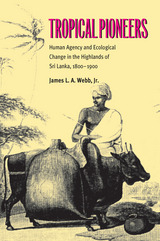 Tropical Pioneers: Human Agency and Ecological Change in the Highlands of Sri Lanka, 1800–1900
James L. A. Webb Jr.
Ohio University Press, 2002 In 1800, the highlands of Sri Lanka had some of the most biologically diverse primary tropical rainforest ecosystems in the world. By 1900, only a few craggy corners and mountain caps had been spared the fire stick. Highland villagers, through the extension of slash-and-burn agriculture, and British managers, through the creation of plantations—first of coffee, then cinchona, and finally tea—had removed virtually the entire primary forest cover.
Tropical Pioneers documents the conversion of a tropical rainforest biome and the collision between what previously had been more discrete ecological zones within South Asia. The ecological impacts were transformational. Author James L. A. Webb, Jr., demonstrates that profound ecological disruption occurred in the central highlands of Sri Lanka during the nineteenth century and suggests that the theme of ecological crisis brought about by the integration of tropical ecological zones during precolonial and colonial periods alike is an important one for historians to investigate elsewhere.
Tropical Pioneers is based on extensive research in the National Archives of Sri Lanka, the National Agricultural Library at Gannaruwa, the Library of the Royal Asiatic Society-Ceylon Branch, the Royal Botanic Gardens at Kew, the Public Record Office of the United Kingdom, and the British Library.
Tropical Rainforests: Past, Present, and Future
Edited by Eldredge Bermingham, Christopher Dick, and Craig Moritz
University of Chicago Press, 2005 Synthesizing theoretical and empirical analyses of the processes that help shape these unique ecosystems, Tropical Rainforests looks at the effects of evolutionary histories, past climate change, and ecological dynamics on the origin and maintenance of tropical rainforest communities. Featuring recent advances in paleoecology, climatology, geology, molecular systematics, biogeography, and community ecology, the volume also offers insights from those fields into how rainforests will endure the impact of anthropogenic change. With more than sixty contributors, Tropical Rainforests will be of great interest to students and professionals in tropical ecology and conservation.
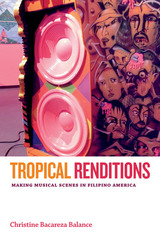 Tropical Renditions: Making Musical Scenes in Filipino America
Christine Bacareza Balance
Duke University Press, 2016 In Tropical Renditions Christine Bacareza Balance examines how the performance and reception of post-World War II Filipino and Filipino American popular music provide crucial tools for composing Filipino identities, publics, and politics. To understand this dynamic, Balance advocates for a "disobedient listening" that reveals how Filipino musicians challenge dominant racialized U.S. imperialist tropes of Filipinos as primitive, childlike, derivative, and mimetic. Balance disobediently listens to how the Bay Area turntablist DJ group the Invisibl Skratch Piklz bear the burden of racialized performers in the United States and defy conventions on musical ownership; to karaoke as affective labor, aesthetic expression, and pedagogical instrument; to how writer and performer Jessica Hagedorn's collaborative and improvisational authorial voice signals the importance of migration and place; and how Pinoy indie rock scenes challenge the relationship between race and musical genre by tracing the alternative routes that popular music takes. In each instance Filipino musicians, writers, visual artists, and filmmakers work within and against the legacies of the U.S./Philippine imperial encounter, and in so doing, move beyond preoccupations with authenticity and offer new ways to reimagine tropical places.
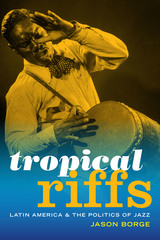 Tropical Riffs: Latin America and the Politics of Jazz
Jason Borge
Duke University Press, 2018 In Tropical Riffs Jason Borge traces how jazz helped forge modern identities and national imaginaries in Latin America during the mid-twentieth century. Across Latin America jazz functioned as a conduit through which debates about race, sexuality, nation, technology, and modernity raged in newspapers, magazines, literature, and film. For Latin American audiences, critics, and intellectuals—who often understood jazz to stem from social conditions similar to their own—the profound penetration into the fabric of everyday life of musicians like Duke Ellington, Dizzy Gillespie, and Charlie Parker represented the promises of modernity while simultaneously posing a threat to local and national identities. Brazilian antijazz rhetoric branded jazz as a problematic challenge to samba and emblematic of Americanization. In Argentina jazz catalyzed discussions about musical authenticity, race, and national culture, especially in relation to tango. And in Cuba, the widespread popularity of Chano Pozo and Dámaso Pérez Prado popularity challenged the United States' monopoly on jazz. Outlining these hemispheric flows of ideas, bodies, and music, Borge elucidates how "America's art form" was, and remains, a transnational project and a collective idea.
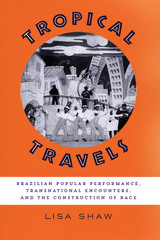 Tropical Travels: Brazilian Popular Performance, Transnational Encounters, and the Construction of Race
By Lisa Shaw
University of Texas Press, 2018 Brazilian popular culture, including music, dance, theater, and film, played a key role in transnational performance circuits—inter-American and transatlantic—from the latter nineteenth century to the middle of the twentieth century. Brazilian performers both drew inspiration from and provided models for cultural production in France, Portugal, Argentina, the United States, and elsewhere. These transnational exchanges also helped construct new ideas about, and representations of, “racial” identity in Brazil. Tropical Travels fruitfully examines how perceptions of “race” were negotiated within popular performance in Rio de Janeiro and how these issues engaged with wider transnational trends during the period. Lisa Shaw analyzes how local cultural forms were shaped by contact with imported performance traditions and transnational vogues in Brazil, as well as by the movement of Brazilian performers overseas. She focuses specifically on samba and the maxixe in Paris between 1910 and 1922, teatro de revista (the Brazilian equivalent of vaudeville) in Rio in the long 1920s, and a popular Brazilian female archetype, the baiana, who moved to and fro across national borders and oceans. Shaw demonstrates that these transnational encounters generated redefinitions of Brazilian identity through the performance of “race” and ethnicity in popular culture. Shifting the traditional focus of Atlantic studies from the northern to the southern hemisphere, Tropical Travels also contributes to a fuller understanding of inter-hemispheric cultural influences within the Americas.
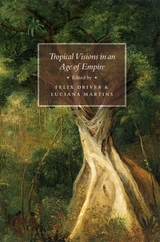 Tropical Visions in an Age of Empire
Edited by Felix Driver and Luciana Martins
University of Chicago Press, 2005 The contrast between the temperate and the tropical is one of the most enduring themes in the history of the Western geographical imagination. Caught between the demands of experience and representation, documentation and fantasy, travelers in the tropics have often treated tropical nature as a foil to the temperate, to all that is civilized, modest, and enlightened. Tropical Visions in an Age of Empire explores images of the tropical world—maps, paintings, botanical drawings, photographs, diagrams, and texts—produced by European and American travelers over the past three centuries.
Bringing together a group of distinguished contributors from disciplines across the arts and humanities, this volume contains eleven beautifully illustrated essays—arranged in three sections devoted to voyages, mappings, and sites—that consider the ways that tropical places were encountered, experienced, and represented in visual form. Covering a wide range of tropical sites in the Pacific, South Asia, West Africa, the Caribbean, and Latin America, the book will appeal to a broad readership: scholars of postcolonial studies, art history, literature, imperial history, history of science, geography, and anthropology.
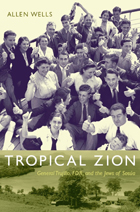 Tropical Zion: General Trujillo, FDR, and the Jews of Sosúa
Allen Wells
Duke University Press, 2009 Seven hundred and fifty Jewish refugees fled Nazi Germany and founded the agricultural settlement of Sosúa in the Dominican Republic, then ruled by one of Latin America’s most repressive dictators, General Rafael Trujillo. In Tropical Zion, Allen Wells, a distinguished historian and the son of a Sosúa settler, tells the compelling story of General Trujillo, Franklin Delano Roosevelt, and those fortunate pioneers who founded a successful employee-owned dairy cooperative on the north shore of the island. Why did a dictator admit these desperate refugees when so few nations would accept those fleeing fascism? Eager to mollify international critics after his army had massacred 15,000 unarmed Haitians, Trujillo sent representatives to Évian, France, in July, 1938 for a conference on refugees from Nazism. Proposed by FDR to deflect criticism from his administration’s restrictive immigration policies, the Évian Conference proved an abject failure. The Dominican Republic was the only nation that agreed to open its doors. Obsessed with stemming the tide of Haitian migration across his nation’s border, the opportunistic Trujillo sought to “whiten” the Dominican populace, welcoming Jewish refugees who were themselves subject to racist scorn in Europe. The Roosevelt administration sanctioned the Sosúa colony. Since the United States did not accept Jewish refugees in significant numbers, it encouraged Latin America to do so. That prodding, paired with FDR’s overriding preoccupation with fighting fascism, strengthened U.S. relations with Latin American dictatorships for decades to come. Meanwhile, as Jewish organizations worked to get Jews out of Europe, discussions about the fate of worldwide Jewry exposed fault lines between Zionists and Non-Zionists. Throughout his discussion of these broad dynamics, Wells weaves vivid narratives about the founding of Sosúa, the original settlers and their families, and the life of the unconventional beach-front colony.
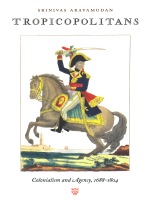 Tropicopolitans: Colonialism and Agency, 1688–1804
Srinivas Aravamudan
Duke University Press, 1999 In Tropicopolitans Srinivas Aravamudan reconstructs the colonial imagination of the eighteenth century. By exploring representations of peoples and cultures subjected to colonial discourse, he makes a case for the agency—or the capacity to resist domination—of those oppressed. Aravamudan’s analysis of texts that accompanied European commercial and imperial expansion from the Glorious Revolution through the French Revolution reveals the development of anticolonial consciousness prior to the nineteenth century. “Tropicalization” is the central metaphor of this analysis, a term that incorporates both the construction of various dynamic tropes by which the colonized are viewed and the site of the study, primarily the tropics. Tropicopolitans, then, are those people who bear and resist the representations of colonialist discourse. In readings that expose new relationships between literary representation and colonialism in the eighteenth century, Aravamudan considers such texts as Behn’s Oroonoko, Defoe’s Robinson Crusoe and Captain Singleton, Addison’s Cato, and Swift’s Gulliver’s Travels and The Drapier’s Letters. He extends his argument to include analyses of Johnson’s Rasselas, Beckford’s Vathek, Montagu’s travel letters, Equiano’s autobiography, Burke’s political and aesthetic writings, and Abbé de Raynal’s Histoire des deux Indes. Offering a radical approach to literary history, this study provides new mechanisms for understanding the development of anticolonial agency. Introducing eighteenth-century studies to a postcolonial hermeneutics, Tropicopolitans will interest scholars engaged in postcolonial studies, eighteenth-century literature, and literary theory.
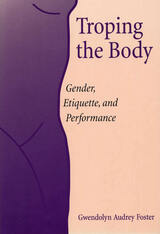 Troping the Body: Gender, Etiquette, and Performance
Gwendolyn Audrey Foster
Southern Illinois University Press, 2000 Troping the Body: Gender, Etiquette, and Performance is an interdisciplinary study of etiquette texts, conduct literature, and advice books and films. GwendolynAudrey Foster analyzes the work of such women authors as Emily Post, Christine de Pizan, Hannah Webster Foster, Emily Brontë, Frances E. W. Harper, and Martha Stewart as well as such women filmmakers as Lois Weber and Kasi Lemmons. “Specifically,” Foster notes, “I was interested in the possibility of locating power and agency in the voices of popular etiquette writers.” Her investigation led her to analyze etiquette and conduct literature from the Middle Ages to the present. Within this wide scope, she redefines the boundaries of conduct literature through a theoretical examination of the gendered body as it is positioned in conduct books, etiquette texts, poetry, fiction, and film. Drawing on Bakhtin, Gates, Foucault, and the new school of performative feminism to develop an interdisciplinary approach to conduct literature—and literature as conduct—Foster brings a unique perspective to the analysis of ways in which the body has been gendered, raced, and constructed in terms of class and sexuality. Even though women writers have been actively writing conduct and etiquette texts since the medieval period, few critical examinations of such literature exist in the fields of cultural studies and literary criticism. Thus, Foster’s study fills a gap and does so uniquely in the existing literature. In examining these voices of authority over the body, Foster identifies the dialogic in the texts of this discipline that both supports and disrupts the hegemonic discourse of a gendered social order.
 Tropologies: Ethics and Invention in England, c. 1350-1600
Ryan McDermott
University of Notre Dame Press, 2016 Tropologies is the first book-length study to elaborate the medieval and early modern theory of the tropological, or moral, sense of scripture. Ryan McDermott argues that tropology is not only a way to interpret the Bible but also a theory of literary and ethical invention. The “tropological imperative” demands that words be turned into works—books as well as deeds. Beginning with Augustine, Jerome, and Gregory the Great, then treating monuments of exegesis such as the Glossa ordinaria and Nicholas of Lyra, as well as theorists including Thomas Aquinas, Erasmus, Martin Luther, and others, Tropologies reveals the unwritten history of a major hermeneutical theory and inventive practice. Late medieval and early Reformation writers adapted tropological theory to invent new biblical poetry and drama that would invite readers to participate in salvation history by inventing their own new works. Tropologies reinterprets a wide range of medieval and early modern texts and performances—including the Patience-Poet, Piers Plowman, Chaucer, the York and Coventry cycle plays, and the literary circles of the reformist King Edward VI—to argue that “tropological invention” provided a robust alternative to rhetorical theories of literary production.
In this groundbreaking revision of literary history, the Bible and biblical hermeneutics, commonly understood as sources of tumultuous discord, turn out to provide principles of continuity and mutuality across the Reformation’s temporal and confessional rifts. Each chapter pursues an argument about poetic and dramatic form, linking questions of style and aesthetics to exegetical theory and theology. Because Tropologies attends to the flux of exegetical theory and practice across a watershed period of intellectual history, it is able to register subtle shifts in literary production, fine-tuning our sense of how literature and religion mutually and dynamically informed and reformed each other.
"This is an original book. It draws confidently on a wide range of medieval critical and scholarly work, as well as on a cogent body of contemporary theory and theology. It not only moves easily and eloquently between the fourteenth and the sixteenth centuries but also delves back into the 'tropological' Christian thought of the previous thousand years." —Nicolette Zeeman, University of Cambridge
 Trotsky: A Biography
Robert Service
Harvard University Press, 2009 Robert Service completes his masterful trilogy on the founding figures of the Soviet Union in an eagerly anticipated, authoritative biography of Leon Trotsky.
Trotsky is perhaps the most intriguing and, given his prominence, the most understudied of the Soviet revolutionaries. Using new archival sources including family letters, party and military correspondence, confidential speeches, and medical records, Service offers new insights into Trotsky. He discusses Trotsky’s fractious relations with the leaders he was trying to bring into a unified party before 1914; his attempt to disguise his political closeness to Stalin; and his role in the early 1920s as the progenitor of political and cultural Stalinism. Trotsky evinced a surprisingly glacial and schematic approach to making revolution. Service recounts Trotsky’s role in the botched German revolution of 1923; his willingness to subject Europe to a Red Army invasion in the 1920s; and his assumption that peasants could easily be pushed onto collective farms. Service also sheds light on Trotsky’s character and personality: his difficulties with his Jewish background, the development of his oratorical skills and his preference for writing over politicking, his inept handling of political factions and coldness toward associates, and his aversion to assuming personal power.
Although Trotsky’s followers clung to the stubborn view of him as a pure revolutionary and a powerful intellect unjustly hounded into exile by Stalin, the reality is very different. This illuminating portrait of the man and his legacy sets the record straight.
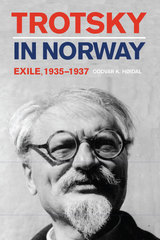 Trotsky in Norway: Exile, 1935=1937
Oddvar K. Hoidal
Northern Illinois University Press, 2013
From the moment of Lev Trotsky’s sensational and unannounced arrival in Oslo harbor in June 1935 he became the center of controversy. Although it was to be the shortest of his four exiles, this period of his life was a significant one. From Norway he increased his effort to create a Fourth International, encouraging his international followers to challenge Stalin’s dominance over world communism. In Norway Trotsky wrote his last major book, The Revolution Betrayed, in which he presented himself as the true heir to the Bolshevik Revolution, maintaining that Stalin had violated the Revolution’s ideals. His efforts to threaten Stalin from outside of Russia created international repercussions.
At first, Trotsky lived peacefully, without a guard and enjoying more freedom in Norway than he experienced in any other country following his expulsion from the U.S.S.R. Then, at the first Moscow show trial of August 1936 he was accused of being an international terrorist who organized conspiracies from abroad with the intention of murdering Russian leaders and destroying the Soviet state. Wishing to maintain good relations with its powerful neighbor, the Norwegian cabinet placed Trotsky under house arrest. Internment soon followed. He became the subject of political dispute between the socialist Labor Party government that had granted him asylum and opposition parties from the extreme right to the extreme left. In the national election of October 1936 the issue appeared to threaten the very existence of Norway’s first permanent socialist administration. After the election, the Labor government was determined to expel him. No European country would allow him entry, and when Mexico proved willing to offer a final refuge, Trotsky was involuntarily dispatched under police guard to Tampico on board a Norwegian ship.
Trotsky in Norwaypresents a fascinating account—the first complete study in English—of Trotsky's asylum in Norway and his deportation to Mexico. Although numerous biographies of Trotsky have been published, their coverage of his Norwegian sojourn has been inadequate, and in some cases erroneous. A revised and updated edition of Høidal’s highly regarded Norwegian study, published in 2009, this book incorporates information that has since become available. In highly readable prose,Høidal presents new biographical details about a significant period in Trotsky’s life and sheds light on an important chapter in the history of international socialism and communism.
 Trotsky’s Diary in Exile, 1935: Revised Edition
Leon Trotsky
Harvard University Press, 1976 This diary of the exiled Trotsky is a powerfully evocative fragment of history and human personality. Of all the great figures of the Russian revolution Leon Trotsky touches our senses as the one who lived, and felt, and died as other men. He breaks through, or is forced through the screen of dialectic and bombast that conceals his colleagues. Understandably, we feel curiosity about and some sympathy for the man who was driven out as he had driven others, who wandered the world in danger foreseeing assassination, and who was struck down by his enemies in his last sanctuary so close to us. His life as a fugitive is a single human tragedy and he is, simply, more interesting than the others.
This extremely personal record is no disappointment. Written in France and Norway, it gives the day-to-day reflections of a fallen leader, of one who had wielded power and was now in an exceptional position to observe it in the hands of others. Naturally there are penetrating comments here on local and international politics, often timeless in their relevance, but with them comes admission to the private world of the revolutionary intellectual. Here Trotsky lived with anguish, was beset by loneliness, and sustained himself by pride and fanaticism.
But his concern was not wholly with himself and the impersonalities of politics. He set down his continuing anxiety for the safety of his beloved son, Sergei, and of his first wife to whom he was still deeply attached. They were in Russia, their fate unknown to him. In extraordinarily moving and unaffected words, he wrote, too, of his tender, still youthful passion for his adored second wife, Natasha (Natalia Ivanovna Sedov), the wise and courageous companion of his fighting years, the loyal woman who accompanied him into exile.
Finally, and until now unknown, there is his Testament, written in Mexico in February 1940 near the close of his life. Knowing that death was near, from illness if not from Stalin’s agents, he envisaged the form it might take, restated his defiance of Stalin and his imperishable confidence in the triumph of the People, and once more affirmed his love for Natasha. At the end there is the discontinued and unexplained sentence, “In case we both die...”
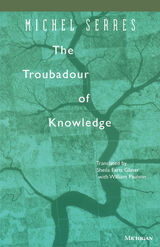 The Troubadour of Knowledge
Michel Serres
University of Michigan Press, 1997 What do we do when we raise a child, teach a student, or educate a person as a member of society? For the French philosopher Michel Serres, all of these forms of pedagogy require painful yet exhilarating departures from home and encounters with Otherness. Like a swimmer who plunges into the river's current to reach the opposite bank, the person who wishes to learn must risk a voyage from the familiar to the strange. True education, Serres writes, takes place in the fluid middle of this crossing. To be educated is to become a harlequin, a crossbreed, a hybrid of our origins--like a newborn child, complexly produced as a mixture of maternal and paternal genes, yet an independent existence, separated from the familiar and determined.
In this wide-ranging meditation on learning and difference, Serres--the scientist turned epistemologist, philosopher turned moralist, reveler of being a half-breed from every point of view--explores numerous pathways in philosophy, science, and literature to argue that the best contemporary education requires knowledge of both science's general truths and literature's singular stories. He heralds a new pedagogy which claims that from the crossbreeding of the humanities and the sciences a new educational ideal can be born: the troubadour of knowledge.
With his agile and poetic voice, Serres has created a meditation of precisely this pluralistic creation, deftly recognizing it as a third party bred not of orderly dialectics but of the destabilizing multiplicity of the present age. Those who know the enormous range and clarity of this thinker will welcome this latest volume translated into English by Sheila Glaser with the assistance of William Paulson.
Michel Serres has taught at Clermont-Ferrand, the University of Paris VIII [Vincennes], the Sorbonne, and Stanford University, and has served as visiting professor at Johns Hopkins University. Other works of his available in English translation include Conversations on Science, Culture, and Time (with Bruno Latour), Genesis, and The Natural Contract, also published by The University of Michigan Press.
Sheila Glaser is Reviews Editor of Artforum magazine. William Paulson is Professor of French and Chair of the Department of Romance Languages and Literatures at the University of Michigan.
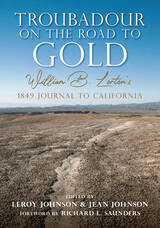 Troubadour on the Road to Gold: William B. Lorton's 1849 Journal to California
Edited by LeRoy Johnson and Jean Johnson, Foreword by Richard Saunders
University of Utah Press, 2020 During the California Gold Rush, many of the miners and merchants who hoped to strike it rich in California left behind letters and journals that provide valuable insights into one of the great migrations in American history. Of all the journals and diaries left behind, William B. Lorton's is perhaps the most informative and complete. Although known to historians for decades, Lorton’s journal has never been published. In this volume, LeRoy and Jean Johnson bring Lorton’s writings to life with meticulous research and commentary that broadens the context of his narrative.
Lorton’s work is revealing and entertaining. It captures glimpses of a growing Salt Lake City, the hardships of Death Valley, and the extraordinary and mundane aspects of daily life on the road to gold. With resilience and a droll sense of humor, Lorton shares accounts
of life-threatening stampedes, dangerous hailstorms, mysteriously moving rocks, and slithering sidewinders. The inclusion of images, maps, and the editors’ detailed notes make this a volume that will entertain and inform.
 Troubadours, Trumpeters, Troubled Makers: Lyricism, Nationalism, and Hybridity in China and Its Others
Gregory B. Lee
Duke University Press, 1996 How have the lyrics of poets and songwriters, traditionally voices of protest against domination and exploitation in Chinese society, responded to the forces of cultural imperialism and nationalistic ideology that have accompanied the modernization of Chinese society in the last half of this century. Gregory B. Lee suggests that the response can be seen in a proliferation of hybrid lyric forms and cultures—from both within China and beyond—and that China’s "culture of lyricism" contributes in powerful, significant, and often resistant ways to the nation’s sense of itself and its encounter with modernity.
Lee’s broad definition of lyric includes the work of poets, amateur versifiers, and all manner of popular songwriters, and his inclusive sense of nation refers to all Chinese communities regardless of geographic location. Whether examining the globalized consumption of satellite-broadcast pop music or the heroic efforts of little-known poets on the margins of the Chinese diaspora, he finds a questioning and contesting of both the Orientalist construction of a mythic monolithic China invented by the West and the Chinese obsession with ideas of authenticity and purity of nationhood. Lee explores the lyrical transgression of these ideological boundaries in China, in the Chinese communities of America and Britain, and in other marginalized communities, before using the examples of Hong Kong and other non-nationalistic sites to discuss the creative possibilities of hybrid cultures and societies.
 Trouble in Censorville: The Far Right's Assault on Public Education and the Teachers Who are Fighting Back
Nadine M. Kalin and Rebekah Modrak
Disobedience Press, 2024 From Florida, whose “Don’t Say Gay” law prohibits K-12 instruction on gender identity and sexual orientation, to Texas, which is shuttering libraries in schools, America is in the middle of a far-right war on public education.
Now, for the first time, K-12 educators from across the nation give readers a teacher’s-eye view of the radical right crusade to take down public education, coordinated by well-funded, well-connected far-right political interests. Christian nationalists hell-bent on erasing the line between church and state, white supremacists opposed to a curriculum that teaches the enduring effects of anti-Black racism, political action committees, such as Moms for Liberty, calling for the banning of novels featuring LGBTQ+ people, and profiteers eager to divert taxpayer dollars into private schools are mounting a relentless attack on teachers, the students they serve, and the commitment to public education that is a cornerstone of democracy. “It’s a phenomenal, unprecedented moment that we’re in,” says a librarian, recently retired from her Texas school. “It’s surprising how many people don’t know what’s going on. I talk to reporters who have no idea. And they’re reporters.”
In Trouble in Censorville, public school teachers from states as far-flung as Florida, Texas, Kentucky, New Jersey, Tennessee, Wisconsin, and Washington describe, in their own words, being threatened, stalked, doxxed, ostracized, smeared as “pedophiles" and "Marxists," placed on leave, and fired for teaching historical truth and racial justice, supporting LGBTQ+ students and, in one case, for wearing "insufficiently" feminine attire. Their stories bring readers face-to-face with the human cost of these attacks, which range from social isolation to pent-up anger over institutional betrayal to the terrible toll on teachers’ mental and physical health.
And yet, teachers are fighting back. They’re mobilizing colleagues, parents, and community members who share their faith in the freedom to read, the freedom to think critically, the freedom to challenge small-minded provincialism. Their stories of frontline resistance, collected here, provide a battle plan for confronting censorship, rallying support, and mobilizing a grassroots defense of public schools.
Their gripping testimonials are enhanced by a timeline that situates today’s far-right war on public education in the context of American history, moving briskly from Reconstruction to the anti-left and anti-gay fearmongering of the McCarthy era to the Black Lives Matter movement to the Trump presidency.
Terrifying, infuriating, and inspiring, Trouble in Censorville sounds the alarm for a democracy on fire.
 Trouble in the Forest: California’s Redwood Timber Wars
Richard Widick
University of Minnesota Press, 2009 Wars over natural resources have been fiercely fought in the Humboldt Bay redwood region of Northern California, a situation made devastatingly urgent in recent decades of timber war that raised questions of economic sustainability and ecological preservation. In Trouble in the Forest, Richard Widick narrates the long and bloody history of this hostility and demonstrates how it exemplifies the key contemporary challenge facing the modern societies-the collision of capitalism, ecology, and social justice. An innovative blend of social history, cultural theory, and ethnography, Trouble in the Forest traces the origins of the redwood conflict to the same engines of modernity that drove the region's colonial violence against American Indians and its labor struggles during the industrial revolution. Widick describes in vivid detail the infamous fight that ensued when Maxxam Inc. started clearing ancient forests in Humboldt after acquiring the Pacific Lumber Company in 1985, but he also reaches further back and investigates the local Indian clashes and labor troubles that set the conditions of the timber wars. Seizing on public flash points of each confrontation-including the massacre of Wiyot on Indian Island in 1860, the machine-gunning of redwood strikers by police and company thugs during the great lumber strike of 1935, and the car bombing of forest defenders in 1990-Widick maps how the landscape has registered the impact of this epochal struggle, and how the timber wars embody the forces of market capitalism, free speech, and liberal government. Showing how events such as an Indian massacre and the death of a protester at the hands of a logger create the social memory and culture of timber production and environmental resistance now emblematic of Northern California's redwood region, Trouble in the Forest ultimately argues that the modern social imaginary produced a perpetual conflict over property that fueled the timber wars as it pushed toward the western frontier: first property in land, then in labor, and now in environment.
Trouble Lights
William Olsen
Northwestern University Press, 2001 Traveling from the rural Midwest and Chicago to the outposts of Cornwall and Guangzhou, William Olsen searches for the miracle of wholeness in small details. An urgency inhabits his poems as they lament and protest a pandemic disrespect for all things natural and the replacement of such with material progress. It is his distinct awe for our universe that offers hope for retrieving all that is being lost.
Trouble Sleeping
Abdul Ali
New Issues Poetry and Prose, 2015 "Ali’s poems consistently engage black history and pop culture as windows into more personal, yet deeply political, realms: 'Begin with a shooting,/ a controversial art exhibit, a mob throwing dung at the Black Madonna'. . . Ali’s willful, complex collection marks him as a poet to watch."
— Publisher’s Weekly
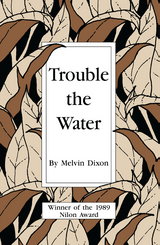 Trouble the Water
Melvin Dixon
University of Alabama Press, 1989 A haunting and poetic journey of memory, identity, and reconciliation in the heart of the Black South. Winner of the Excellence in Minority Fiction Award Trouble the Water moves among finely woven layers of time and place as it takes on a new and controversial theme in contemporary black writing, the search for family reconciliation. Twenty years after running away from home in Pee Dee, North Carolina, Jordan Henry believed he had found success, as a young college professor of history, a married man, and a resident of New England, whose colonial past he knew so well. When Jordan finds his career stymied by local prejudices, his world crumbles. Word of his grandmother's death reaches him, and he returns home to claim the ambiguous legacy of her farmland and face the consequences of his long absence. Jordan's estranged father also returns to Pee Dee on a quest of his own restoring his good name in a community which blames him for Chloe Henry's death in childbirth. Chloe was Jordan's mother and his grandmother's only child. Unresolved hostility in the family and in the community breaks out, making Jordan the unsuspecting pawn in a plot of revenge against his father. Jordan may be the only one who can free his family from the past and the equally troubled present. Trouble the Water gains resonance from its unflinching confrontation with dualities common in the Afro-American experience: reality and myth, folklore and sophistication, North and South, rural and cosmopolitan. While sacrificing none of its complexities for the sake of simplicity, it has the relentless movement of a fairy tale that reaches deep into the unconscious roots of behavior. It is intensely lyrical and dense in realism. Trouble the Water is magical in the way it reveals the Afro-American psyche and symbolizes fundamental truths about American life.
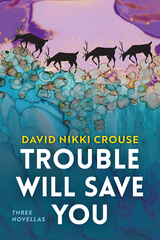 Trouble Will Save You: Three Novellas
David Nikki Crouse
University of Alaska Press, 2023 In these three deeply observed novellas, award-winning author David Nikki Crouse dramatizes the lives of women living in Interior Alaska. Each novella acts as an extended meditation on grief, loss, and the nature of imagination. Crouse’s usual storytelling gifts are on full display here, but the darkness found in past short story collections is balanced by images of stark beauty. In “Misfortune and Its Double,” a woman remembers—and manufactures—the story of an arduous cross-country drive that might not be entirely true. “A Rough Map of the Interior” follows a woman’s life from suicide attempt to hospitalization to a new kind of self-knowledge, and “Asmodeus Speaks” lingers on a Dungeon and Dragons roleplaying game in remote Fairbanks and its disruption when one of its players, a young Yupik man, goes missing.
While Crouse’s prize-winning collection of short fiction The Man Back There offered up insights into a kind of self-destructive masculinity, these novellas now sensitively and persuasively capture the inner landscapes of women struggling with grief and isolation. Trouble Will Save You is a unique and fully realized work from a keenly empathetic writer.
Praise for The Man Back There:
“In this virtuoso collection of stories, David Crouse guides us directly to where the shadow lies—the disorienting loss, the surprising heartache, the forgotten wound—those inevitable areas of the psyche we all share and through which only truth, illuminated with a such a light touch here, can deliver us; The Man Back There is the work of the real thing.”
—Andre Dubus III, author of House of Sand and Fog
“I chose these stories because they made me feel. I felt the characters like I would feel a stranger in a room or on a bus with me, with an irrational sympathy more animal than moral in its nature.”
—Mary Gaitskill, 2007 Mary McCarthy Prize judge
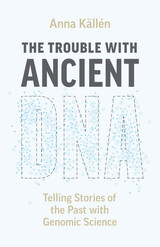 The Trouble with Ancient DNA: Telling Stories of the Past with Genomic Science
Anna Källén
University of Chicago Press, 2025 A thoughtful consideration of the storytelling and science behind ancient DNA discoveries.
In recent years, discoveries brought to light through analysis of ancient DNA—or aDNA—have made headlines around the world. While ancient DNA studies may appear to focus on laboratory science and objective results, the findings have also relied heavily on storytelling and can be influenced by political interests.
In The Trouble with Ancient DNA, Anna Källén explores how the parameters of genetic science influence the stories we tell about our ancient ancestors, questioning what narratives we can and should take at face value. Through accounts of migrations, warriors, and figures like Cheddar Man, we see enticing and potent narratives that reach far beyond what can be gathered from the scientific study of molecules alone. Rather, by privileging certain narratives and questions—like those about sex or eye and skin color—our stories of ancient DNA are spun around the structure of today’s methodologies, technologies, and popular and political interests. Källén considers how DNA is used to sensationalize stories, how its use poses questions of ethics and care, and who is responsible if stories of ancient DNA are adopted for dangerous political projects.
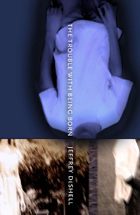 The Trouble with Being Born: A Novel
Jeffrey DeShell
University of Alabama Press, 2008 Novel, memoir, and anti-memoir, The Trouble with Being Born depicts the lives of Frances and Joe, husband and wife. Told in their own alternating voices, they recall their lives, separately and together, and the divergent trajectories of their origins and aspirations. Frances's story moves in reverse: beginning with her dementia in old age, her narrative moves backwards into lucidity, through a cruel and loveless marriage, the birth of her son Jeffrey, and into a childhood that she recalls fondly as a time of innocence and belonging. Joe's memories begin in childhood, a bewildered boy struggling with poverty, racism, and isolation, and we watch him grow into a manhood fraught with wrong turns, rage, betrayals, and disappointment, caring in the end for the woman he has long mistreated. The Trouble with Being Born is a stark meditation on memory and the struggle–both necessary and impossible–to remember.
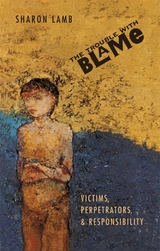 The Trouble with Blame: Victims, Perpetrators, and Responsibility
Sharon Lamb
Harvard University Press, 1996 Blame society. Blame a bad upbringing. Blame the circumstances. Blame the victim--she may even blame herself. But what about the perpetrator? When the blame is all assigned, will anyone be left to take responsibility?
This powerful book takes up the disturbing topic of victimization and blame as a pathology of our time and its consequences for personal responsibility. By probing the psychological dynamics of victims and perpetrators of rape, sexual abuse, and domestic violence, Sharon Lamb seeks to answer some crucial questions: How do victims become victims and sometimes perpetrators? How can we break the psychological circle of perpetrators blaming others and victims blaming themselves? How do victims and perpetrators view their actions and reactions? And how does our social response to them facilitate patterns of excuse?
With clarity and compassion, Lamb examines the theories, excuses, and psychotherapies that strip both victims of their power and perpetrators of their agency--and thus deprive them of the means to human dignity, healing, and reparation. She shows how the current practice of painting victims as pure innocents may actually help perpetrators of abuse to shirk responsibility for their actions; they too can claim to be victims in their own right, passive and will-less in their wrongdoing.
The Trouble with Blame clarifies the social cost (quickly becoming so apparent) of letting perpetrators off too easily, and points out the dangers of over-emphasizing victimization, two problems which eclipse our dire need for accountability and recovery.
 The Trouble with Community: Anthropological Reflections on Movement, Identity and Collectivity
Vered Amit and Nigel Rapport
Pluto Press, 2002 'Community' is one of social science's longest-standing concepts. The assumption, of much social science, has been that it is in communities -- and to communities -- that human individuals, as social and cultural beings, belong. Communities are said to embody that interactive environment from which individuals' identities and senses of self derive, and in which they continue to dwell.
The trouble with 'community' is that this is not necessarily so; the personal social networks of individuals' actual experience crosscut collective categories, situations and institutions. Communities can prove unviable or imprisoning; the reality of community life and identity can often be very different from the ideology and the ideal.
In this provocative new book, anthropologists Vered Amit and Nigel Rapport draw on their various ethnographic experiences to reappraise the concept and the reality of 'community', in the light of globalization, religious fundamentalism, identity politics, and renascent localisms. How might anthropology better apprehend social identities which are intrinsically plural, transgressive and ironic? What has anthropology to say about the way in which civil society might hope to accommodate the on-going construction and the rightful expression of such migrant identities? Nigel Rapport and Vered Amit give their own answers to these questions before entering into dialogue to assess each other's positions.
Nigel Rapport is Professor of Anthropological and Philosophical Studies at the University of St. Andrews. He is author of Transcendent Individual (1997). Vered Amit is an Associate Professor at Concordia University in Montreal. She is the editor of Realizing Community (2002).
The Trouble with Confucianism
Wm. Theodore de Bary
Harvard University Press, 1991 In Singapore, Korea, Taiwan, Japan, and other parts of East and Southeast Asia, as well as China, people are asking, "What does Confucianism have to offer today?" For some, Confucius is still the symbol of a reactionary and repressive past; for others, he is the humanist admired by generations of scholars and thinkers, East and West, for his ethical system and discipline. In the face of such complications, only a scholar of Theodore de Bary's stature could venture broad answers to the question of the significance of Confucianism in today's world.
 The Trouble with Government
Derek Bok
Harvard University Press, 2001 In the past thirty years, Americans have lost faith in their government and the politicians who lead it. They have blamed Washington for a long list of problems, ranging from poor schools to costly medical care to high rates of violent crime. After investigating these complaints and determining that many are justified, Derek Bok seeks to determine the main reasons for the failings and frustrations associated with government.
Discounting three common explanations--deteriorating leadership, the effect of the media on the political process, and the influence of interest groups--Bok identifies four weaknesses that particularly need explaining: a persistent tendency by Congress to design programs poorly; to impose expensive and often quixotic regulations that produce only modest results; to do less than other leading democracies to protect working people from illness, unemployment, and other basic hazards of life; and to leave large numbers of people, especially children, living in poverty.
Bok goes on to explore the reasons for these fundamental weaknesses and to discuss popular remedies such as term limits, devolution, "reinventing" government, and campaign finance reform. While some of these proposals have merit, Bok finds a deeper, more troubling paradox: Americans want to gain more power over their government, but are devoting less time to exerting a constructive influence. Their dissatisfaction with government is growing as their participation in the political process is declining. These contradictory trends, Bok argues, contribute to the problems of our democracy. Fortunately, there are many concrete steps that Americans can take to be politically engaged and to help their government improve its performance.
"Democracy," Bok concludes, "is a collective venture which falters or flourishes depending on the efforts citizens invest in its behalf."
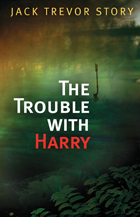 The Trouble with Harry
Jack Trevor Story
Westholme Publishing, 1949
"As engaging a tale as I have encountered in months of looking for something really amusing to read.”—Kelsey Guilfoil, Chicago Tribune
“A pleasantly muted mystery that is genuinely funny fantasy as well.”—New York Times
On the outskirts of a small English town, young Arnie discovers the body of a middle-aged man in the woods. Three people are convinced they are responsible for the death: the captain thinks he accidentally shot the man while hunting rabbits; the local spinster thinks she may have done more damage than she intended when she hit him with her shoe—and Arnie’s mother, most damningly of all, reveals that the man is her long-lost husband, Harry, and that she had smashed a bottle over his head when he suddenly reappeared.
The police are called in to investigate the crime, but free-thinking artist Sam Marlowe becomes a good-natured sleuth, helping the townspeople to bury, dig up, and rebury the corpse in an effort to evade the authorities and discover the truth. While no one is particularly troubled by Harry’s death, everyone feels some guilt over the apparent murder. In the end, two couples fall in love, Arnie has a new father, and the mystery is happily solved.
First published in 1949, The Trouble with Harry was one of Jack Trevor Story’s early successes. Written with wit and insight, the novel was a bestseller and praised for both its succinct style and its original blend of mystery and humor. The story was adapted by Alfred Hitchcock for his film of the same name in 1955.
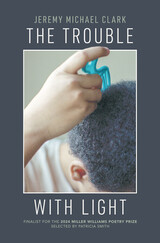 The Trouble with Light
Jeremy Michael Clark
University of Arkansas Press, 2024 In The Trouble with Light, Jeremy Michael Clark reflects on the legacy of familial trauma as he delves into questions about belonging, survival, knowledge, and self-discovery in unflinching lyrical poems. “Like you,” he writes, “I have . . . [a] history of / hardly caring for my body, of letting / whoever drink their share of me, / thinking it could cure / my fear of dirt.” Whether ruminating on intimacy, lineage, identity, faith, or addiction, Clark’s poems embody a restless, rigorous curiosity. Largely set in the poet’s hometown of Louisville, Kentucky, his portraits of interiority gracefully juxtapose the sorrows of alienation and self-neglect with the restorative power of human connection. In one of the most affectionate—and characteristically ambivalent—poems in the collection, Clark recalls, “For days, doubt struck as does lightning / across the span of night. . . . Love? If it exists, / it’s the uncertainty one feels before a thunderclap, / after the sky’s gone dark again.” A vulnerable and transporting debut, The Trouble with Light is a vital record of how grief can endure, and how we can yet endure ourselves.
 The Trouble with Men: Reflections on Sex, Love, Marriage, Porn, and Power
David Shields
Ohio State University Press, 2019 David Shields’s The Trouble with Men: Reflections on Sex, Love, Marriage, Porn, and Power is an immersion into the perils, limits, and possibilities of human intimacy. All at once a love letter to his wife, a nervy reckoning with his own fallibility, a meditation on the impact of porn on American culture, and an attempt to understand marriage (one marriage, the idea of marriage, all marriages), The Trouble with Men is exquisitely balanced between the personal and the anthropological, nakedness and restraint. While unashamedly intellectual, it’s also irresistibly readable and extremely moving. Over five increasingly intimate chapters, Shields probes the contours of his own psyche and marriage, marshalling a chorus of other voices that leaven, deepen, and universalize his experience; his goal is nothing less than a deconstruction of eros and conventional masculinity. Masterfully woven throughout is an unmistakable and surprisingly tender cri de coeur to his wife. The risk and vulnerability on display are in the service of radical candor, acerbic wit, real emotion, and profound insight—exactly what we’ve come to expect from Shields, who, in an open invitation to the reader, leaves everything on the page.
The Trouble with Normal: Sex, Politics, and the Ethics of Queer Life
Michael Warner
Harvard University Press Michael Warner, one of our most brilliant social critics, argues that gay marriage and other moves toward normalcy are bad not just for the gays but for everyone. In place of sexual status quo, Warner offers a vision of true sexual autonomy that will forever change the way we think about sex, shame, and identity.
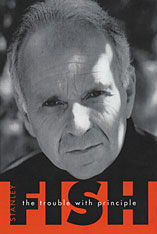 The Trouble with Principle
Stanley Fish
Harvard University Press, 2001 Stanley Fish is an equal opportunity antagonist. A theorist who has taken on theorists, an academician who has riled the academy, a legal scholar and political pundit who has ruffled feathers left and right, Fish here turns with customary gusto to the trouble with principle. Specifically, Fish has a quarrel with neutral principles. The trouble? They operate by sacrificing everything people care about to their own purity. And they are deployed with equal highmindedness and equally absurd results by liberals and conservatives alike.
In this bracing book, Fish argues that there is no realm of higher order impartiality--no neutral or fair territory on which to stake a claim--and that those who invoke one are always making a rhetorical and political gesture. In the end, it is history and context, the very substance against which a purportedly abstract principle defines itself, that determines a principle's content and power. In the course of making this argument, Fish takes up questions about academic freedom and hate speech, affirmative action and multiculturalism, the boundaries between church and state, and much more. Sparing no one, he shows how our notions of intellectual and religious liberty--cherished by those at both ends of the political spectrum--are artifacts of the very partisan politics they supposedly transcend. The Trouble with Principle offers a provocative challenge to the debates of our day that no intellectually honest citizen can afford to ignore.
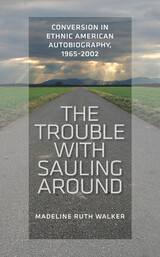 The Trouble with Sauling Around: Conversion in Ethnic American Autobiography, 1965-2002
Madeline R. Walker
University of Iowa Press, 2011 Examining autobiographical texts by Malcolm X (The Autobiography of Malcolm X), Oscar Zeta Acosta (The Autobiography of a Brown Buffalo and Revolt of the Cockroach People), Amiri Baraka (The Autobiography of LeRoi Jones), and Richard Rodriguez (Hunger of Memory, Days of Obligation, and Brown), Walker questions the often rosy views and simplistic binary conceptions of religious conversion. Her reading of these texts takes into account the conflict and serial changes the authors experience in a society that marginalizes them, the manner in which religious conversion offers ethnic Americans “salvation” through cultural assimilation or cultural nationalism, and what conversion, anticonversion, and deconversion narratives tell us about the problematic effects of religion that often go unremarked because of a code of “special respect” and political correctness. Walker asserts that critics have been too willing to praise religion in America as salutary or beyond the ken of criticism because religious belief is seen as belonging to an untouchable arena of cultural identity. The Trouble with Sauling Around goes beyond traditional literary criticism to pay close attention to the social phenomena that underlie religious conversion narratives and considers the potentially negative effects of religious conversion, something that has been likewise neglected by scholars.
The Trouble with Science
Robin Dunbar
Harvard University Press, 1996 In The Trouble with Science, Robin Dunbar asks whether science really is unique to Western culture, even to humankind. He suggests that our "trouble with science"--our inability to grasp how it works, our suspiciousness of its successes--may lie in the fact that evolution has left our minds better able to cope with day-to-day social interaction than with the complexities of the external world.
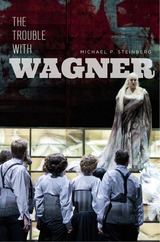 The Trouble with Wagner
Michael P. Steinberg
University of Chicago Press, 2018 In this unique and hybrid book, cultural and music historian Michael P. Steinberg combines a close analysis of Wagnerian music drama with a personal account of his work as a dramaturg on the bicentennial production of The Ring of the Nibelung for the Teatro alla Scala Milan and the Berlin State Opera. Steinberg shows how Wagner uses the power of a modern mythology to heighten music’s claims to knowledge, thereby fusing not only art and politics, but truth and lies as well. Rather than attempting to separate value and violence, or “the good from the bad,” as much Wagner scholarship as well as popular writing have tended to do, Steinberg proposes that we confront this paradox and look to the capacity of the stage to explore its depths and implications.
Drawing on decades of engagement with Wagner and of experience teaching opera across disciplines, The Trouble with Wagner is packed with novel insights for experts and interested readers alike.
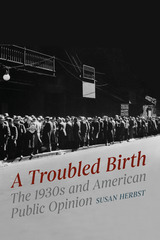 A Troubled Birth: The 1930s and American Public Opinion
Susan Herbst
University of Chicago Press, 2021 Pollsters and pundits armed with the best public opinion polls failed to predict the election of Donald Trump in 2016. Is this because we no longer understand what the American public is? In A Troubled Birth, Susan Herbst argues that we need to return to earlier meanings of "public opinion" to understand our current climate.
Herbst contends that the idea that there was a public—whose opinions mattered—emerged during the Great Depression, with the diffusion of radio, the devastating impact of the economic collapse on so many people, the appearance of professional pollsters, and Franklin Roosevelt’s powerful rhetoric. She argues that public opinion about issues can only be seen as a messy mixture of culture, politics, and economics—in short, all the things that influence how people live. Herbst deftly pins down contours of public opinion in new ways and explores what endures and what doesn’t in the extraordinarily troubled, polarized, and hyper-mediated present. Before we can ask the most important questions about public opinion in American democracy today, we must reckon yet again with the politics and culture of the 1930s.
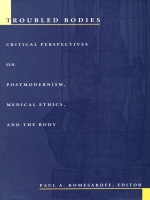 Troubled Bodies: Critical Perspectives on Postmodernism, Medical Ethics, and the Body
Paul A. Komesaroff
Duke University Press, 1995 Setting out the implications of the postmodern condition for medical ethics, Troubled Bodies challenges the contemporary paradigms of medical ethics and reconceptualizes the nature of the field. Drawing on recent developments in philosophy, philosophy of science, and feminist theory, this volume seeks to expand familiar ethical reflections on medicine to incorporate new ways of thinking about the body and the dilemmas raised by recent developments in medical techniques.
These essays examine the ways in which the consideration of ethical questions is shaped by the structures of knowledge and communication at work in clinical practice, by current assumptions regarding the concept of the body, and by the social and political implications of both. Representing various perspectives including medicine, nursing, philosophy, and sociology, these essays look anew at issues of abortion, reproductive technologies, the doctor-patient relationship, the social construction of illness, the cultural assumptions and consequences of medicine, and the theoretical presuppositions underlying modern psychiatry. Diverging from the tenets of mainstream bioethics, Troubled Bodies suggests that, rather than searching for the correct "coherent perspective" from which to draw ethical principles, we must apprehend the complexity and diversity of the discursive systems within which we dwell.
The Troubled Dream of Life: In Search of a Peaceful Death
Daniel Callahan
Georgetown University Press Drawing on his own experience, and on literature, philosophy, and medicine, Daniel Callahan offers great insight into how to deal with the rewards of modern medicine without upsetting our perception of death. He examines how we view death and the care of the critically ill or dying, and he suggests ways of understanding death that can lead to a peaceful acceptance. Callahan's thoughtful perspective notably enhances the legal and moral discussions about end-of-life issues. Originally published in 1993 by Simon and Schuster.
A Troubled Dream: The Promise and Failure of School Desegregation in Louisiana
Carl L. Bankston
Vanderbilt University Press, 2002 Fifty years after Brown v. Board of Education, the United States still has a long way to go to attain true integration of our educational system. Using extensive interviews and a wealth of statistical information, Bankston and Caldas examine the failed desegregation efforts in Louisiana as a case study to show how desegregation has followed the same unsuccessful pattern across the United States. Strong supporters of the dream of integration, Bankston and Caldas show that the practical difficulty with desegregation is that academic environments are created by all the students in a school from the backgrounds that all the students bring with them. Unfortunately, the disadvantages that minority children have to overcome affect schools more than schools can help remedy these disadvantages.
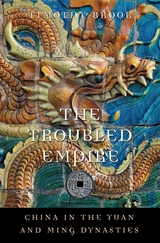 The Troubled Empire: China in the Yuan and Ming Dynasties
Timothy BrookTimothy Brook is General Editor of the History of Imperial China
Harvard University Press, 2013 The Mongol takeover in the 1270s changed the course of Chinese history. The Confucian empire—a millennium and a half in the making—was suddenly thrust under foreign occupation. What China had been before its reunification as the Yuan dynasty in 1279 was no longer what it would be in the future. Four centuries later, another wave of steppe invaders would replace the Ming dynasty with yet another foreign occupation. The Troubled Empire explores what happened to China between these two dramatic invasions.If anything defined the complex dynamics of this period, it was changes in the weather. Asia, like Europe, experienced a Little Ice Age, and as temperatures fell in the thirteenth century, Kublai Khan moved south into China. His Yuan dynasty collapsed in less than a century, but Mongol values lived on in Ming institutions. A second blast of cold in the 1630s, combined with drought, was more than the dynasty could stand, and the Ming fell to Manchu invaders.Against this background—the first coherent ecological history of China in this period—Timothy Brook explores the growth of autocracy, social complexity, and commercialization, paying special attention to China’s incorporation into the larger South China Sea economy. These changes not only shaped what China would become but contributed to the formation of the early modern world.
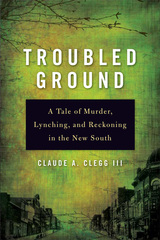 Troubled Ground: A Tale of Murder, Lynching, and Reckoning in the New South
Claude A. Clegg III
University of Illinois Press, 2010 In Troubled Ground, Claude A. Clegg III revisits a violent episode in his hometown's history that made national headlines in the early twentieth century but disappeared from public consciousness over the decades. Moving swiftly between memory and history, between the personal and the political, Clegg offers insights into southern history, mob violence, and the formation of American race ideology while coming to terms on a personal level with the violence of the past. Three black men were killed in front of a crowd of thousands in Salisbury, North Carolina, in 1906, following the ax murder of a local white family for whom the men had worked. One of the lynchers was prosecuted for his role in the execution, the first conviction of its kind in North Carolina and one of the earliest in the country. Yet Clegg, an academic historian who grew up in Salisbury, had never heard of the case until 2002 and could not find anyone else familiar with the case. In this book, Clegg mines newspaper accounts and government records and links the victims of the 1906 case to a double-lynching in 1902, suggesting a complex history of lynching in the area while revealing the determination of the city to rid its history of a shameful and shocking chapter. The result is a multi-layered, deeply personal exploration of lynching and lynching prosecutions in the United States.
|
|
